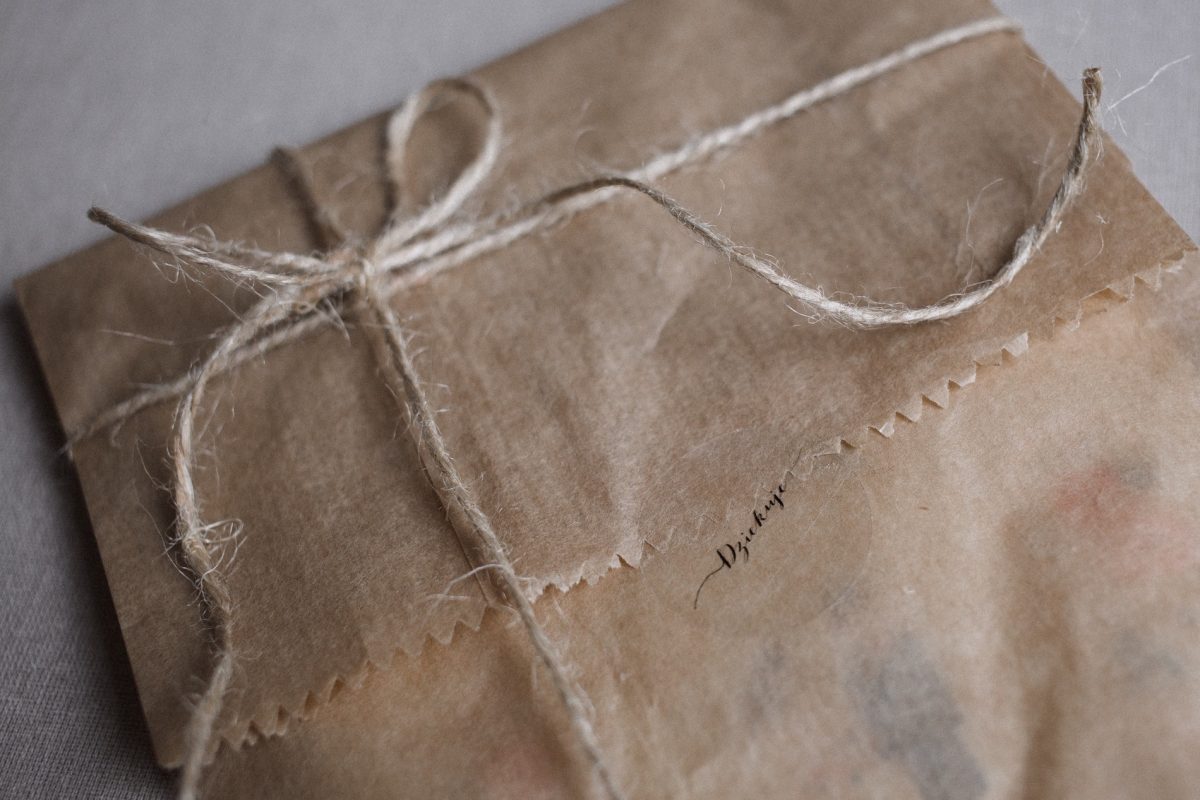https://www.noissue.co/blog/
Sun, 20 Oct 2019 06:01:01 +0000 Zend_Feed http://blogs.law.harvard.edu/tech/rss https://www.noissue.co/blog/plastic-free-packaging/
Discussions about reducing waste and even being ‘zero waste’ are now entering the mainstream in every retail sector.
Why? Because consumers now take into account environmental practices when deciding what brands to support.
According to Nielsen, 66% of respondents in their 2015 study were willing to pay more for products from businesses committed to a positive environmental impact. This is up from 55% in 2014, and 50% in 2013!
The message is clear: eco-friendliness is now a high priority for consumers.
Due to rising concerns about plastic pollution, plastic free packaging designs are becoming a much bigger talking point. We commonly get questions from our customers on “what packaging materials should I use instead of plastic?” Or “what are the most environmentally friendly ways of packaging products?”
Although packaging without plastic might seem like an impossible dream, there are many green alternatives to plastic available. These not only save on waste – eco-friendly substitutes can also save your business money in the long run!
We’ve rounded up our top plastic free packaging ideas to help your business reduce its carbon footprint.
Sustainable Packaging in eCommerce: How To Maximize Efficiency
Sustainable Packaging: Keeping it Green
What is Green Packaging?
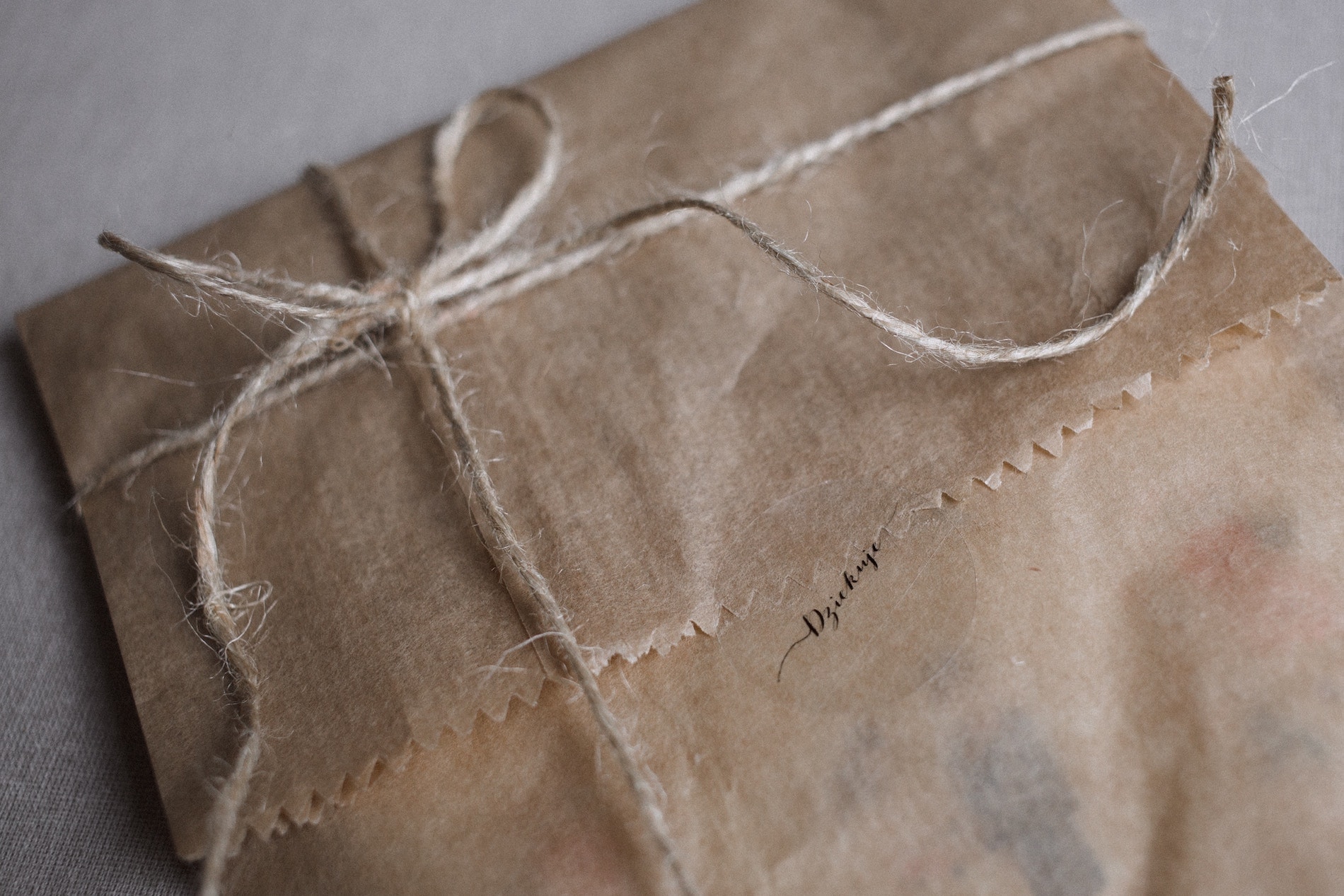
Use Paper Packaging as the Backbone For Your Design
One of the easiest ways to achieve a plastic free packaging design is to use paper as your main packaging material. Paper and cardboard are renewable materials that are easy to source. They are also inexpensive and can be used for a variety of different packaging elements.
The Advantages of Paper Packaging
Paper packaging is easy for consumers to dispose of because it’s fully recyclable. This is important, as one of the biggest complaints about eCommerce packaging is that it uses non-recyclable elements.
Moreover, studies have shown that paper packaging has more benefits than being environmentally-friendly. A survey by the Paper and Packaging Board found that 71% of consumers were more likely to buy from brands that use paper or cardboard packaging. A further 63% saw paper and cardboard packaging as making products appear more high-end.
Paper and cardboard can replace plastic packaging in a variety of different ways, such as:
Boxes and containers
Gift bags
Tissue paper packaging
Packaging filler e.g. crinkle-cut paper
To make your packaging design as eco-friendly as possible, you can use recycled paper and use FSC-certified suppliers. This ensures that your packaging materials have been sourced in the most sustainable way possible. That’s why we use it for our own custom tissue paper!
Because cardboard is a sturdy and durable material, there are also a lot of opportunities for reuse. If you encourage your customers to save your packaging, you can reduce waste overall.

Cosmetics retailer Byron Bay Bath Bombs use completely plastic free bath bomb packaging. The cardboard tubes used to send their products are 100% recyclable, and they also encourage customers to reuse them.
By offering up fun and quirky reuse ideas on social media, they are increasing the chance of their customers following suit!
Avoid Plastic Tape and stickers
Packing tape is an integral part of the order fulfillment toolkit for eCommerce businesses. But regular tape can have a big impact on the sustainability of your product packaging.
Most packing tape is given a plastic coating to make it stronger and reinforce the adhesive. However, the adhesive used in plastic tape weakens cardboard and paper fibers. This makes recycling even your plastic free packaging elements very difficult.
Many plasticized stickers also have the same issue. This makes certain times of the year with higher packaging needs responsible for huge amounts of plastic waste.
In the US, there is a 25% increase in household waste between Thanksgiving and the New Year. Tape, single-use gift wrapping and other packaging elements being the biggest contributors.
However, there are other options. noissue’s custom plastic-free packaging tape has a non-toxic adhesive that doesn’t affect the recyclability of your packaging. It’s also 100% compostable in a home or industrial compost heap!
Swapping out regular stickers for a compostable paper option is also a great way to maintain this decorative element in your packaging!
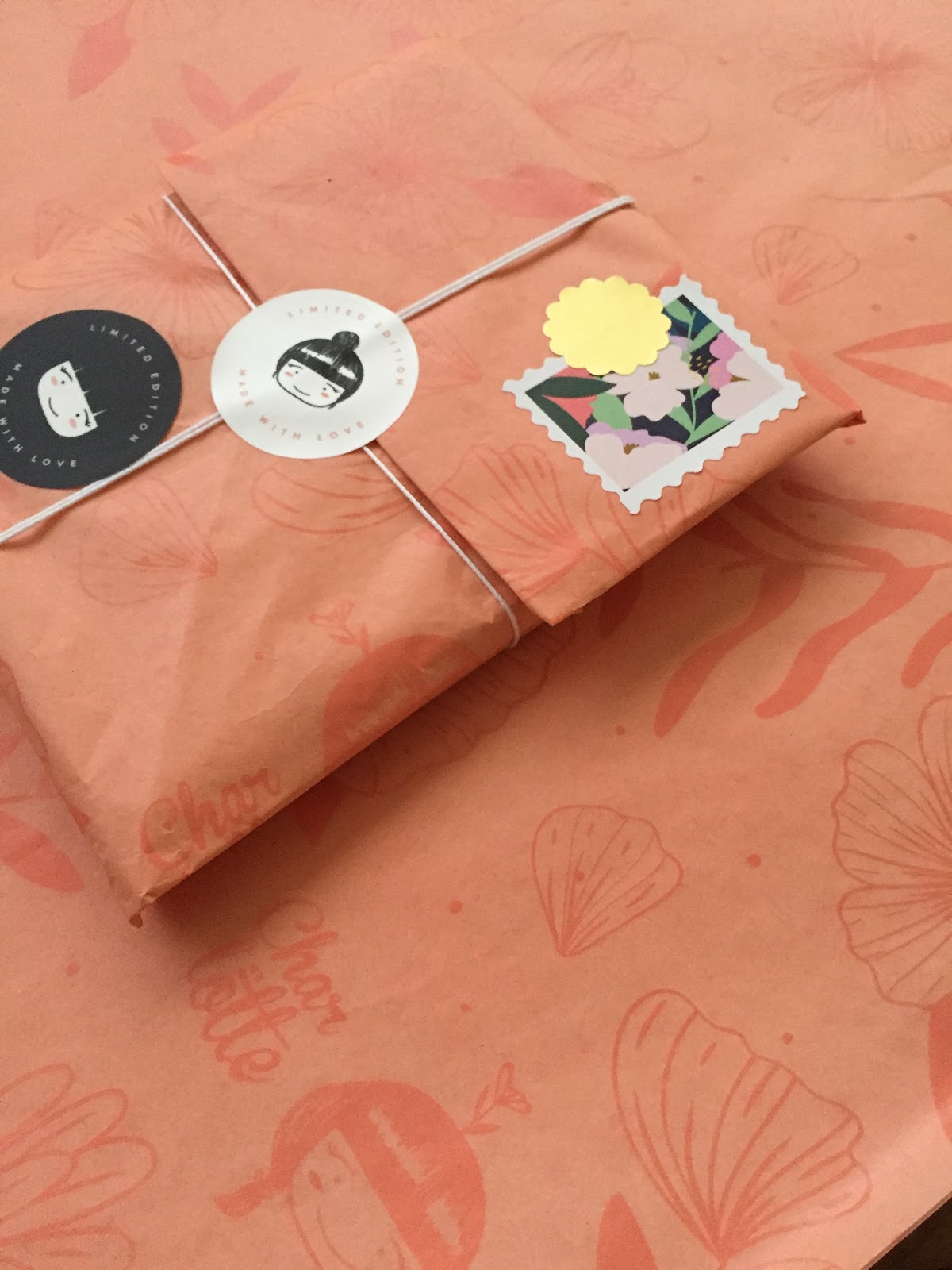
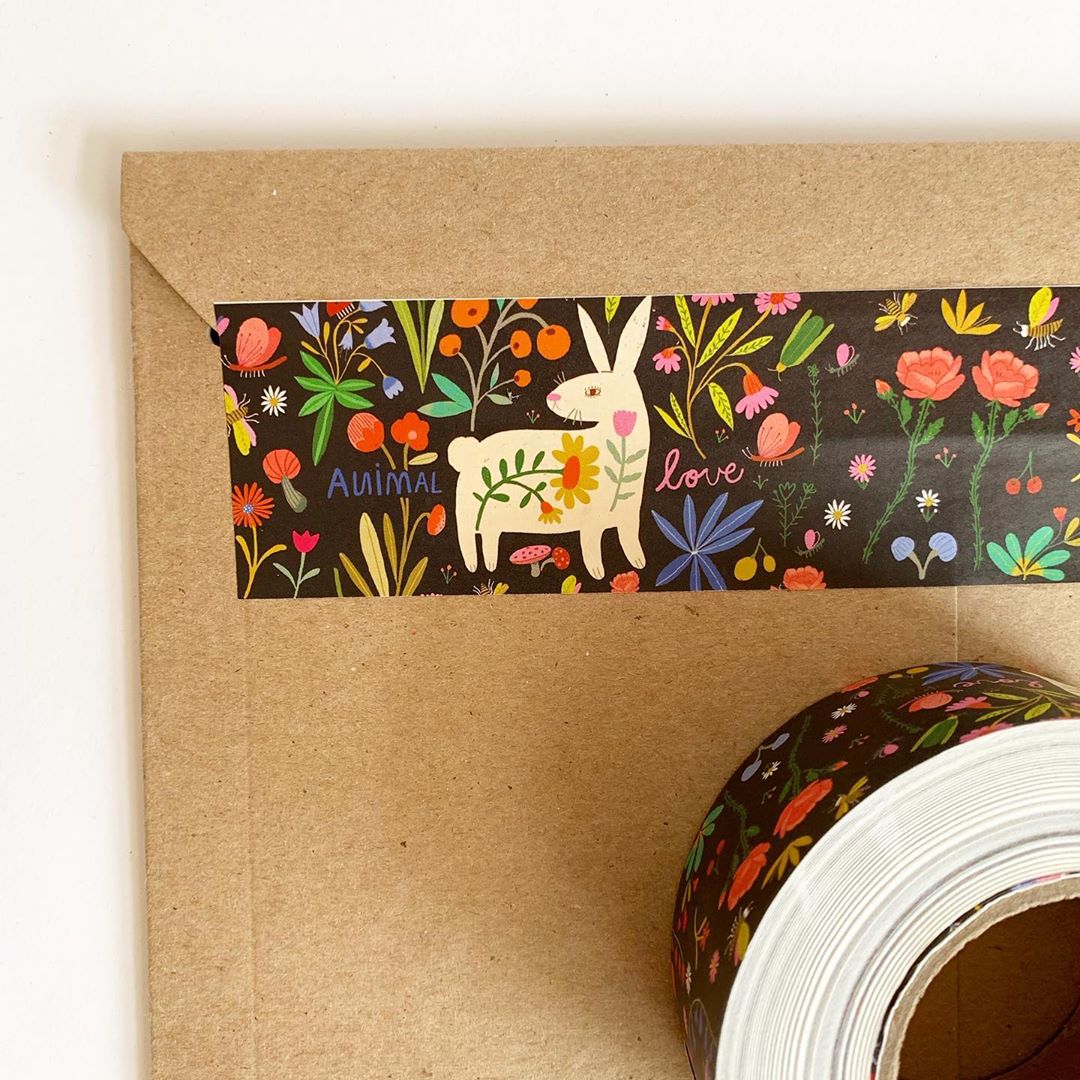
Swap Out Plastic Poly Mailers For Compostable Alternatives
Shipping mailers are a handy way to post your online orders. They cost less per unit than boxes and have smaller dimensions, meaning that you save money on shipping costs too!
However, regular poly mailers are made from soft plastics, which are very difficult to recycle. Switching to plant-based packaging allows your business to have all the benefits of a poly mailer. But without the negative environmental impact!
Our compostable mailers are made of corn starch, which is naturally biodegradable. They break down naturally within six months on a compost heap, leaving no harmful residues behind. It sends a great message to your customers that you care about sustainable living!
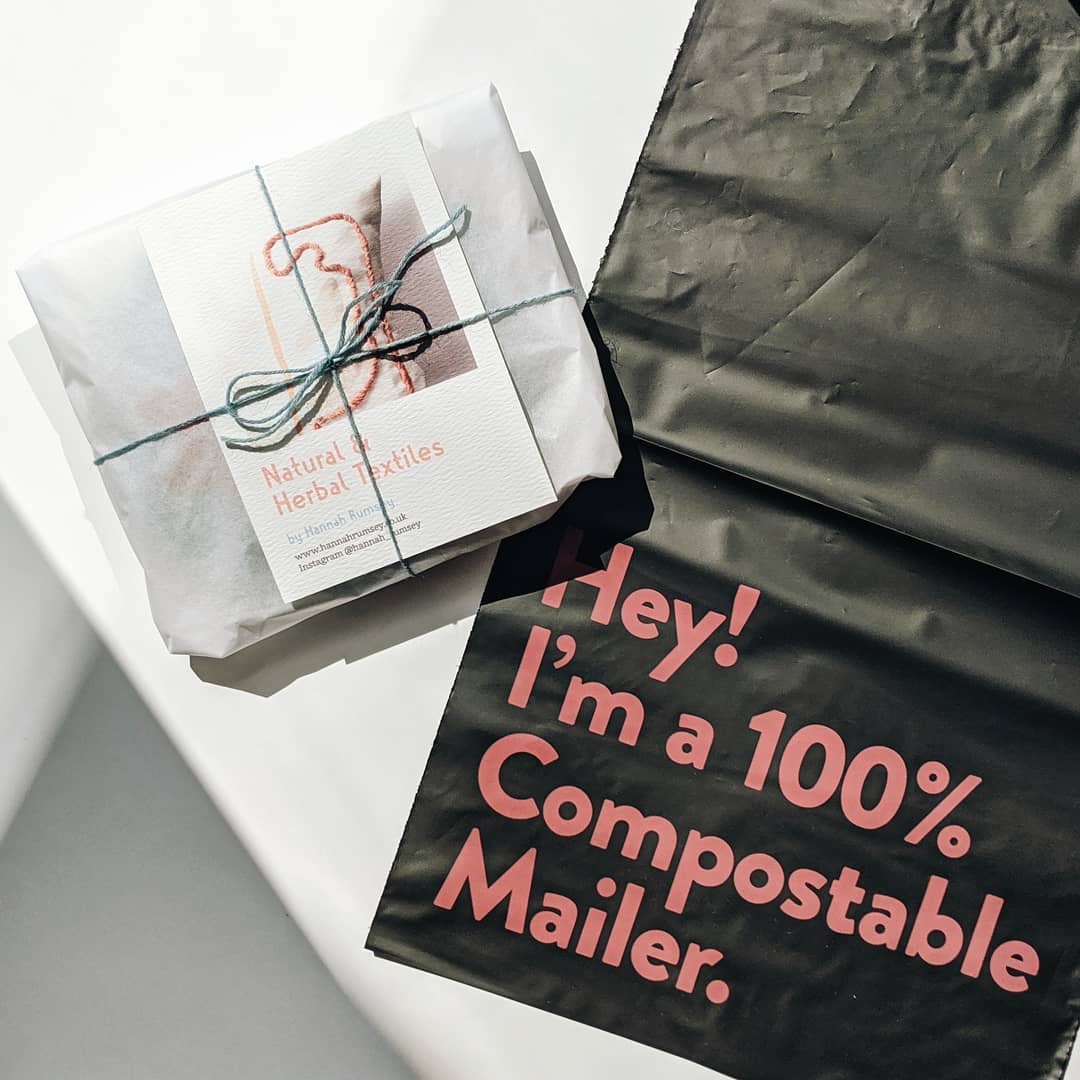
By pairing her compostable mailers with some tasteful tissue paper wrapping, Hannah Rumsey is giving her customers an attractive and plastic-free delivery experience!
BUT: Check Whether Plastic-free Packaging is Sustainable For Your Business
We understand if this header makes you do a double-take. It’s a reasonable assumption that plastic-free packaging is automatically sustainable, but it’s not quite that simple.
For example, ‘‘what are eco-friendly materials used for replacing plastic?’ Is one of the most highly-searched questions on Google in relation to packaging design.
Remember: ‘reduce’ is the first out of the 3 Rs. If you are only thinking about finding packaging alternatives to plastic, rather than how you can ship products with less packaging, your design isn’t going to be as eco-friendly as it could be.
There might be places where you still need a green alternative to plastic. But this is the perfect time to review whether you can reduce the amount of packaging you use. Over-packaging is rife within eCommerce, so the answer might surprise you!
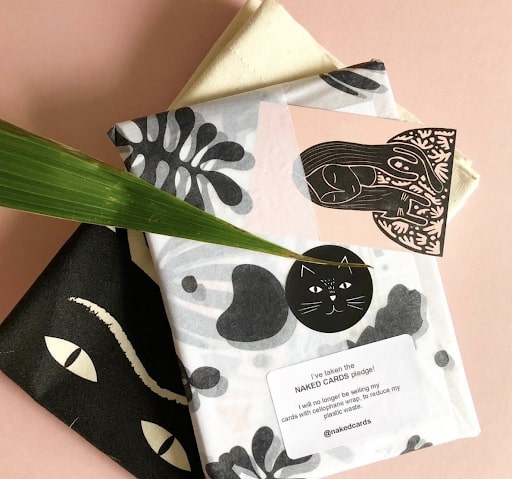
Artist Nia Gould of Niaski recently undertook the ‘Naked Cards’ pledge by removing the cellophane sleeves from her greeting cards. As she uses noissue tissue paper, it made little sense to replace the sleeve with an eco-friendly alternative.
By removing plastic and streamlining the amount of packaging used overall, the result is a far more sustainable packaging design!
If Plastic Packaging is Unavoidable, Find Ways to Lower its Impact
It might not be possible for you to have a completely plastic free packaging design. New eco-friendly packaging solutions are hitting the market every year. But R&D for plastic alternatives is still a very new field.
If eco-friendly alternatives don’t meet performance requirements for your products, then they aren’t sustainable. For example, body lotion will leach out of its container if it isn’t waterproof. That business is then saddled with the cost of replacing the product and trying to repair their brand’s integrity.
So, there may not yet be a viable alternative available for your business. But there are steps you can take to make your use of plastic packaging as low-impact as possible.
Offering refills of liquid products
Using only recycled plastics
Eliminating unrecyclable shrink wrap

Aromatherapy brand Nomad Botanicals uses glass bottles for their products wherever possible. But this isn’t suitable for their body washes due to the risk of breakage. To make up for the usage of plastic bottles, they offer a free refill service to keep bottles in use for as long as possible.
Plastic-free packaging goes a long way towards creating a more eco-friendly outlook for your business. Adopting paper packaging and biodegradable alternatives to plastic is the key to lowering the footprint of your packaging needs. But this offers more benefits than just protecting the environment.
As more consumers choose to support eco-friendly businesses, plastic-free packaging is a powerful statement about your values. It’s a tangible expression of your commitment to sustainability, which has long-term benefits for your brand!
For more environmentally friendly packaging ideas, check out our blog!
]]>
Tue, 15 Oct 2019 23:27:12 +0000 https://www.noissue.co/blog/the-letter-loft/
Passion, creativity, and resilience are the most crucial skills in business. If you’ve got those, you’re ready to embark on the journey. – Jo Malone.
As every entrepreneur knows, business ideas can come from the most unlikely of places. Inspiration for your next start-up could quite literally be around the corner. Being open to new ideas and experiences is the key to starting a business that you are truly passionate about.
For Jodie, her wire art display business The Letter Loft was the result of an afternoon’s brainstorming with her husband. In the past six years, she has established a thriving online store selling wire letters, cake toppers, and home decor. She tells about her journey as a small business owner, and how building a cohesive brand identity was the key to success.
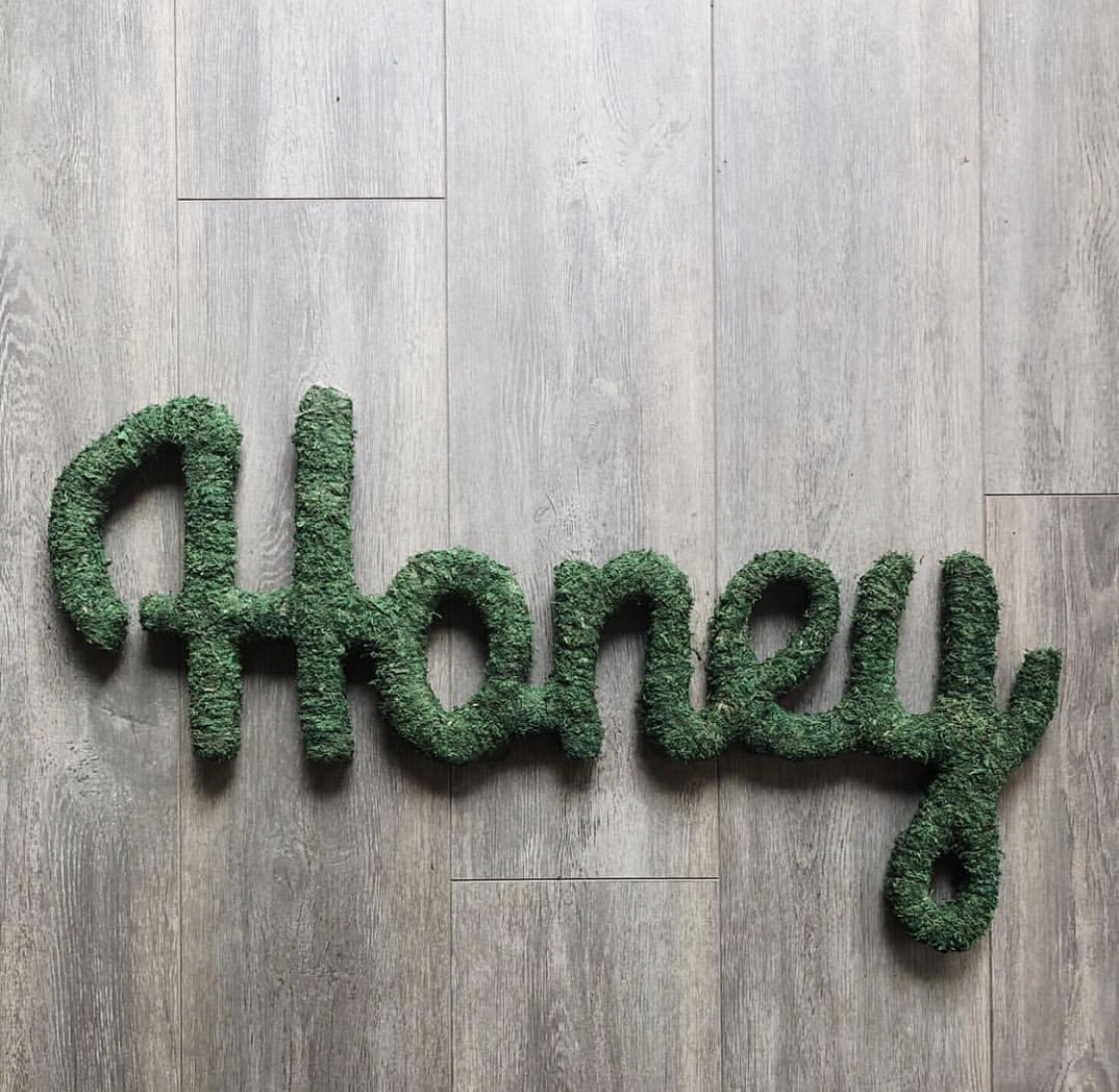
(In Jodie’s own words):
“The Letter Loft opened in 2013 (as The Moss Letter Company then). I had recently gotten married and returned from our honeymoon, and felt like it was a new chapter in my life. I had always wanted to work for myself, but had never succeeded. Having a cuppa with my husband I said ‘I want to start a business, what shall I do?’ He said, ’What about those moss letters you obsessed over for the wedding’ and that was the ball that started rolling. 6 months later we had found a supplier, had a website and a very green business owner was born!”
“In 2015 when it had started to feel like it could go somewhere, my Dad came on board (working from Spain!) and began making the wireframes for the letters. We changed our name, added more products and changed our ethos to British-made. It felt great! Our skills have been learned ‘on the job’ and it’s been a very step-by-step process, one we are both very proud of. Dad now lives back here and we bought a house with workshops on the grounds. We now run The Letter Loft from our home (one big house split into two houses with a workshop for me and a workshop for Dad!)”
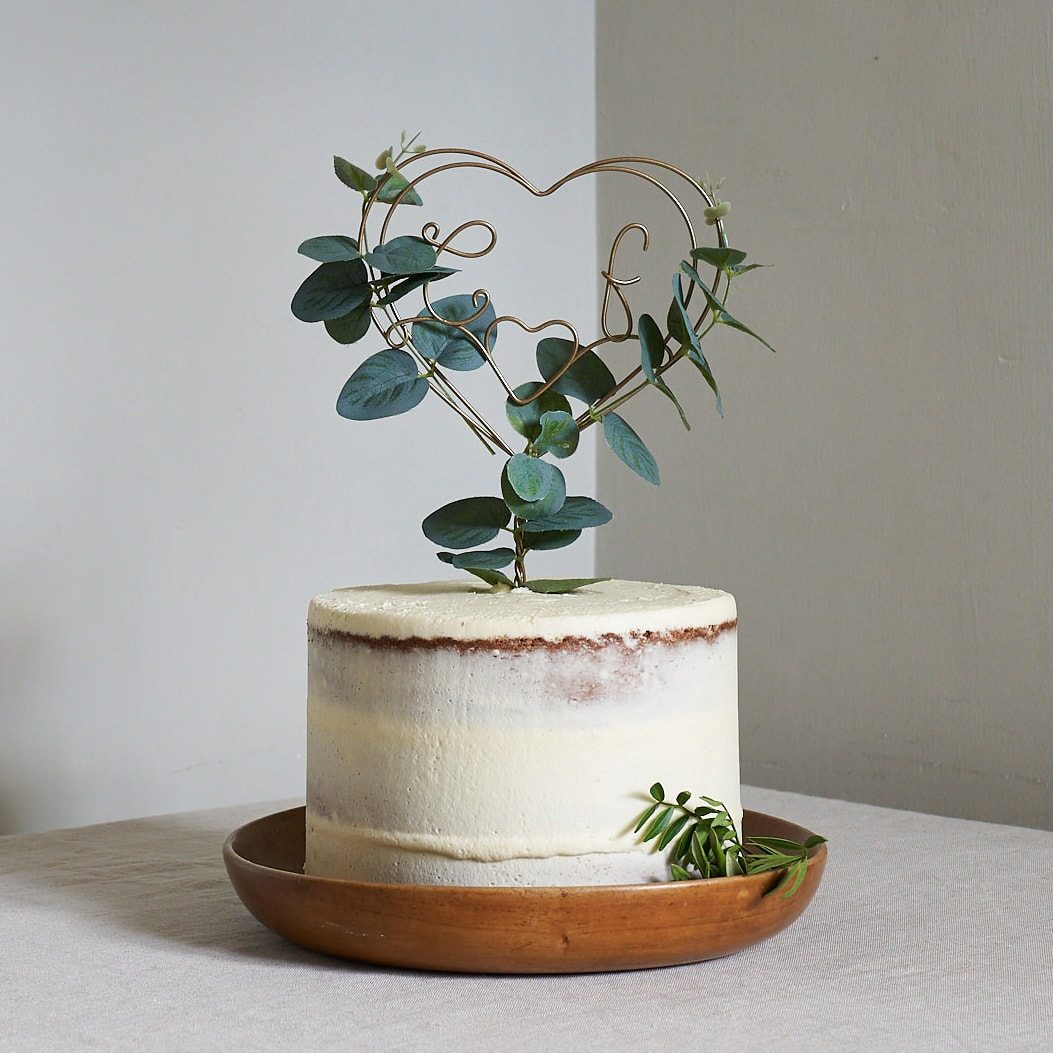
In 2019, it’s never been easier to start a business. The power of eCommerce has massively lowered the entry barrier to selling – no longer are we forced into the high overheads that come with setting up a brick and mortar store.
We have a variety of online selling platforms to choose from, while social media gives us a fantastic set of free marketing tools. In short, it’s possible to get selling within hours as opposed to months.
Yet easier access does mean more competition. Lifestyle sectors such as artwork and home decor have become particularly saturated. Etsy alone has over 2 million sellers active on its site!
So, how does a business stand out from all this noise?
From the start, Jodie’s wire art displays were an expression of her own aesthetic. Keeping this at the center of the brand has ensured that her offerings are unique and memorable:
“For new businesses, I’d tell them to just go ahead and start; getting to your perfect ideal is a journey, and your product and business knowledge will improve over time to reach that. Most of all, it’s important not to compare yourself to anyone else or feel under pressure to do things in a certain way; your approach is what makes your company unique!”
“The bottom line is that we only make and sell stuff that we like. I couldn’t happily sell rainbow products for example, as it’s just not my style! I have gone from thinking this was a weakness to seeing it as our strength. We are industrial and botanical, and that is very up my street! We take inspiration from our customers’ ideas, Pinterest, and also building off our best sellers. Over time, I am definitely learning that less is more.”
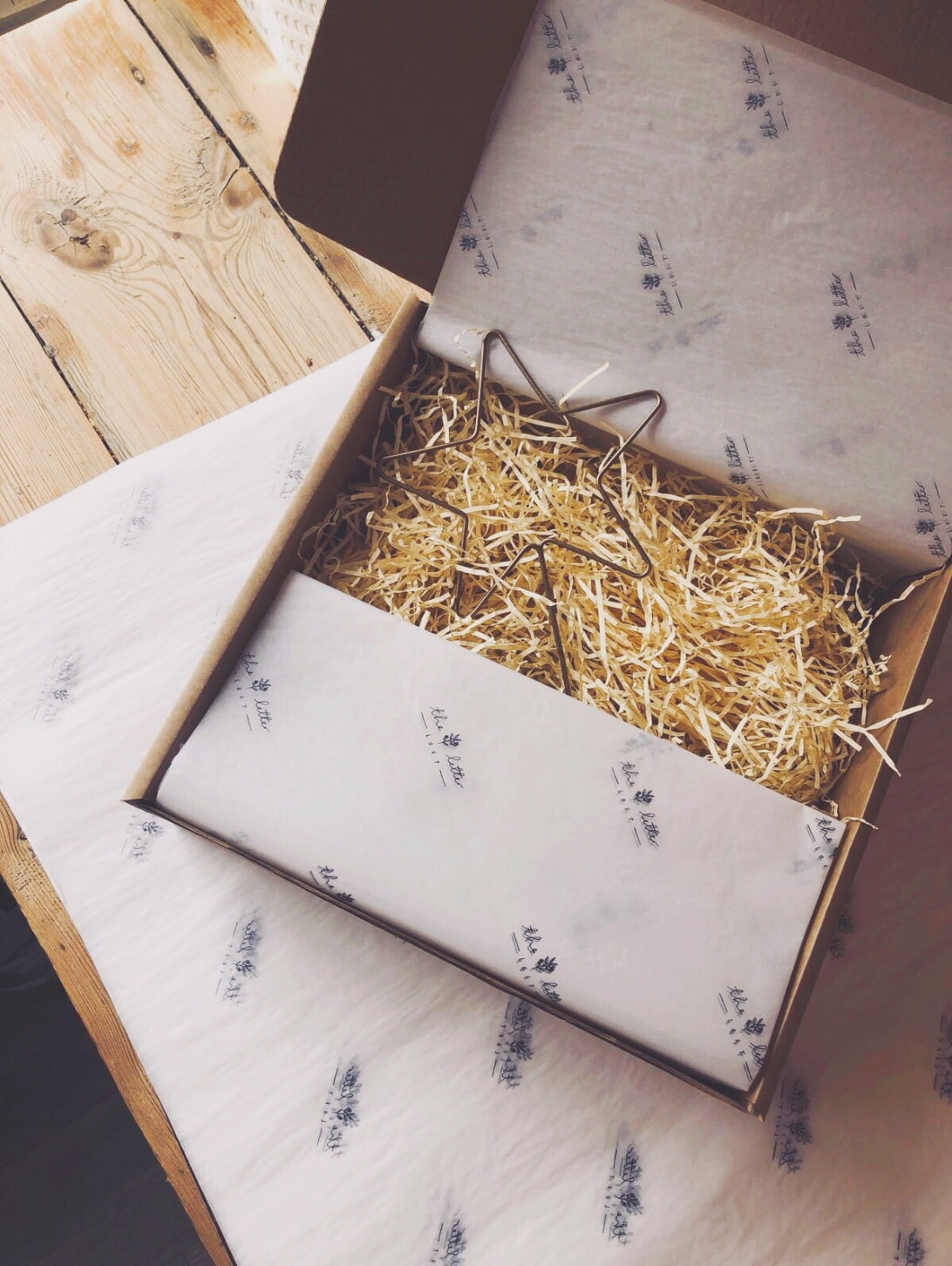
Yet cohesive branding was also one of the biggest challenges for Jodie. Keeping everything in sync is hard for any business, but especially for one that is still figuring out its brand image.
Bringing custom tissue paper into her online orders proved to be a missing piece that helped to draw everything together:
“I’ve been obsessed with our branding since day one. It’s only recently that I finally stopped worrying about it and stumped up to get it looking how I want it to. Not having everything cohesive was stopping me from taking ideas forward. It was a case of ‘I’ll do that when it looks right’. For some, it may be an excuse/defense mechanism but for me, it was a very real blockage.”
“I take absolute delight in having a beautiful logo/palette and having the custom packaging to match! (thanks to Ryn Frank for our logo!) It’s given me the confidence to start projects and I love how it all looks; from our recognizable cake toppers and quality custom tissue paper (thank you noissue!) to a tidy Instagram feed.”
Interested in finding out more about custom packaging?
]]>
Thu, 27 Sep 2018 03:34:00 +0000 https://www.noissue.co/blog/kimkini-affordable-eco-friendly-swimwear/
When we think about swimwear, it’s usually hot summer days at the beach. It’s not often that we have the occasion to think about sustainability.
But as a bigger spotlight is shone on the environmental impact of fashion, this has drawn attention to the problem of swimwear production.
Because swimsuits need to keep their shape in the water, manufacturers resort to using plastic-based materials like nylon and spandex. These shed tiny microfibers over time, which contributes to plastic pollution in our oceans.
While many brands are now experimenting with recycled plastic or regenerated nylon, we have a long way to go before affordable eco-friendly swimwear is a reality worldwide.
For Kimberley Champlin, creating a high-quality, eco-friendly swimwear brand has been a long time coming. She tells us about KIMKINI, and her mission to integrate sustainable values into her range.
“I’m Kimberley Champlin, a 22-year-old Edinburgh University graduate and founder of sustainable swimwear brand KIMKINI, based in Dubai. I officially launched KIMKINI exactly one year ago but I have had the idea for about three years prior – it’s been a long time in the making and a lot of careful planning!”
“I started KIMKINI as I was growing up in Dubai and was always wearing swimwear, but I felt there was a lack of sustainable and eco-friendly options that were both flattering and stylish. It’s definitely obvious that there is a growing demand for sustainable fashion and I envision KIMKINI to be a major source of trendy vegan swimwear.” 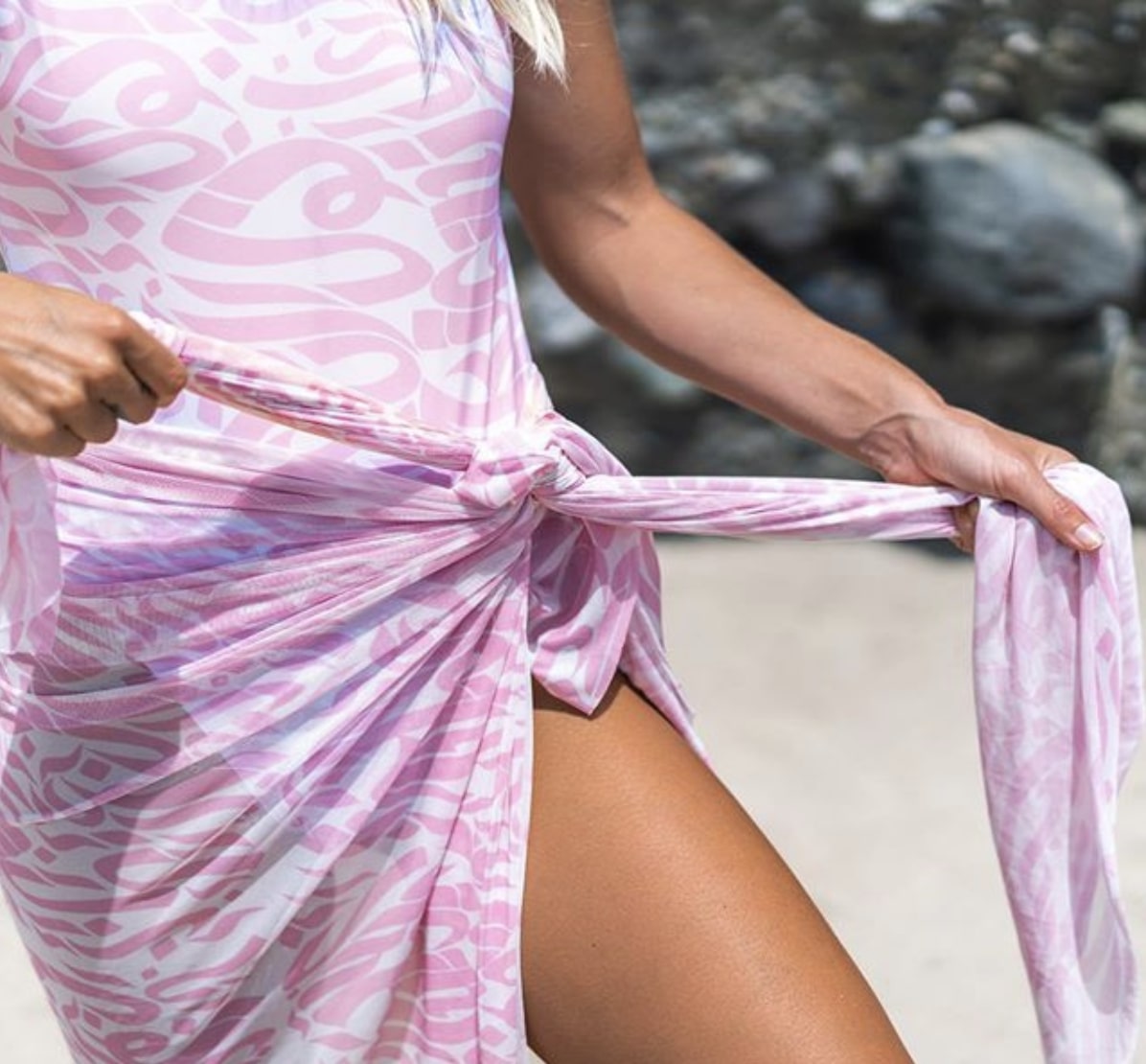
When it comes to sustainable fashion, eco-friendly swimwear presents some of the biggest challenges. Alternative materials to plastic have to be extremely hard-wearing and not degrade in water – not an easy find when R&D on low-impact fabrics is still limited.
For Kimberly, her biggest priority was to find a supplier who could meet her needs for cruelty-free and sustainable business practices:
“In the beginning, I found that a significant challenge was finding a manufacturer who could produce both affordable and eco-friendly swimwear.”
“After reaching out to many different manufacturers around the world in places such as Italy, Brazil, UK and Bali, I finally found the perfect company to work with. The swimwear manufacturer I wanted to use is situated in Brazil and is PETA approved. They also take great care of their employees. BONUS: They produce pet beds from leftover fabrics and donate them to their local animal shelters!”
“I learned that by being patient, doing my research properly, and not settling for the first opportunity that came about meant that I was able to establish a wonderful business relationship with this sustainable swimwear manufacturer. I feel that I am making positive choices every time I work with them because of their ethical business practices.”

However, it’s not just the products for sale that determine the sustainability of a business. Their overall outlook and approach to daily activities is a key sign of whether brands practice what they preach.
While KIMKINI specializes in eco-friendly swimwear, Kimberley uses a well-rounded sustainability strategy that encompasses every area of her business, from content marketing to shipping and packaging:
“Sustainability is incredibly important to me. With all the information and heightened awareness of political, economic and social topics, it is impossible not to be motivated to make better choices in my own daily life and with my business.”
“As well as living a plant-based diet myself, I try to reduce KIMKINI’s carbon footprint through smart and ethical business decisions. I have taken multiple steps to ensure I lower the environmental footprint of my business. This is showcased in more detail through blog posts on KIMKINI’s website and updates on our Instagram.”
Here are just some of the steps I use to lower the environmental footprint of KIMKINI:
I use a PETA-approved swimwear manufacturer for my swim collections.
noissue’s compostable mailers, custom tissue paper and compostable stickers (They also plant trees with every order contributing to global reforestation).
I do not place extra plastic tags on the swimwear – instead, I print the care label and logo on the interior which means less wastage.
I do not use paper slips within the packaging detailing the order (I use email confirmation instead).
Through blog posts, I spread awareness about harmful products to the environment. For example, in ‘Beach Day Essentials’ I informed my readers about switching to mineral-based sunscreens (e.g. Sunbum brand) as one drop of a chemical sunscreen contaminates coral reefs the size of 6.5 Olympic-sized swimming pools.

While sustainable packaging has been a major asset to the KIMKINI brand, the ability to custom-design her unboxing has been the biggest advantage for Kimberley as the owner of an eCommerce store:
“I think that custom packaging is so important, especially because KIMKINI is an online shop with no retail store that customers can visit. Therefore, the delivery process and packaging is significant as it is the first representative item the customer sees.”
“Custom packaging adds that extra special touch for the customer. The personalised ‘thank you’ cards, branded tissue paper, stickers with our logo and the compostable mailers are special for the customer. They can clearly see the time, thought, and effort this has taken to perfect.”
“After a lot of research, I found that noissue was the most eco-friendly option and that their company values match my own. noissue has helped maintain the sustainability of my brand, and they spread profound knowledge and insight to the importance of reforestation, which I really appreciate!”
“I especially love how noissue plants trees with every order so I don’t feel guilty when creating packaging – every time I make another order it’s great to see the total number of trees planted increase! It is so rewarding to say that KIMKINI has contributed to reforestation in places such as the Amazon rainforest. I will definitely continue to keep working with noissue for all of my future packaging orders!”
For more about our eco-packaging alliance, click the button below!
]]>
Thu, 03 Oct 2019 17:25:54 +0000 https://www.noissue.co/blog/recommerce-the-latest-trends-in-reselling-items-online/
You’ve likely heard the saying ‘one person’s trash is another person’s treasure.` But in 2019, this idea has taken on a much more tech-savvy approach.
Previously, unwanted items of clothing would simply stay in a dusty corner of the closet. But today, numerous people have created full-time businesses out of selling used clothes. How? Through the rapid growth of recommerce marketplaces.

What is ‘Recommerce?’
Recommerce, also known as Reverse Commerce, refers to consumers selling previously-owned or used products through online marketplaces. A good way to think about recommerce is as a virtual version of a neighborhood yard sale crossed with a hip vintage boutique. But those reselling online aren’t limited to finding customers locally. A buyer could be on the other side of the street – or the other side of the planet!
Not all that long ago, only large-ticket items like cars or houses had resale value. But through online selling sites, just about any product can be sold onto a willing buyer.
It’s an alternative form of consumption that competes with ‘upgrade culture’ or trend-based business models. This makes recommerce akin to the ‘waste not, want not’ attitudes of our grandparents’ generation, but with the powerful backing of eCommerce marketing. As a result, recommerce has arguably had the biggest impact on the fashion industry.
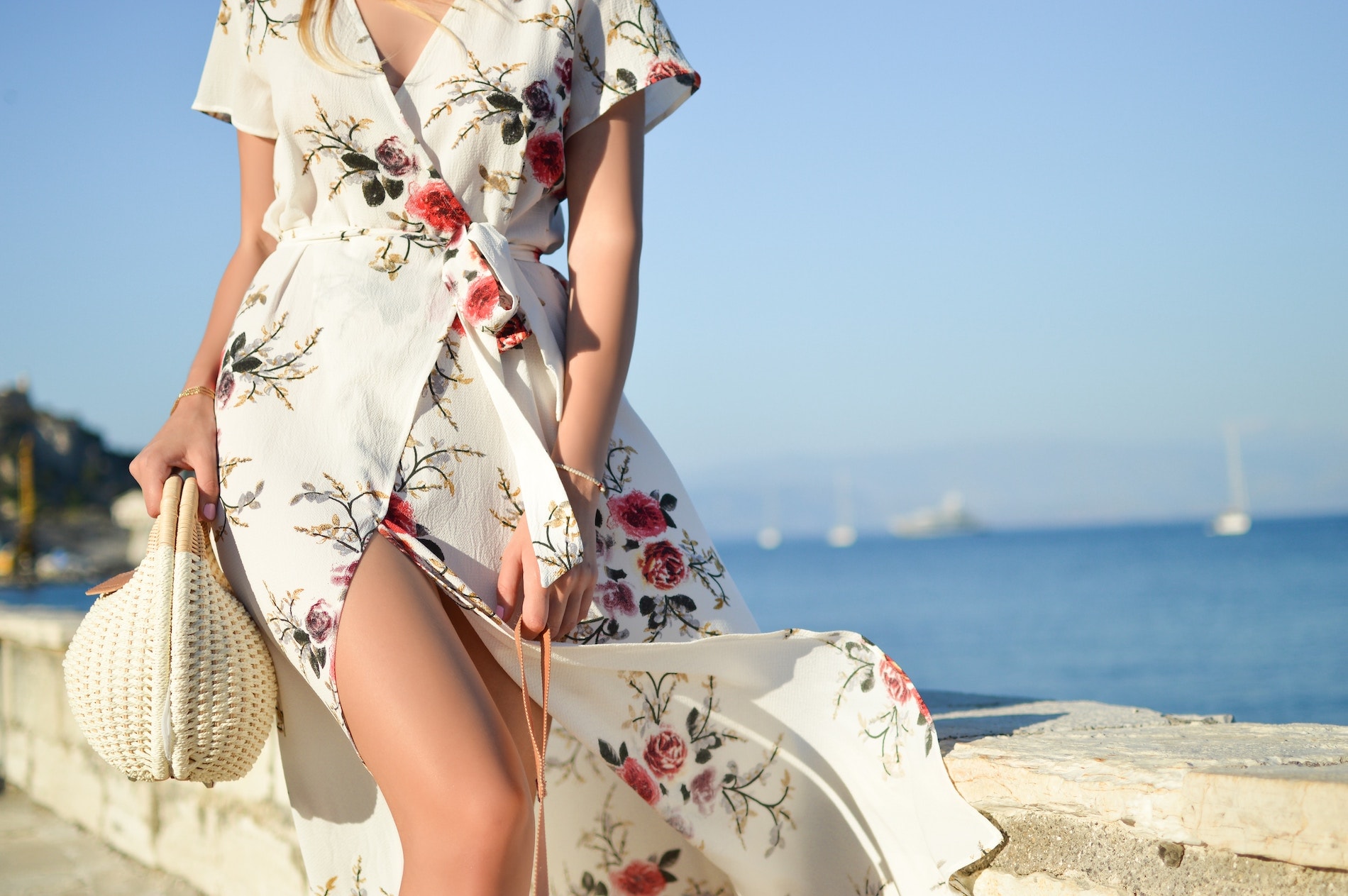
Recommerce and Fashion Reselling
Between 2000 and 2014, the number of garments purchased each year by the average consumer grew by 60%. So, it’s hardly surprising that more and more consumers are selling used clothes online.
In fact, statistics show that recommerce has been outperforming traditional retail for the past six years, with a forecast revenue of $20 billion for 2019. The largest sector by far is fashion reselling. So, how exactly are consumers reselling clothing? Traditionally, it’s brick and mortar thrift stores that have dominated the secondhand trade. But this is fast changing due to the convenience offered by online selling platforms.
According to The Shelf, recommerce marketplaces such as Poshmark, ThreadUP, The RealReal, and Depop can resell clothes online 20 times faster than regular retail can. This has contributed to the rapid rise in the number of consumers reselling online. In 2018, Poshmark alone made $150 million in revenue – up from just $50 million in 2016!
What is Behind the Rise of Fashion Reselling?

Recommerce as the Solution to Fast Fashion
All of us are familiar with the concept of ‘fast fashion’. It’s where clothing brands release ‘new collections’ on a rolling basis. To achieve this, garments need to be mass-produced and inexpensive for the consumer.
The result is that production and consumption cycles are getting faster. Where collections were once seasonal, they are now appearing at shorter and shorter intervals. According to McKinsey, the average number of clothing collections produced by a brand in the year 2000 was two. By 2011, this had grown to five. In 2019, it’s not unusual for new collections to arrive just four to six weeks apart.
This perpetuates a culture where fashion is seen as disposable. When a garment is no longer on trend, it’s not seen to have value. But it’s now widely known that fast fashion has dire consequences for the environment.
Worldwide, 85% of discarded clothes end up in the landfill. The chemicals from the dying process also leach out into the soil and waterways, resulting in widespread pollution.
Fashion reselling challenges fast fashion production by keeping garments in use for as long as possible. This creates a circular business model that offers a long-term solution to textile waste.
Online selling sites provide consumers with an alternative to throwing clothes away – one they can make money from. But this also has longer term consequences. As reselling things online becomes more widespread, it creates alternative criteria for what makes a product desirable.
For profitable fashion reselling to be possible, used clothing has to be able to handle numerous wears without breaking down. But fast fashion isn’t made with this longevity in mind. As a result, many brands will struggle to gain a presence in this new secondary market.
In the words of Andy Ruben, the CEO of Yerdle, “Brands need to commit to making the best most durable product in the first place. It is counter to fast fashion—if you’re fast fashion, you can’t do this business model.”
In fact, 40% of consumers now consider the so-called ‘resale’ value of an item before they purchase. Going forward, recommerce will make it much easier for long-lasting, sustainable fashion brands to thrive.

Millennials Love Buying & Reselling Things Online
According to ThreadUP’s 2019 Resale Report, millennials and Gen Z are driving much of the growth of online selling sites. They are adopting second hand clothing 2.5 times faster than other age groups!
Why? Because Gen Z and younger millennials came of age during or shortly after the recession. Out of necessity, they developed thriftier habits than their parents did at the same age. Conspicuous consumption is often frowned upon, while creative and careful consumption is praised.
Moreover, the younger generations are much more conscious of the environmental impact of fashion. According to eMarketer, 87% of millennial consumers in the US are willing to pay more for sustainable items.
Recommerce and reselling online has therefore become an activity with a lot of social currency. Trendwatching.com refers to this phenomenon as the ‘statusphere’, or ‘the growing status boost that comes from being savvy and shopping (environmentally) responsibly.’
In short, young consumers are getting their shopping fixes in a very different way from the past. It’s no longer about having the latest thing. ‘Cool’ means taking the time to hunt for secondhand treasures and slow down the fashion cycle.

Online Selling Sites Are Built Off ‘Social Selling’
Of course, choosing to sell old clothes online isn’t new. Many of us have sold garments through eBay at one point or another. But fashion reselling is a whole new ballgame in the age of social media and influencer marketing.
Platforms such as Instagram and Pinterest make it easy for brands and consumers alike to curate their very own fashion lookbooks – and clothing resellers have quickly followed suit.
This trend of ‘social selling’ has created a huge secondary market for sought-after brands and apparel. In recommerce, no resold garment is ever ‘unwanted’ – it’s an item with its own unique backstory.
In 2019, cohesive branding and curated product selections are key to successfully reselling online. Why? In the same way that consumers repeatedly purchase from certain brands, they are more likely to return to resellers whose aesthetic they admire. As a result, the top fashion resellers have become ‘influencers’ in their own right.
According to Tracey Sun, the co-founder of the fashion reselling platform Poshmark, influencers are integral to their marketing strategy: “Our approach to influencers fundamentally hasn’t changed, we’ve just increased the volume. When they can authentically tell the story of why they are attracted to the platform, that resonates with our culture and our brand…They’ve also figured out that an item will sell faster if they tell a story around it, and they photograph themselves wearing it — that’s so much more authentic this day and age than showing it on a model nobody can relate to.”

Meet the Poshers
Anyone can take advantage of the growth of recommerce, but it takes considerable time and effort to turn fashion reselling into a profitable business. We speak to three Poshmark influencers who have done exactly that! We ask them about how they got into reselling online, what they think about reselling and sustainability, and their top tips for selling clothes on Poshmark!
Q: Why did you start fashion reselling, and why did you stick with it?
Jennifer (@abritishposher): “I started reselling just for fun, I was working a bartending job that I didn’t find much fulfillment in and was looking for a side hobby/hustle and happened to come across reselling. I was hooked very quickly as I started to see the profits adding up and have never looked back!”
Kaahreena Ochoco: “I actually started reselling in high school. My friends and I would ditch school and go thrifting! We made an Instagram page where we would post pics of the items we were selling, and then meet up with other girls at school or around town. I was the only one who stuck with it, and 6 years later I’m still doing it! I honestly just love reselling. All aspects of it are super fun for me and I love to thrift anyway, so might as well make some money doing it.”
Becky Park: “I started reselling on Poshmark simply to get rid of my own clothes as well as my husband’s clothes. When I saw that things were actually selling, I started doing more research as far as how I could be even more successful on the platform and found a wonderful community on YouTube and Instagram. Thanks to the helpful Poshmark tips and tricks other more seasoned resellers shared so freely, I had all the information I needed to continue growing my business!”

Q: How do you view sustainability through the lens of recommerce?
Jennifer (@abritishposher): “Sustainability is something I have learned more about in my journey as a reseller. It is becoming much more socially acceptable to purchase items second hand, and I love that reselling helps to bring awareness to that. Since I thrift almost everyday, it has really opened my eyes to the amount of clothing that is discarded on a regular basis! By reselling, I am able to rehome amazing items that would otherwise end up in landfills. This reduces textile waste, saves thousands of gallons of water and reduces textile pollution in the process.”
Kaahreena Ochoco: “As I became a mother, sustainability is something that has become more important to me. When resellers thrift for their inventory and resell it, they keep thousands and thousands of items out of the landfill. I know it only skims the surface to a bigger issue but as long as we do what we can, it will make an impact.”
Becky Park: “Reselling gives clothes that are destined for the landfill another chance to be loved and worn by another human being. Not only that, but I believe that reselling as well as companies like ThredUP and The RealReal have made wearing second hand clothes less taboo and, if anything, kind of cool! I believe it’s also sending a message to fashion labels and companies that their consumers want quality clothing rather than fast fashion. As people start to scale down on what they actually need to get by on a daily basis, they’re turning to platforms like Poshmark to find the fashion they want at a lower cost.”
Poshmark Tips & Tricks
So, what top fashion reselling tips do these veteran resellers have for us?
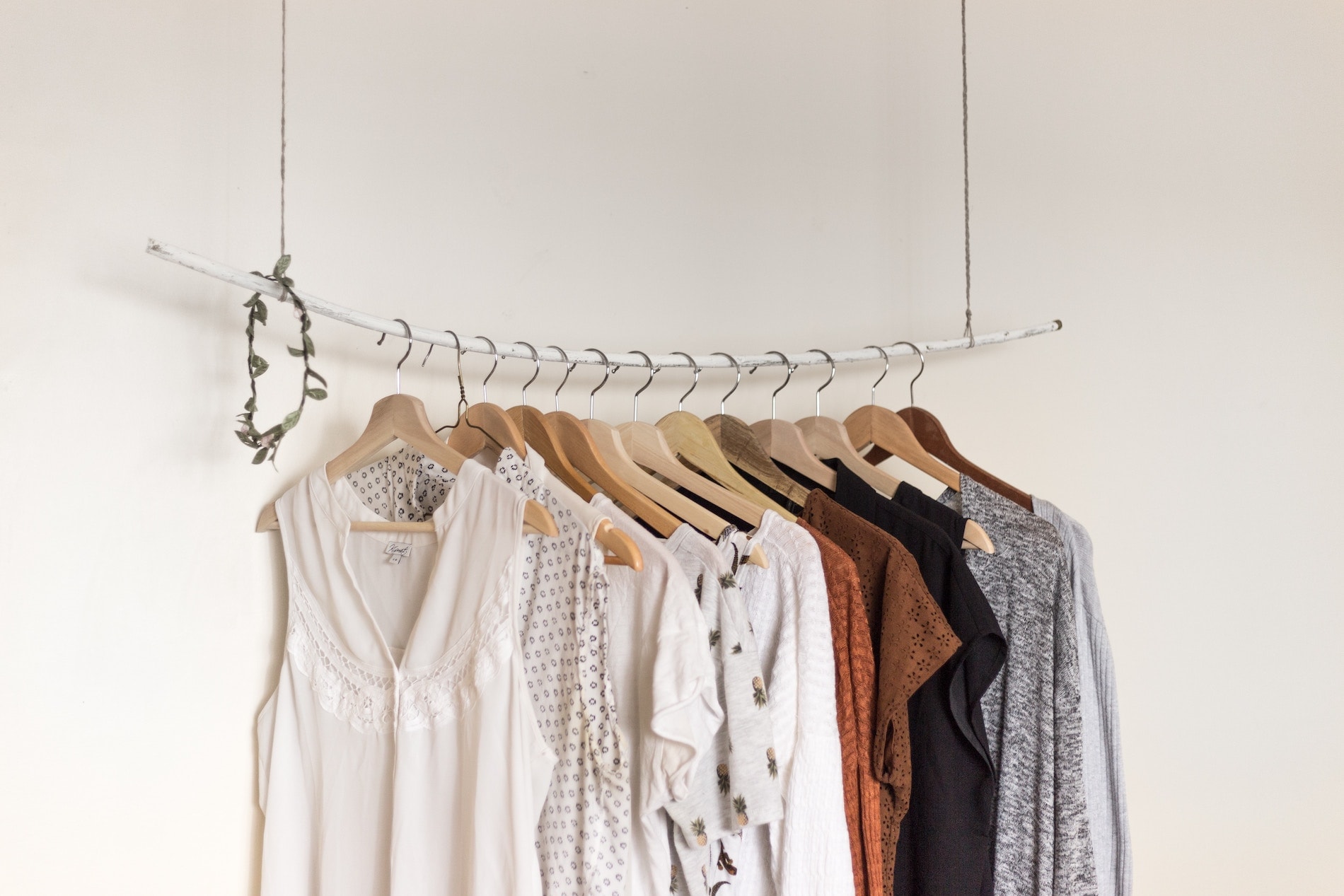
Research What is Likely to Sell Well
You can’t stick any old thing on a reselling site and expect it to fly off the shelf! Successful reselling involves careful strategizing about what is likely to sell at any given time.
For example, if you list a coat for sale during the warmer months, you are probably going to get less traction than if you tried selling it in the Fall. It’s really important that you consider your prospective buyer’s journey when choosing to sell clothes online.
According to Jennifer, keeping yourself in the loop on what is in demand is the key to being a successful reseller:
“Research is so key! It’s not a good enough strategy to buy items that you think will sell well based on your own fashion taste and opinion, you have to be able to critically evaluate each piece and use your best judgement to decide if this is an item someone else wants to buy and if it will be a profitable purchase for your business.”
For those who are new to reselling, Poshmark itself is a great source of information on what is giving resellers a great return!
“It’s important to research the marketplace to establish exactly what is in demand and what buyers are searching for to buy. All of the answers you need are within the Poshmark app. I look at sold listings to identify what is currently selling fast for a great price and actively seek out those items to resell in my closet.”
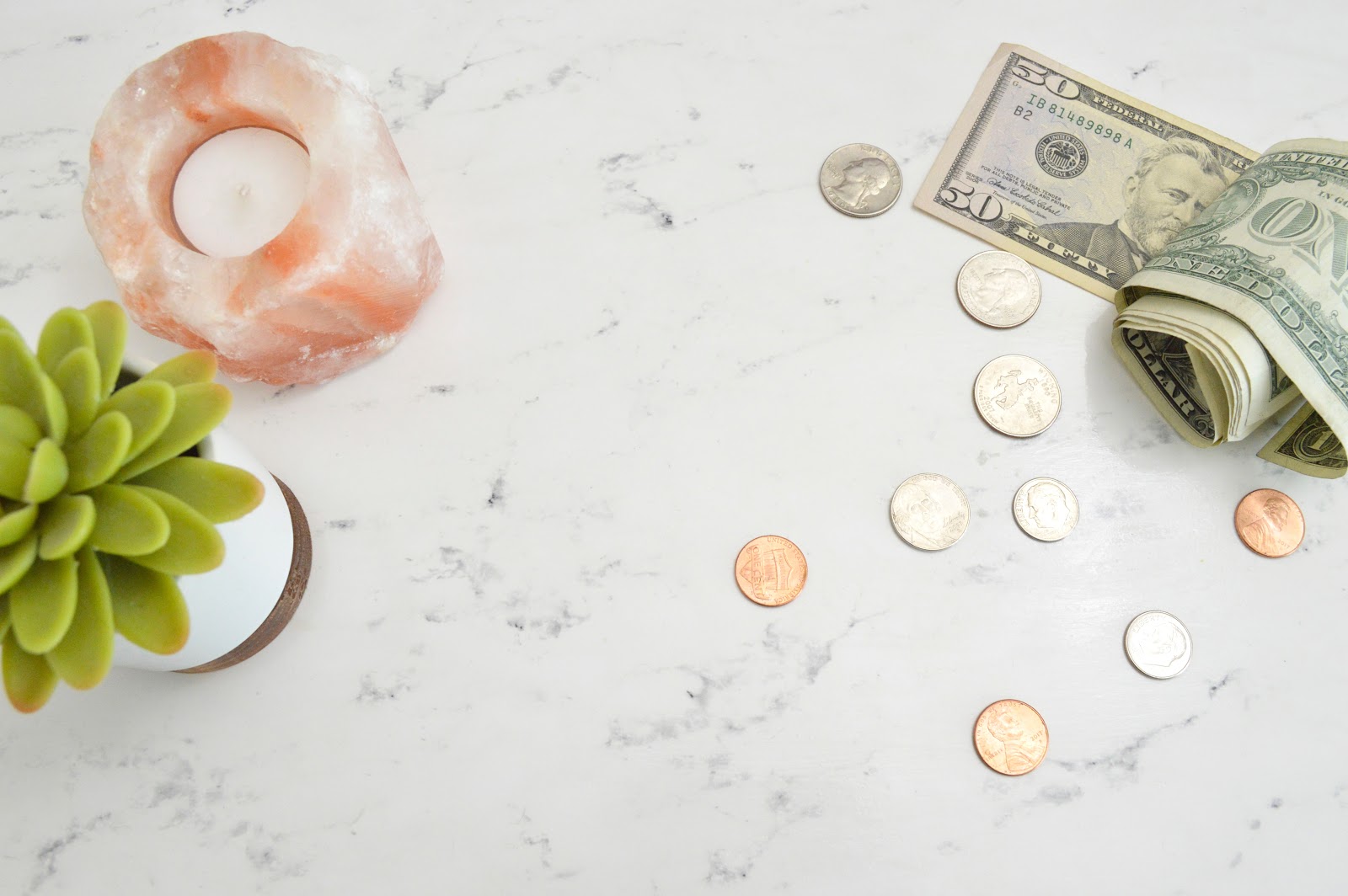
‘Cheap’ isn’t the Same as ‘Good Value’ in Recommerce
In general, fast fashion items have a low resale value. As we’ve mentioned, this is due to concerns about quality. But it’s also because there are a lot more listings than there is demand. Online selling platforms are flooded with listings from high-street brands. Selling this alone makes it very hard to stand out.
Moreover, this isn’t what many buyers on Poshmark are after. People want to be thrifty, but not cheap. They still want the excitement of buying unique, desirable items!
In Kaahreena’s experience many new fashion resellers, including herself, make the mistake of trying to sell whatever they can get ahold of cheaply, rather than considering a garment’s value in the eyes of buyers.
“When I was starting out, I feel like my profits and sales weren’t being maximized because I was just picking up anything I could find that was cheap and cute. It sounds tedious, but looking up comps and checking the market for over-saturation is SO important!”
Becky agrees. “Don’t just buy things because they’re cheap! Make sure there’s a market for the item!”
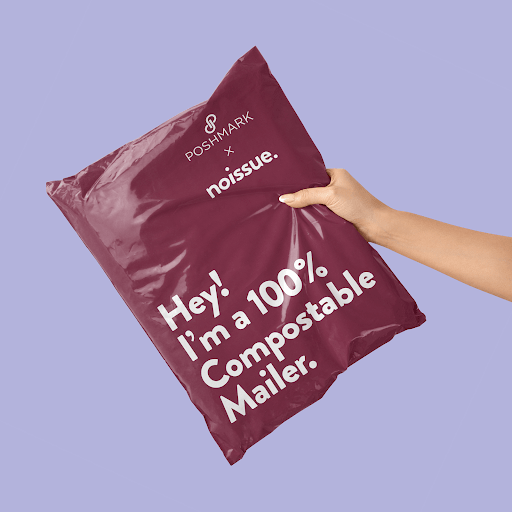
Your Poshmark Packaging – Think About Sustainability
Resellers on Poshmark aren’t just responsible for photographing garments and creating listings. They have to manage order fulfillment as well.
However, this area receives very little focus within ‘how to sell on Poshmark’ guides. It’s true that packaging and shipping orders is a lot less exciting than styling garments – but it’s also crucial to the success of your operation.
As we explored earlier, many buyers on Poshmark and other online selling sites are very conscious about sustainability. They want to feel that their decision to engage in recommerce makes a difference. This is seriously undermined if resellers use packaging which is harmful to the environment!
Our top Poshmark packaging tip? Eco-friendly retail packaging!
Adopting sustainable packaging is a clear sign to consumers that you care about your carbon footprint. Furthermore, it’s a unique selling point that appeals to conscious consumers!
Being a fashion reseller gives you a big advantage when it comes to eco packaging. Clothing apparel is soft, foldable, and cannot be damaged easily. That’s why we teamed up with Poshmark to help them create their very own branded compostable mailer bags for resellers!
Regular poly mailers cannot be recycled or reused, and so produce huge amounts of plastic waste. noissue mailers are 100% compostable, and biodegrade completely within a six-month period. They couldn’t be easier for fashion resellers to use; simply put your apparel inside, seal the edges down, and you are good to go!
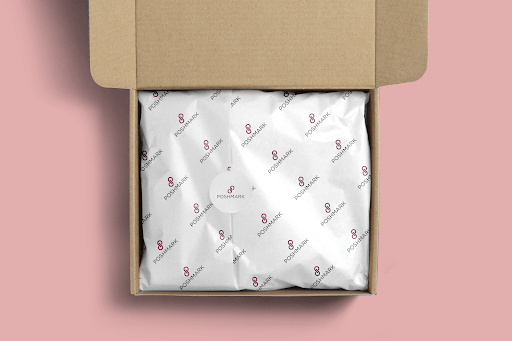
If you really want to kick the customer experience up a notch, considering using some customized tissue paper to wrap your products in. This will give your profile as a reseller a much more premium edge. Why? Because it makes your customers feel as though you are dealing in high-end apparel, rather than ‘used’ goods!
But don’t just take our word for it! Here is the verdict from the Poshers:
Jennifer (@abritishposher): “It seemed hypocritical to me to help the planet by reselling, yet create so much plastic waste in my packaging and shipping supplies. I love that that since using the compostable mailers I am not only reducing textile waste, but also avoiding creating any additional waste as a byproduct of my business. Using the mailers has also helped to bring sustainability awareness to my customers and I think that even as a small business, the more we can set a good example the bigger impact we can have on social behavior change.”
Kaahreena Ochoco: “I’ve gotten so many compliments from buyers and from fellow resellers on the compostable mailers! Plus, using them made me realize how much waste resellers still do create in shipping supplies and other parts of our businesses. Using noissue mailers make me feel like I’m doing better on my part.”
Becky Park: “I have had multiple people leave glowing comments on my usage of compostable mailers. I’ve also had people reuse them to send out their own packages which I think is amazing! It’s helped me feel much better about my reselling business as a whole because one of the joys I get from reselling is knowing how many pounds of clothing I am saving from the landfill. Now, my conscience is much clearer knowing that I’m also keeping poly mailers out of landfills too!”
Recommerce and the rise of online selling sites is more than just a side-hustle or a way to get clothes at a good price. It’s an alternative approach to consumerism which is much healthier for the planet.
By promoting the inherent value of goods which already exist, we can develop a circular economy which produces far less waste overall. Fashion reselling also promotes creativity and sustainable habits beyond our choice of clothing – it also helps us to be much more mindful about our daily habits too!
Interested in finding out more about our compostable mailers?
]]>
Tue, 08 Oct 2019 22:23:56 +0000 https://www.noissue.co/blog/shop-nanjala-empowering-kenyan-artisans/
In developing markets, sustainability means more than just taking care of the environment – it’s also about providing stable incomes so that creatives can thrive.
In Kenya and wider Africa, it can be difficult for artisans to get exposure to profitable markets. This gave Teresa Lubano the idea of starting an online marketplace that gives young up-and-coming artists a place to show off their crafts.
Her resulting eCommerce store, Shop Nanjala, is home to a variety of locally-made gift items and decor. In this case study, Teresa tells us about her mission to bring African-made goods to market in the most sustainable way possible.
(In Teresa’s own words):
“My name is Teresa Lubano. I’m a mom and a Creative Director for Seven Brands; a global design agency based in Nairobi, Kenya. I am also the Founder and Creative Director for Shop Nanjala; an online shop for Home Design, Gardening, and Gifting. We create and collaborate to deliver one-stop solutions for home design decor, customized gift items and eye-catching potted plants. All of Shop Nanjala’s work is locally sourced and made in Kenya!”
“Launched online on the 1st of December 2015, Shop Nanjala was born from a recognition that many local artisans and craftsmen are held back by a lack of exposure and opportunity. Through our eCommerce platform, we are committed to helping them to take their talents and wares to the market in a more professional and gainful manner.”
“Our vision is to be Africa’s first sustainable online retailer of gardening, home, and outdoor lifestyle brand that is deeply rooted in the celebration of nature for the modern city dweller.”
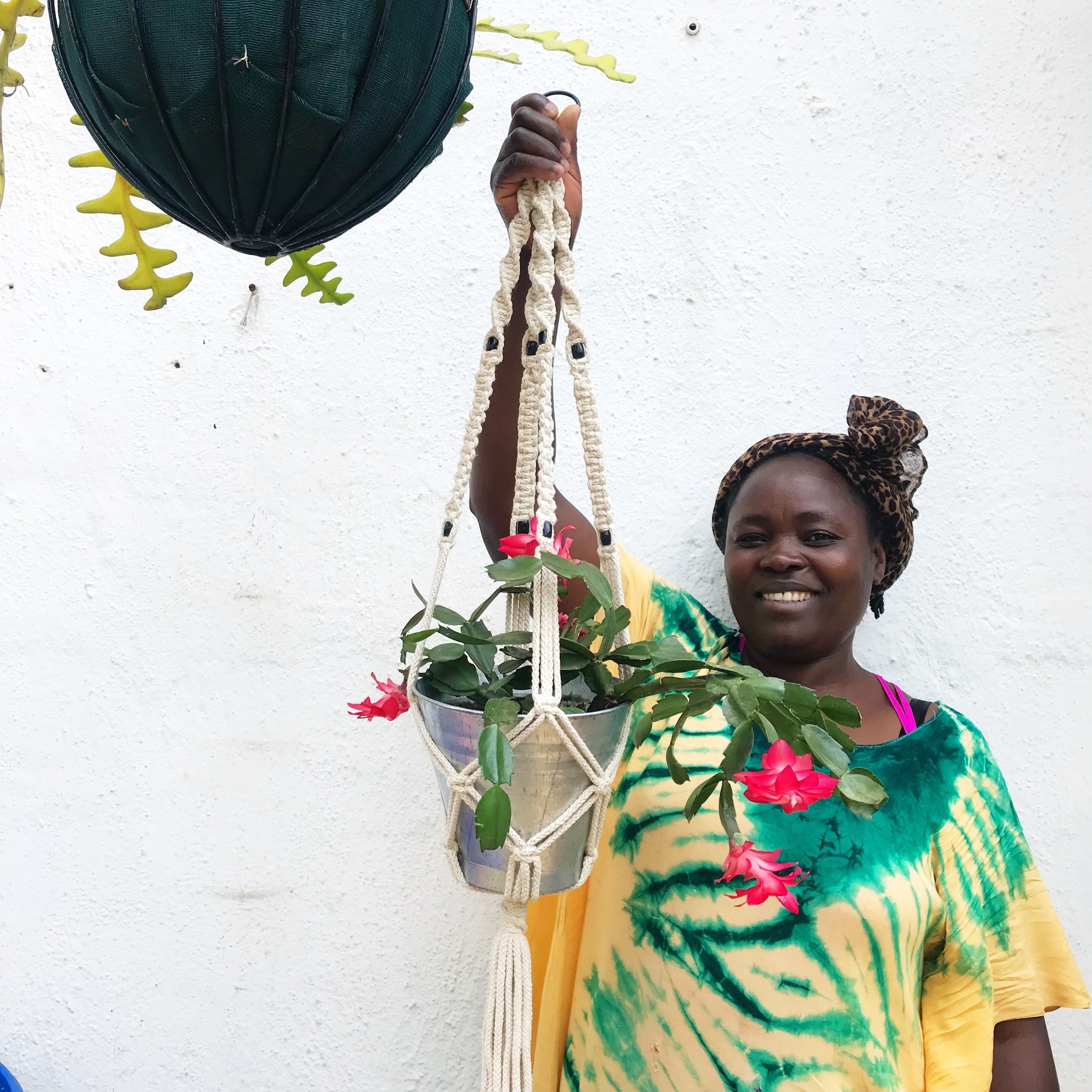
Sustainability has a much broader meaning than just the environment. According to the UN, Sustainable Development is defined by three ‘pillars’ – social, economic, and environmental. Without the three working in tandem, long-term solutions to the challenges facing the world are hard to come by.
For Teresa, working within a developing market comes with its own unique challenges, especially in finding sustainable ways of doing business that benefit both the community and the planet:
“In my market, which is a developing country, we as a business have just started looking at this paradigm. Now more than ever, we need to have more champions for sustainable business models, those that have inbuilt efficiencies, reduce greenhouse gases and even employ design systems like upcycling as part of their business operations.”
“We do this by constantly seeking inspiration from nature, applying its principles to our designs and gardening offerings, hence placing sustainability at the heart of our company culture. We wrote an article about this topic (it was actually inspired by a noissue article on sustainability!)”
To read our article on sustainability for small businesses, click here!
“A huge part of the business has been the selling of plants i.e. succulents and other exotic indoor plants. We believe that mother nature is a great marvel, and we strive to infuse this even into the design of our range of products. I think being raised on a farm enlightened me on the therapeutic and restorative benefits of nature. I try to share this in my design work and through the product offerings on the platform which targets modern-day Nairobians.”
“We pride ourselves in offering environmentally conscious products that support local artisans/cottage industries. We get excited when we are approached by artisans who use natural materials e.g. earth/clay, stone, soapstone, sisal, cotton etc. in their crafts. They stand a better chance at having their items retailing on our store!”
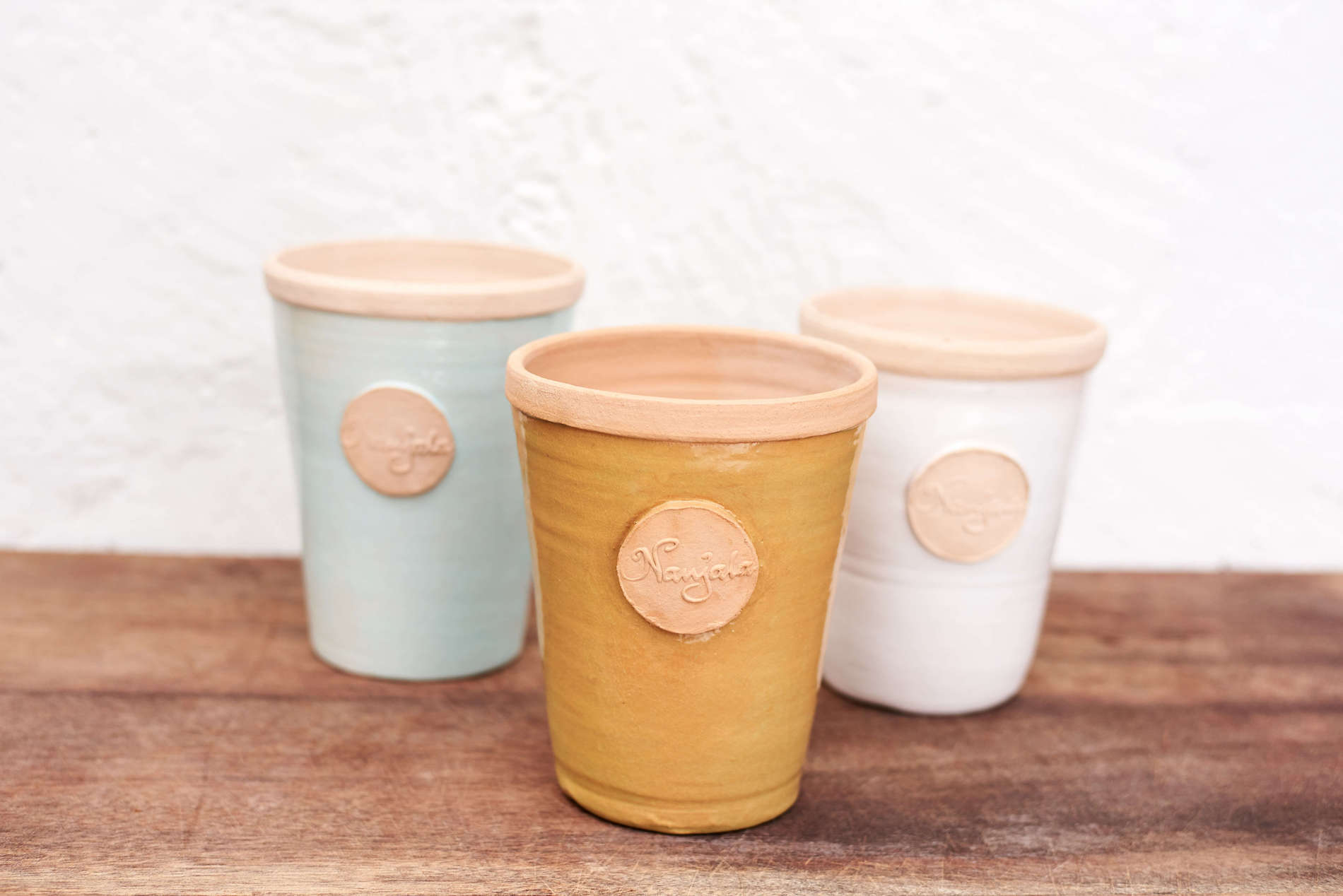
“As a Kenyan and a professional designer, I’m deeply empathetic to the high rates of unemployment in this country. We have a huge population of talented youth whose works go unseen/unheard. I believe that through collaborating with these youths and other cottage industry enterprises, we can retail their wares and shine a light on their work; in turn, fostering customers to appreciate and potentially purchase their wares.”
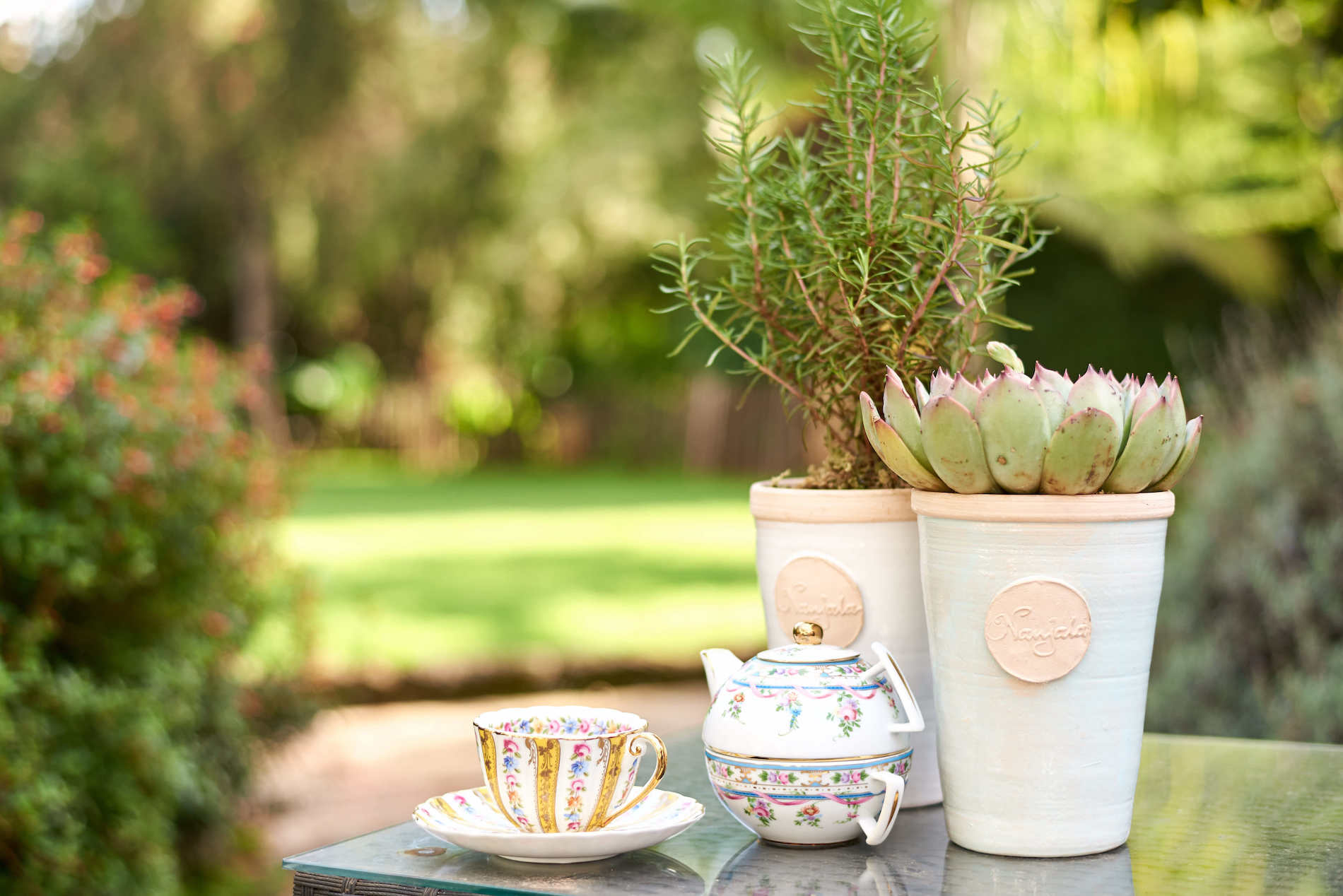
As every small business owner knows, a cohesive brand identity is vital for building brand recall. With so many brands fighting for attention, a lack of consistency will make it difficult to gain a following.
Brand consistency came naturally to Teresa and Shop Nanjala due to her background in design:
“Luckily, I’m the creator of all the branding for Shop Nanjala. From the logo design (which happens to be my very own calligraphy!) to the custom packaging, colors, fonts and photography.”
“So, I’ve got my finger on the pulse of all the brand assets! I have a brand guide that I really try and adhere to. It helps especially with the design of advertising material. Our marketing team uses the brand guide to inform the execution and rollout of all our communications. Consistency really is key!”
Pro tip: Developing brand guidelines is a fantastic way to keep your brand cohesive, especially if your marketing is being managed by multiple people!
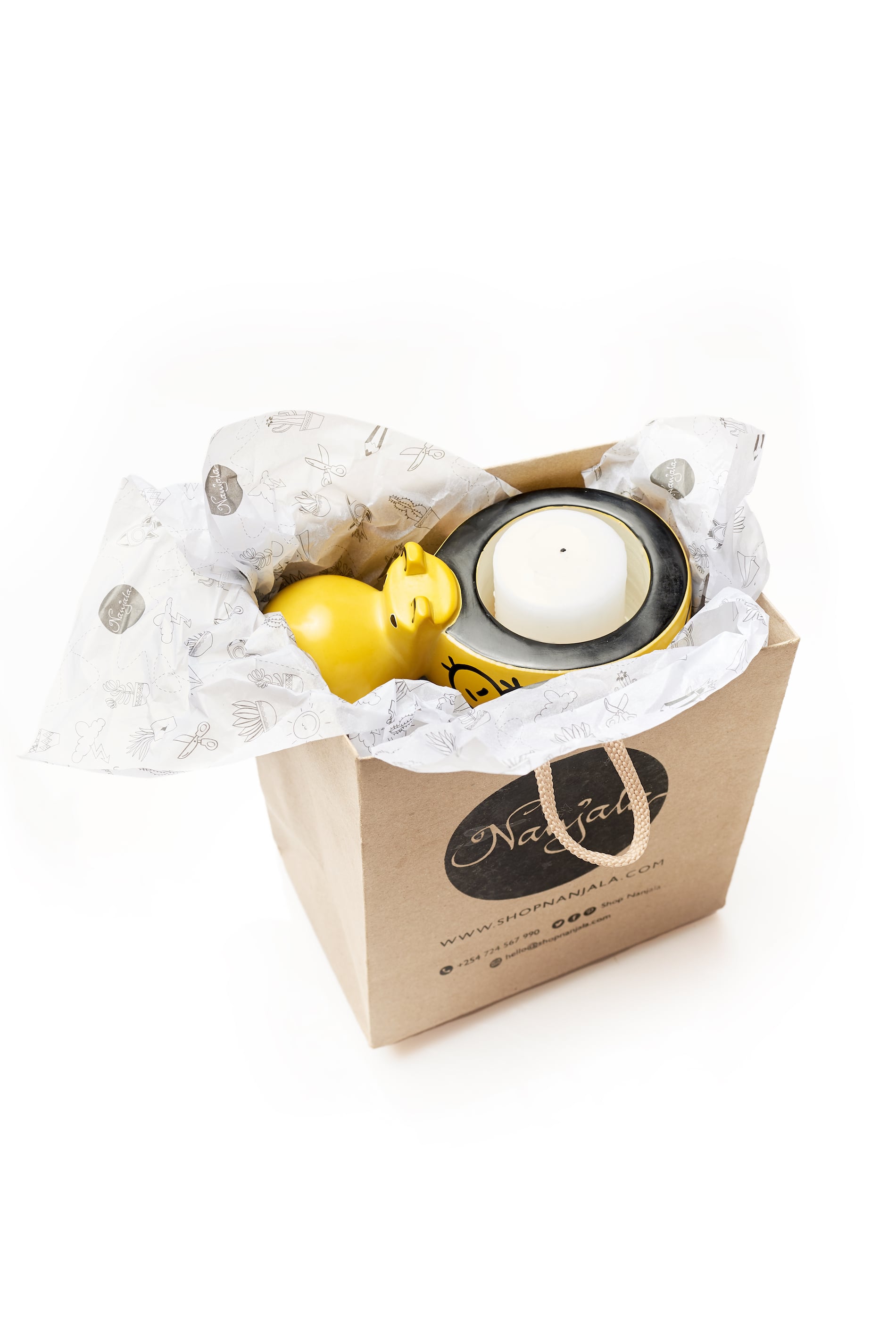
Gift bag and custom tissue paper combo by Shop Nanjala.
Custom packaging is a brilliant way to bring greater consistency to your branding. When you’ve worked hard to create a cohesive image across your online channels, your customers will expect the same from their order too.
Small additions such as custom tissue paper or stickers will liven up plain packaging and build brand recognition. Best of all, it leaves your customers with a lasting positive impression!
“We love the fact that noissue has a cool yet simple way to shop for custom tissue paper. At the time we were planning to launch gift products in the shop, we had a lot of issues looking for a local supplier to make tissue paper. The contacts we got just had too high a price. The moment I bumped into your platform and saw the little video of how easy and affordable it was to order online. We were sold!”
“Custom-branded packaging has really helped my brand to grow, as everyone who sees the Nanjala logo on our packaging gets to know our brand. At first, it may appear quite a trivial thing to do, but in the long term our brand is seriously building brand recall, and an appreciation from our customers who think the custom tissue, care labels, packaging boxes, and carrier bags are a great way of presenting their purchases as gifts to their loved ones. It also shows that we care about the small details!”
Want to know more about what custom packaging can do to your business?
]]>
Tue, 01 Oct 2019 22:57:04 +0000 https://www.noissue.co/blog/order-custom-stickers/
Custom stickers are one of the best tools to give your packaging that extra wow factor. Why? Because they create high brand awareness at a very low cost. For businesses who are new to custom packaging, stickers are a great way to dip your toe in the water.
For those who are still thinking about whether to order custom stickers, here are a few reasons why they are a fantastic investment for your business:
Why do stickers play an important role in packaging design?
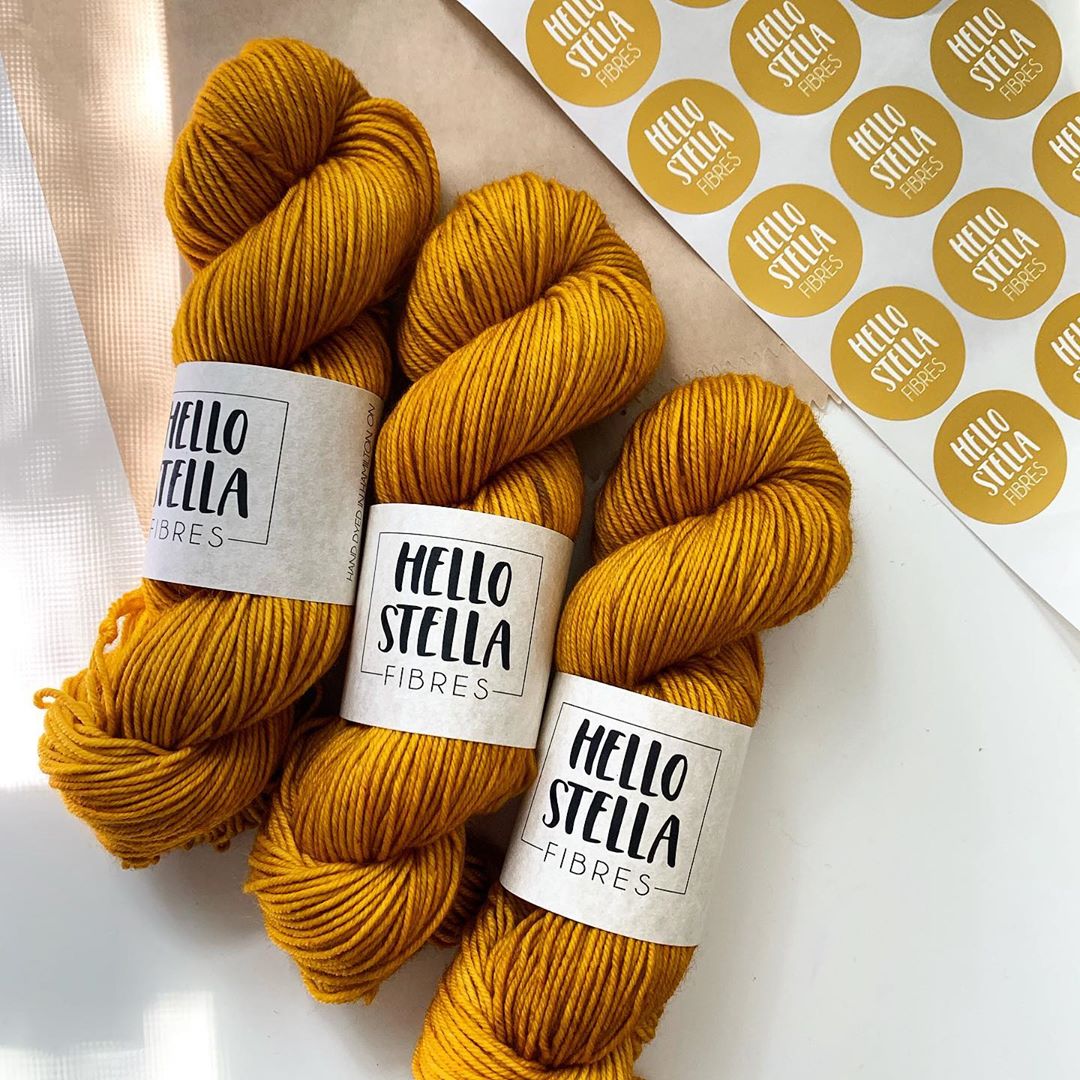
Stickers Are a Low-cost Addition To Your Packaging
Investing in branded packaging can be off-putting due to concerns about cost. But the decision to order custom stickers won’t break the bank! This is because they have a lower MOQ (Minimum Order Quantity) than packaging such as custom boxes. In fact, stickers are one of the cheapest ways for businesses to customize their packaging.
When we say ‘investment’, we are also talking about time. Time is a massively overlooked metric when it comes to packaging. The reason? Many small business owners are doing order fulfillment for themselves. If a packaging design is attractive but time-consuming to assemble, it simply isn’t practical.
Custom stickers are an easy way to give your packages a bespoke twist. All you need to do is whip it off the sticker sheet and apply!
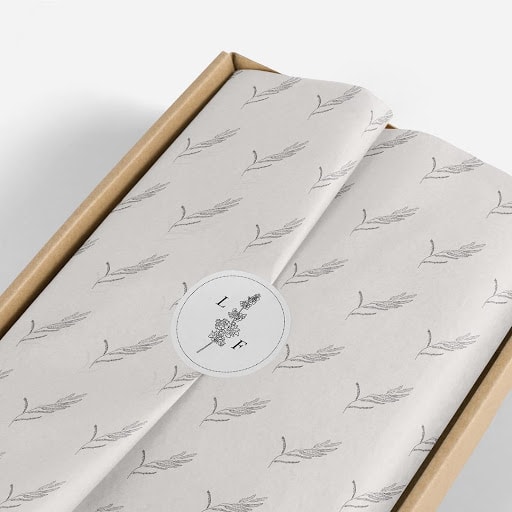
Stickers Are a Multi-purpose Packaging Solution
Custom stickers are one of the most versatile packaging solutions available. You can put them to use in a variety of different ways, such as:
Sealing the edges of gift wrap or gift bags, to prevent items from falling out.
Securing notes to the outside of packages.
Decorating plain external packaging e.g. boxes or mailers.
A branded gift with purchase for your customers.
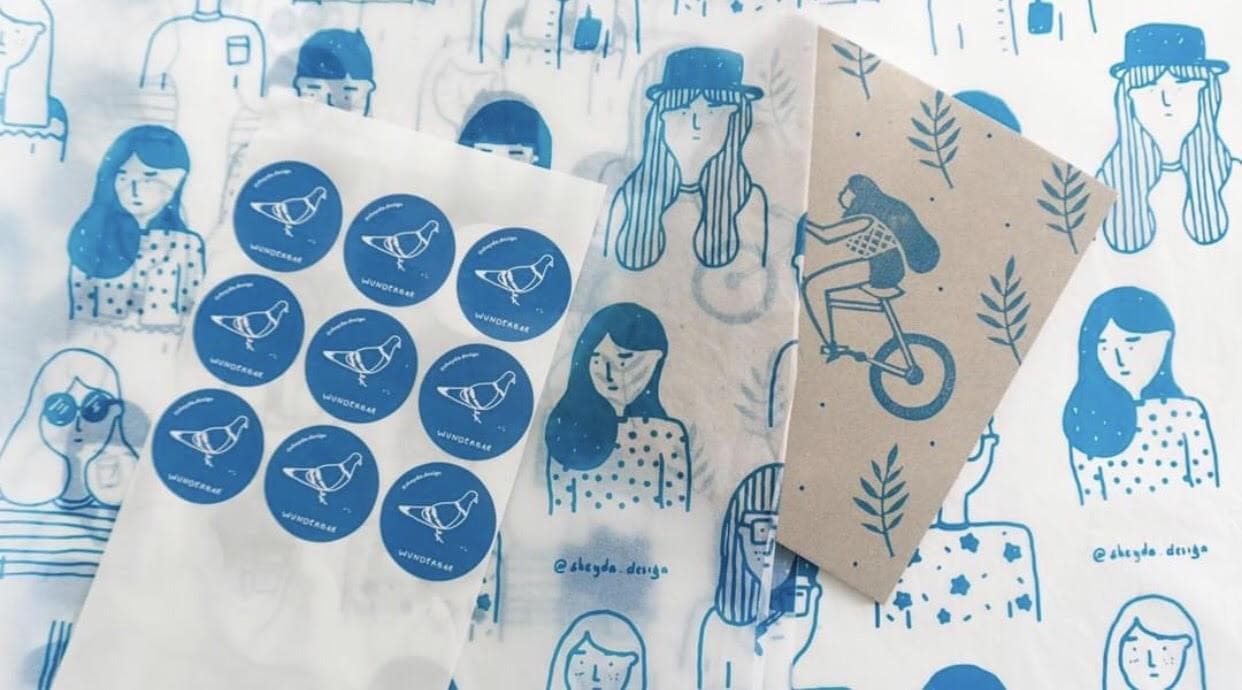
Stickers Provide a Great Focal Point In Your Design
The ‘focal point’ is the place in your packaging design where the eye is drawn to. This makes it the most effective place on your packaging to put important brand information, like company names and logos.
Stickers create a fantastic focal point on packaging. This is especially important if you plan on posting images of your packaging on social media. A prominent custom sticker with brand details is a low-cost way to develop brand recognition across channels!
How can I create unique and well-designed custom stickers?
1. Think About Contrast
Using one color palette for your packaging design creates a very cohesive image. But choosing a contrasting shade for your custom stickers is a great disruptor. It helps to draw the eye to important brand information more quickly. This is very important, especially when 7 in 10 consumer agree that product packaging influences their purchasing decisions!
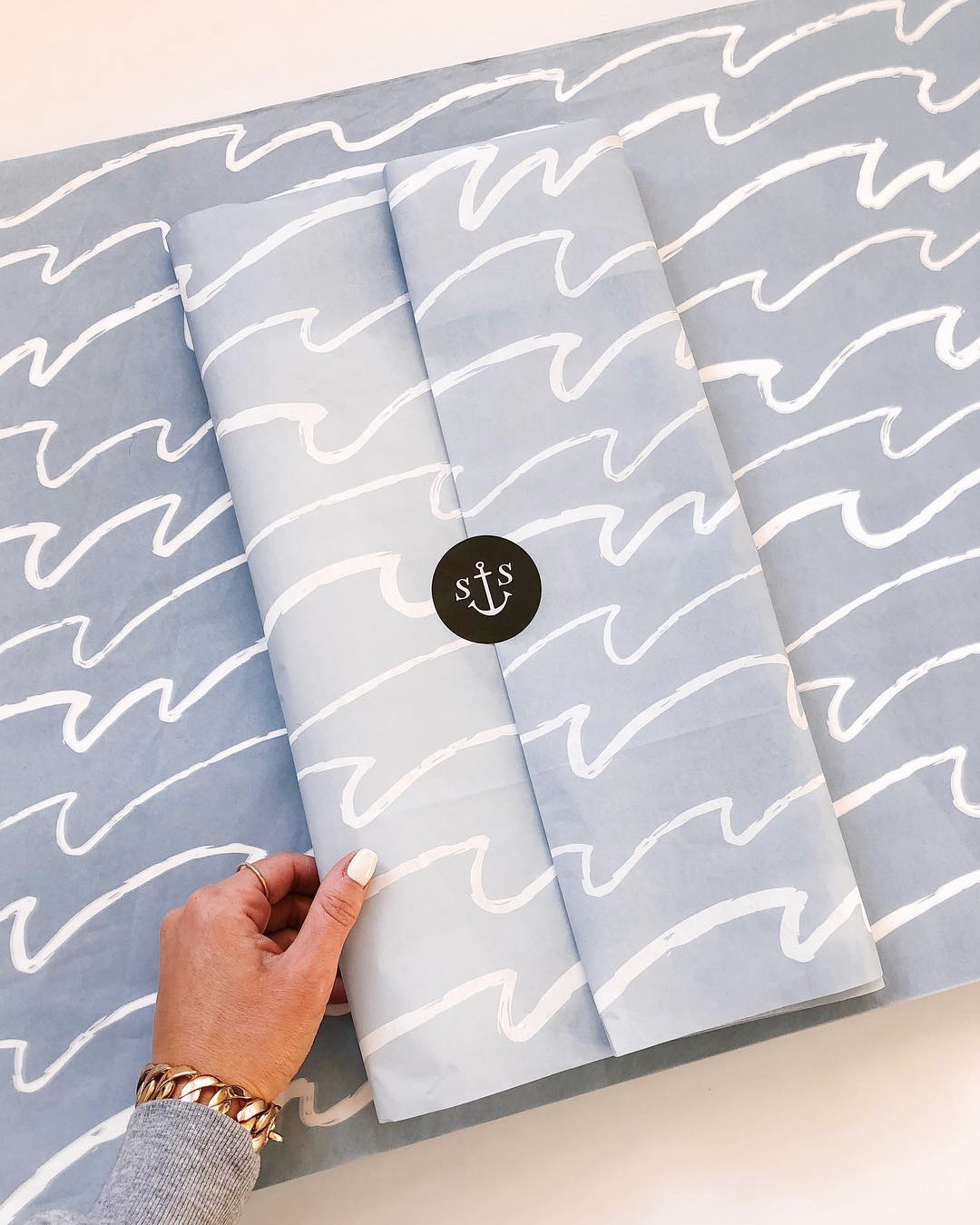
Nautical brand Store Society use black as the base color for their branded sticker design. It really makes it stand out against the blue of their custom tissue paper!
2. Consider Some Eye-catching Metallics
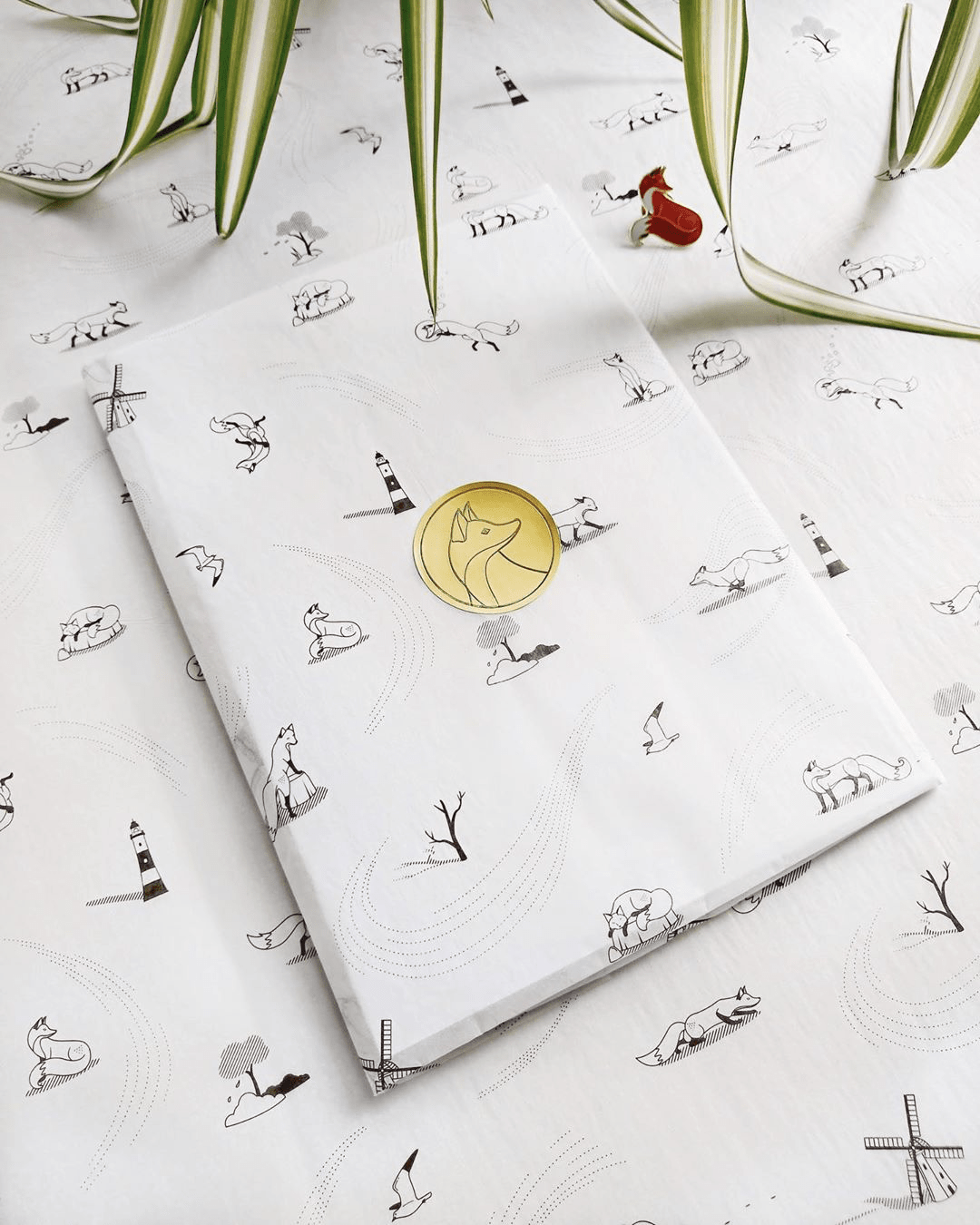
A striking gold custom sticker by Quinn the Fox
Choosing a gold or silver background for your custom stickers will really make them pop! The high gloss of metallic stickers gives your brand a luxury feel, especially if you have a more minimalist packaging design.
3. Add Information About Your Selling Channels
Custom stickers create a great point of interaction with customers, as they will need to remove them to unwrap packages or open gift bags. This engagement makes stickers the ideal place to put important brand details. When stickers are printed with information about selling channels, a brand becomes a lot more memorable.
Whether it’s social media handles or the address of your in-store boutique, putting these details on your stickers is a clever post-purchase marketing strategy. It provides a subtle prompt for your customer to check out your brand’s offerings in the future!

Madame Fancy Pants integrate their store address and date of establishment into their sticker design.
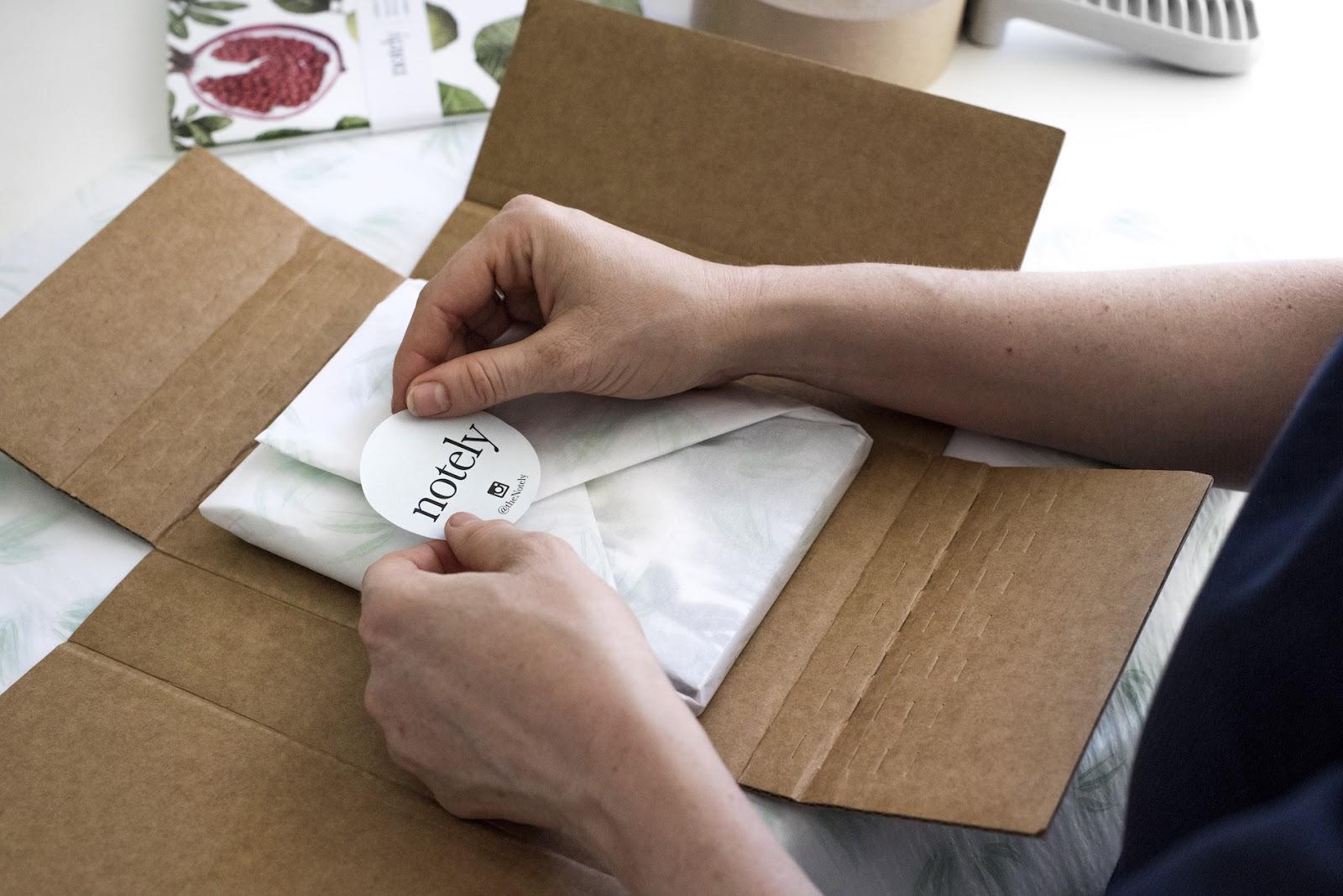
Stationery brand Notely chose to place their Instagram handle on their custom stickers.
4. How About a Square Design?
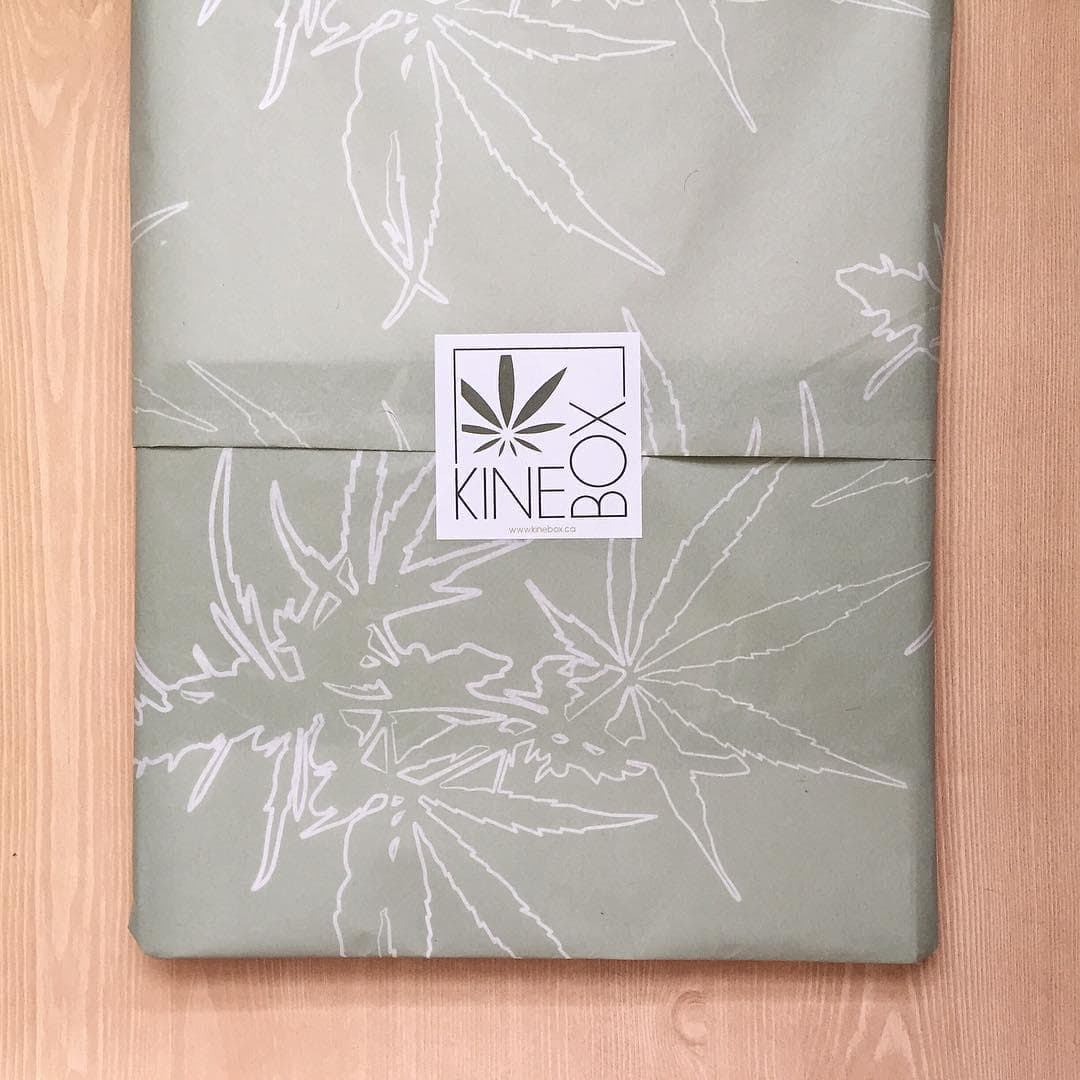
Square or rectangular stickers offer brands a few advantages. They are less common than circular stickers, and so provide a lot of visual interest. Having stickers with corners also opens up some interesting design possibilities, as shown above by Kline Box!
Custom stickers do provide a great place to put your logo or brand name. But this certainly isn’t all you are limited to! Thinking outside the box shows that your brand has a creative outlook – always a positive!
5. Consider a Holiday Sticker Design
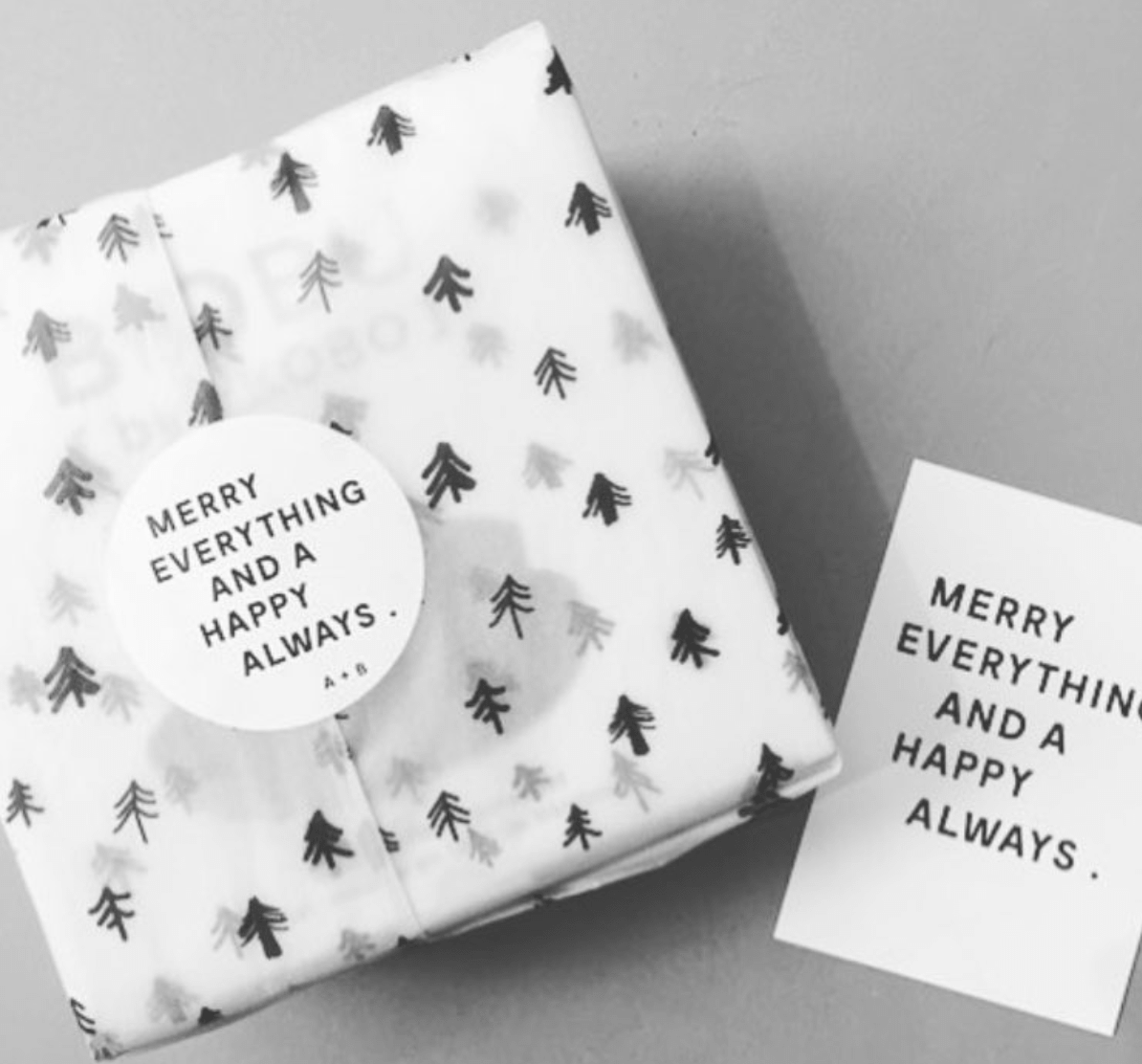
A cheerful seasons greetings sticker design by Der Kleine Salon
In the coming months, your customers will start shopping for gifts for loved ones. Catering to this need through a seasonal packaging refresh is a great way to lift your customer service game!
However, it might not be convenient or cost-effective for your business to design all-new holiday packaging. So, why not order custom stickers with a seasonal twist instead? It’s a low up-front cost, and an easy way to advance your brand’s holiday marketing efforts.
6. Add Some Artwork!

Illustrator Yali Ziv chose to add a cute drawing of herself to her customer orders!
If you are an illustrator or a graphic designer, custom stickers are an excellent way to decorate your parcels with miniaturized artwork! If you have any signature characters or styles, putting them on the exterior of your package makes it much more personalized.
7. Use Stickers To Highlight Your Brand’s Mission
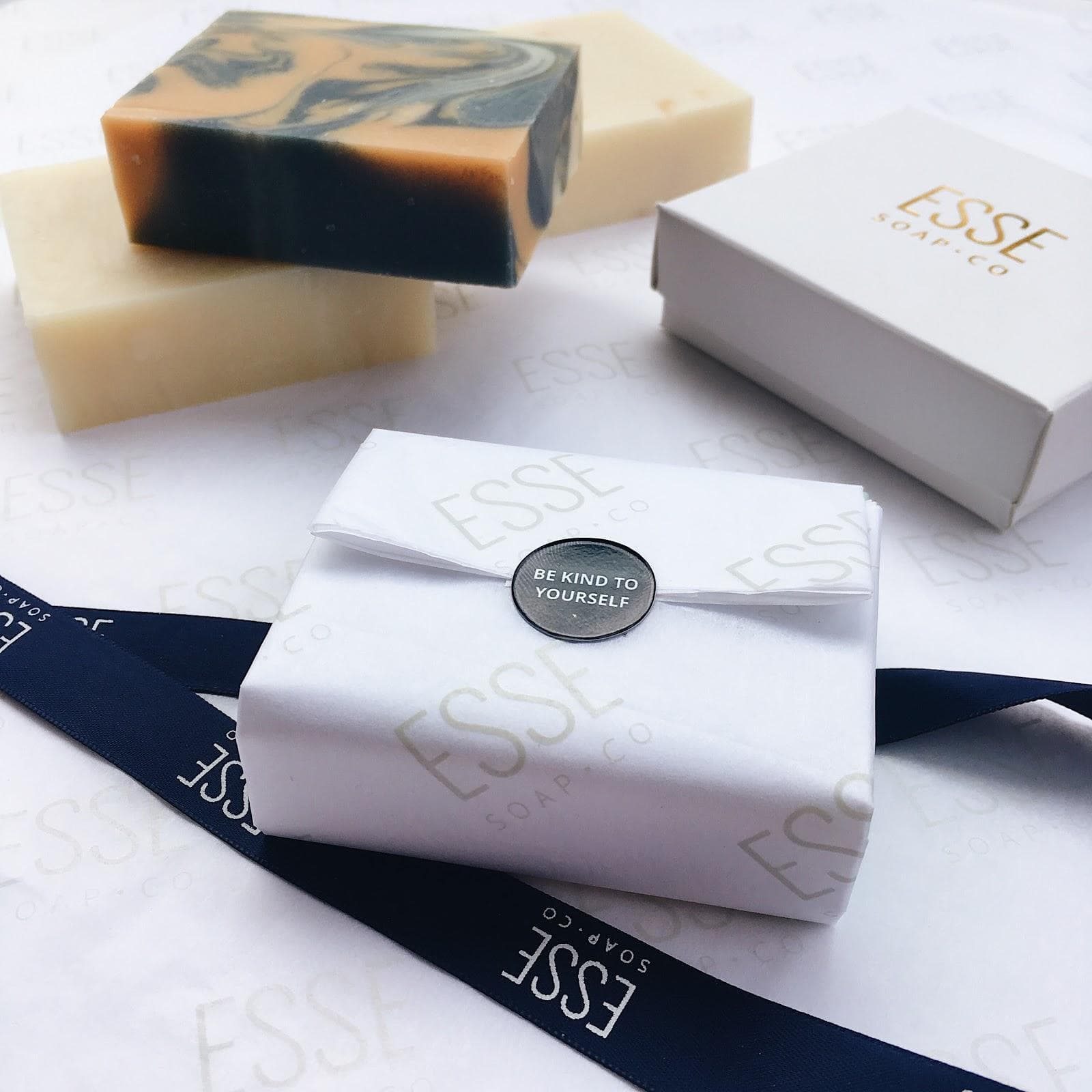
Your brand might not have an official slogan. But a short saying which expresses your mission really helps to pull together a cohesive brand image.
Esse Soap Co puts self-care at the center of their brand identity. They market this commitment by putting the words ‘be kind to yourself’ on their custom stickers. It’s a simple and heartfelt way to showcase your values!
Why You Should Choose noissue:
We are proud to offer one of the best services for designing great quality and full-color custom stickers for your business! Here are a few reasons why:
Our Stickers Are 100% Eco-friendly
Because we use paper stickers instead of plastic, this makes them compostable! The paper we use is acid-free and FSC-certified, which ensures that it’s been harvested using the most sustainable practices. We also print our custom stickers with soy-based inks, which are 100% renewable.
An Easy Design Process
Our design tool makes it easy for businesses to create the sticker design they envision. You simply upload your logo or completed design and use our sticker templates to get started!
Low Minimums and a Fast Turnaround Time
With our MOQ starting out at just 250 units (including free shipping!) our custom stickers are accessible to every level of business. From design to delivery, we offer a speedy 3-week turnaround for all sticker orders.
Want some more information before you order custom stickers?
]]>
Mon, 30 Sep 2019 19:46:13 +0000 https://www.noissue.co/blog/sustainable-shipping-tips/
Don’t look now, but the holiday season is almost here!
The holidays are a fun-filled time for most people. But online merchants often find themselves stressed out by the pressure to deliver fast, accurate shipments worldwide. As more consumers have come to demand fast, free holiday shipping, online merchants have obliged.
But despite the stress that eCommerce holiday shipping often brings, at least it seems environmentally-friendly. All customers have to do is browse the Internet and, after a few simple clicks, have their orders delivered right to their doorstep without having to get in their car. Very eco-friendly, right?
Not so much! In reality, sustainable shipping is a rarity in eCommerce.
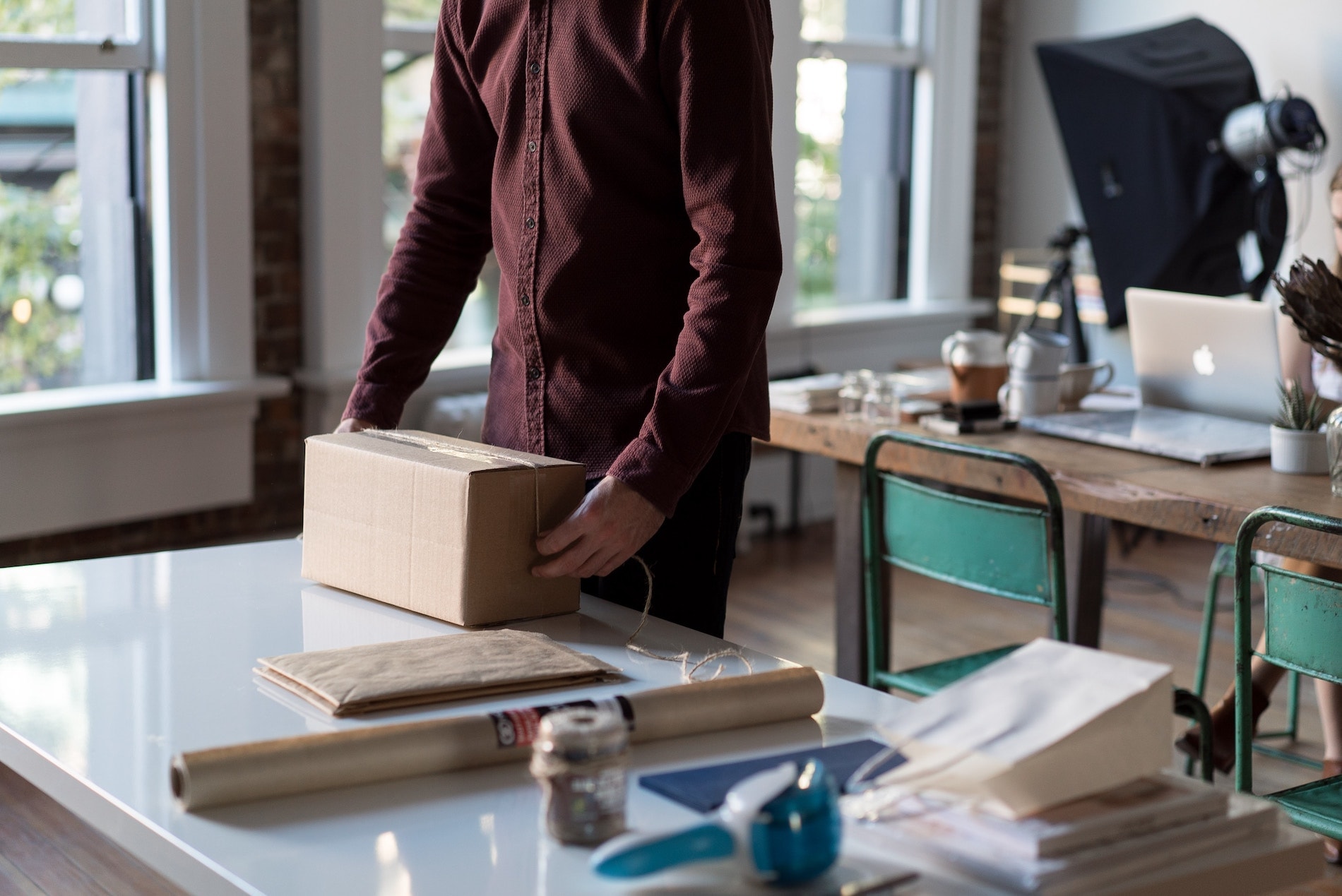
As major eCommerce players like Amazon, Walmart, Target all move quickly towards 1-day shipping and even same-day delivery, the hidden cost has become more apparent. This huge demand for fast shipping comes at a great price to the environment, especially during the volume-heavy holiday shipping season.
The eCommerce boom has resulted in serious environmental harm, especially from the shipping sector. The increased demand for fast deliveries has resulted in higher greenhouse gas emissions from the trucks and cargo planes tasked with delivering the orders. Because we require ever-higher volumes of product packaging, this puts a huge strain on the natural environment.
The answer: sustainable shipping! By adopting an eco-friendly packaging and shipping policy, your business can limit its environmental impact, even as the rush of the holiday shipping season looms.
But just how should you implement eco-friendly shipping? Here are our 8 tips on how to make your shipping more sustainable!
1. Offer Carbon Offsets at Checkout
Offering carbon offsets at checkout is a great way to promote eco-friendly eCommerce.
Carbon offsets, when purchased, are used to counteract one’s own carbon footprint by investing in programs that reduce greenhouse gases. Online merchants can easily offer carbon offsets at checkout through software applications such as Carbon Checkout. This is a simple way for environmentally-conscious customers to contribute to a greener future.

2. Source Sustainable Packaging
A sustainable shipping initiative also means using eco-friendly packaging!
Packaging waste is a huge issue in eCommerce. Businesses frequently use far more packaging than is necessary. Otherwise, they use packaging materials such as soft plastic that are non-recyclable and make responsible disposal difficult. As a result, packaging is responsible for a third of all household waste.
[embedded content]
Fortunately, there’s plenty of options out there in terms of affordable sustainable packaging. Using recycled materials, paper and cardboard, organic fabrics and biodegradable packaging are all great eco-friendly packaging materials to consider.
For larger shipments, you can even use recycled pallets to be especially eco-friendly in your shipping strategy. For smaller orders, compostable mailer bags are an especially effective way to reduce your carbon footprint.
You can also find clever ways to offset the impact of your packaging needs. For example, noissue’s eco-alliance allows their customers to plant trees with every order in areas suffering from deforestation. This means that your business can positively contribute to environmental issues through your operation.
Taking this simple, minimalist approach to packaging will help to cut both waste and fulfillment costs for your business.
For more on environmentally-friendly packaging solutions, check out our guide!
3. Reduce Package Size
Make your package sizes smaller and more efficient if possible. Avoiding ‘over-packaging’ not only creates a more eco-friendly packaging design – it creates a more sustainable shipping strategy.
By taking up less space on a delivery truck, cargo plane or freight train, you can do your part in increasing shipping efficiency. This ultimately reduces emissions and lowers your business’s carbon footprint. Smaller package sizes are also a great way to cut your shipping costs. It’s a real win for the environment and your company’s bottom line!

4. Schedule Pickups
Rather than drop off orders yourself, always try to schedule pickups for them. Since courier trucks are always on a route, this is a small but effective way to personally reduce your carbon footprint.
5. Consolidate Customer Orders
Consolidating orders is another great way to promote sustainable shipping and fulfillment.
The rapid growth of 1-day and even same-day shipping and delivery has made it easy for customers to place one-off orders whenever they want. This makes their online shopping experience more convenient. But it takes a massive toll on the environment due to this lack of delivery efficiency.
Try to prompt your customers to buy several products at a time by having a product count or cost minimum for free shipping. At the very least, always try to send out multiple orders to the same customer at once. Preferably, you should be sending goods out in a single package, even if they were placed separately.
Consolidating customer orders can not only reduce the number of delivery vehicles on the road and subsequently lower emissions, but also save your company money!
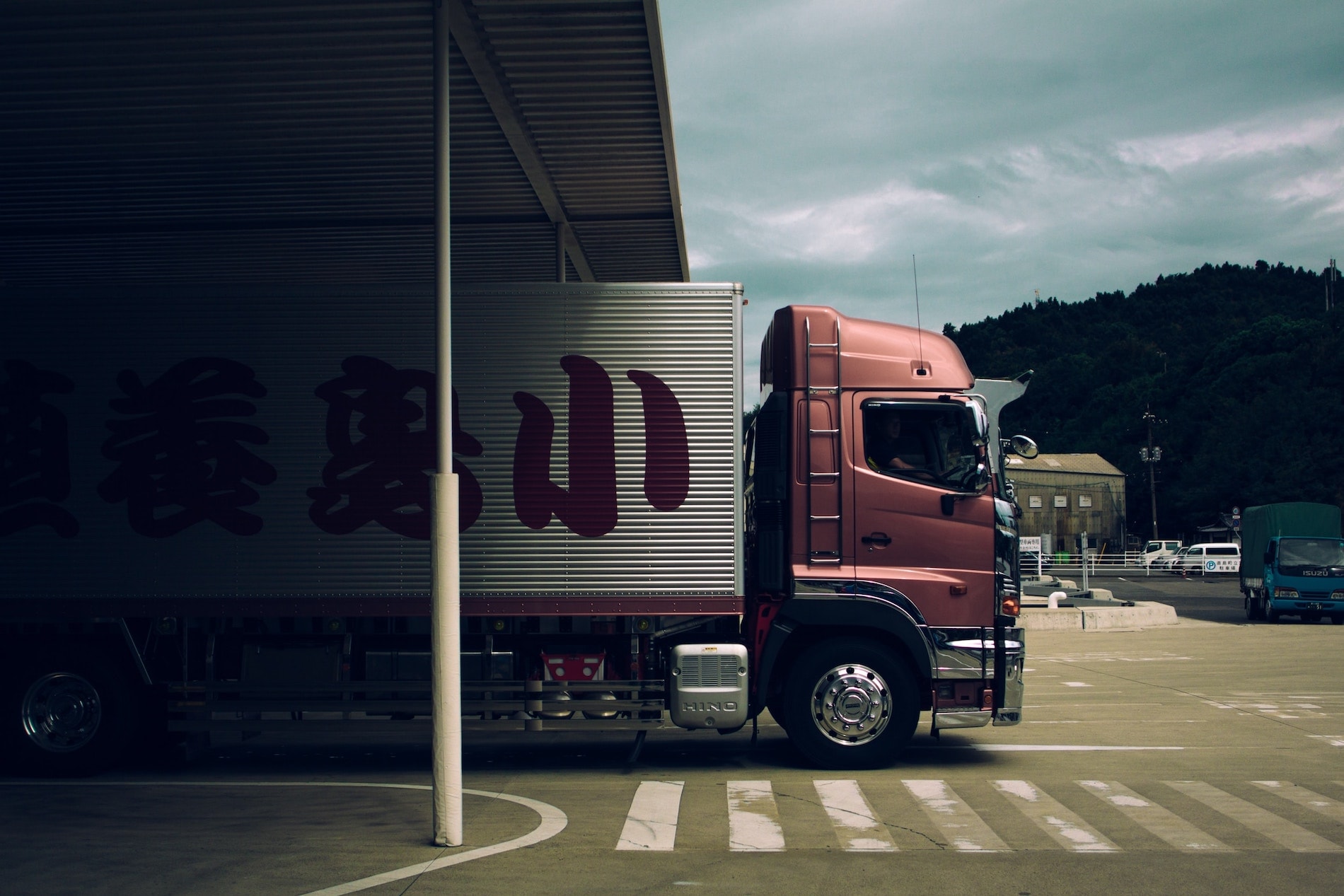
6. Use Ground-Based Shipping Solutions
Another sustainable shipping solution is to use ground-based shipping whenever possible. Yes, it may be slower than using air freight, but it still generally leaves a smaller carbon footprint. As an incentive, consider offering credits or perks like free or reduced shipping for customers who choose this option.
7. Market Your Slowest Shipping Option as the Greenest
Likewise, another good idea is to mark the slowest shipping option on your online store as the most environmentally-friendly one. Doing so is a simple but effective way to identify it for eco-conscious customers. It gives them an incentive to lessen their environmental impact in exchange for a longer delivery time.
8. Choose Eco-Friendly Shipping and Fulfillment Partners
Remember – you’re not alone when it comes to looking for eco-friendly shipping and fulfillment solutions!
There are many shipping and fulfillment partners out there that offer environmentally-friendly options for both shipping and order fulfillment. FedEx, for example, has its EarthSmart initiative. This helps them to be environmentally-conscious with its fuel efficiency, sustainable packaging, and green vehicle options.
UPS also offers sustainable shipping and fulfillment solutions with its eco-friendly packaging options that include reusable envelopes and an environmentally-friendly packaging program.
Plus, you can look for shipping and logistics companies that are certified with SmartWay, an EPA program focused on reducing fuel consumption and increasing efficiency.
Sustainable Shipping: Give the Gift of a Better Environment
The holidays may be a gift to your company’s bottom line, but they can really be a Scrooge to the environment! Don’t leave the planet with a lump of coal this year. Do your part in protecting the environment by greening your shipping strategy, adopting eco-friendly packaging, and giving the gift of a truly sustainable future!
Want more holiday shipping tips? Check out our Top 5 Shipping and Logistics Mistakes to Avoid During the Holidays!
]]>
Wed, 25 Sep 2019 20:16:19 +0000 https://www.noissue.co/blog/sophie-cull-candy/
Sustainable fashion is a real buzzword right now. On the 22nd September 2019, the Green Carpet Fashion Awards debuted for the third year running – and the best attended yet.
It’s clear that ethical fashion is far more than a passing trend; both consumers and designers alike are becoming increasingly conscious about their carbon footprint.
But it’s easy to forget that ‘sustainable fashion’ means more than just clothing. The importance of sustainable jewelry and accessories is rarely talked about. This means that as consumers, we are far less likely to think about how these items are made, in comparison to garments. But ethically-made accessories equally contribute to reducing the environmental impact of the fashion industry.
Sophie Cull-Candy founded her namesake label with the goal of slowing down the fast fashion cycle and bringing sustainable jewelry products into the mainstream. She tells us about the inspiration behind her brand, and the importance of designing accessories to be treasured long-term.
(In Sophie’s own words):
“I’ve been running my London-based namesake label since the end of 2014. It all started through a mixture of chance and choice – I’d known for a long time that I wanted to start my own label, but I didn’t know quite when it would be. I started off by making glitter Perspex jewellery just for fun during my final year at university. A few of my friends wanted to buy some and magazines started using them for editorials, and it all bloomed from there!”
“The label has developed and changed a lot since then, and it’s now going in a direction I feel very comfortable with. I‘ve always liked to produce things at a slower, more sustainable rate than the conventional fashion buying seasons. Last year, I decided to disregard seasons completely, and just focus on making small limited runs of sustainable jewellery that I tweak and add to when I feel they’re ready. Ultimately, I want the Sophie Cull-Candy label to be a place of luxury for people to shop at carefully and consciously.”
“Almost all of my inspiration comes from nature – I absolutely adore the complex color palettes, whether it’s a whole view or the detail in one little flower. I’m also really fascinated by humans’ interaction with nature. I’m keen on creating pieces that fuse the beautiful visual drama of nature with a relaxed glamor.”
“I want customers to know that what they’re buying will last, and that fashion is there to be respectfully treasured and not to be kept for just one season.”

Eco-friendly earrings by Sophie Cull-Candy.
Mass production is the backbone of the fast fashion cycle. Brands must push out huge quantities of product in a short space of time to meet demand, which creates huge amounts of waste and carbon emissions.
The fashion industry produces 4% of global waste every year – that’s 91 million tons. The main reason for this is the so-called ‘cut and sew’ strategy, where the excess cloth is discarded once a garment has been cut, instead of it being reused.
For Sophie, the key to sustainable jewelry making is slowing down this cycle by focusing on limited runs of each design. This allows her to be much more conscious over the materials she uses, and ensures that her footprint is kept as small as possible:
“Sustainability is key to me and sits at the forefront of everything I do. I work on very small batches of each design in order to reduce waste, and any excess material is kept for future projects or accessories. There are lots of challenges; I’m very aware that the fashion industry are terrible polluters of the planet, and I try to run my label so that it doesn’t contribute any more to this.”
“Everything I design is of the highest quality, and is made to keep and hand down to other generations – slow fashion is the only direction that the fashion industry should be moving in.”
Sustainable packaging was another avenue to help Sophie express the essence of her brand. Her custom tissue paper not only extends her branding to every part of the customer experience, but also draws attention to her eco-friendly commitments:
“I love to experiment, and I used to worry that this would look too disorganized. But then I realised that as long as what I was making really excited me, all would fall into place. Now I have a logo and lettering that I feel really reflect my label, along with my more subtle packaging, and I feel that this really helps to bring together and compliment my glittery floral style.”
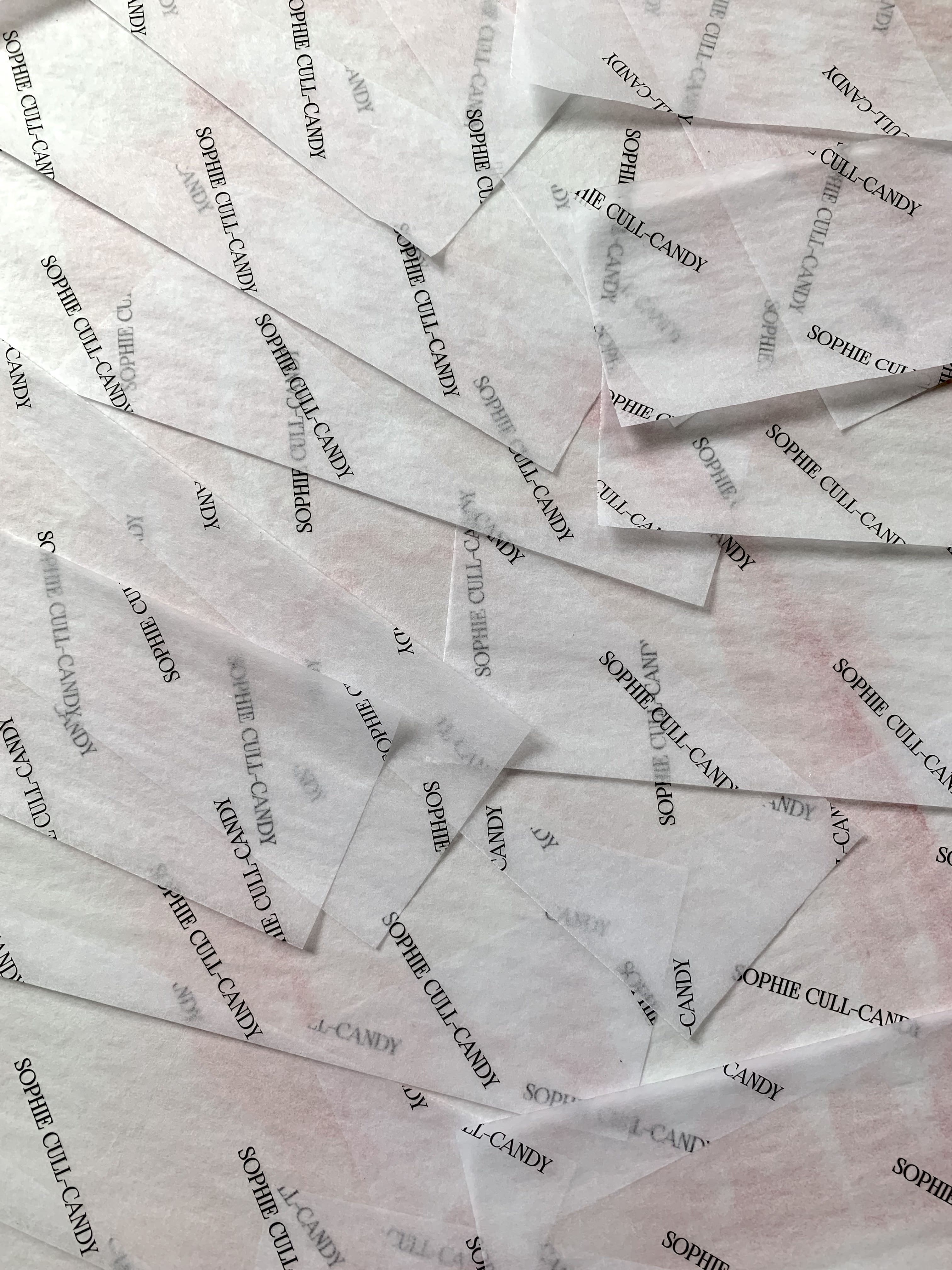
“Once you remove the jewellery foam protector and sticker, all of my packaging is made of recyclable materials – but obviously, I’d be keen for people to store the earrings in the box and custom tissue paper they come in!”
“I chose noissue because I initially saw the compostable mailers and thought they were a great idea! I became interested in the ethos of the company – while my designs are a bit too delicate to send in the bags, I opted for the eco-friendly custom tissue paper.”
“Custom packaging has really helped elevate the luxury feel of my label, and I was so pleased to find an eco-friendly and recyclable way to do this. I was also thrilled with finding out that noissue is part of the Eco Packaging Alliance. For every order I place with them, I get to pick an area for a tree to be planted in!”
Liked this case study? Found out more about sustainable handbag brand Kaloskopic!
]]>
Thu, 02 May 2019 07:03:20 +0000 https://www.noissue.co/blog/boxx-kids-sustainable-packaging-for-ethical-kids-clothes/
It’s a well-cited fact that fashion is the second-most polluting industry in the world. As consumers grow more conscious, reselling sites and thrifting have become popular ways to reduce the footprint of our purchasing habits.
But children’s clothing sees few of these innovations, which presents a moral dilemma for parents. Kids grow fast, so clothing must be replaced regularly. For this reason, the industry has been monopolized by the fast fashion model.
Sourcing ethical kids’ clothes is an uphill battle when chain stores are pushing out cheap and often poor-quality garments, which can only handle limited re-use.
Dasha Roth saw a gap in the market for kids’ clothing made from high-quality organic textiles, designed to last long-term and be passed on to the next child.
The resulting brand, Boxx Kids, produces ethical children’s clothing made from certified organic cotton. Dasha tells us about their mission to make environmental and social sustainability mainstream, and how noissue sustainable packaging helps spread this message.
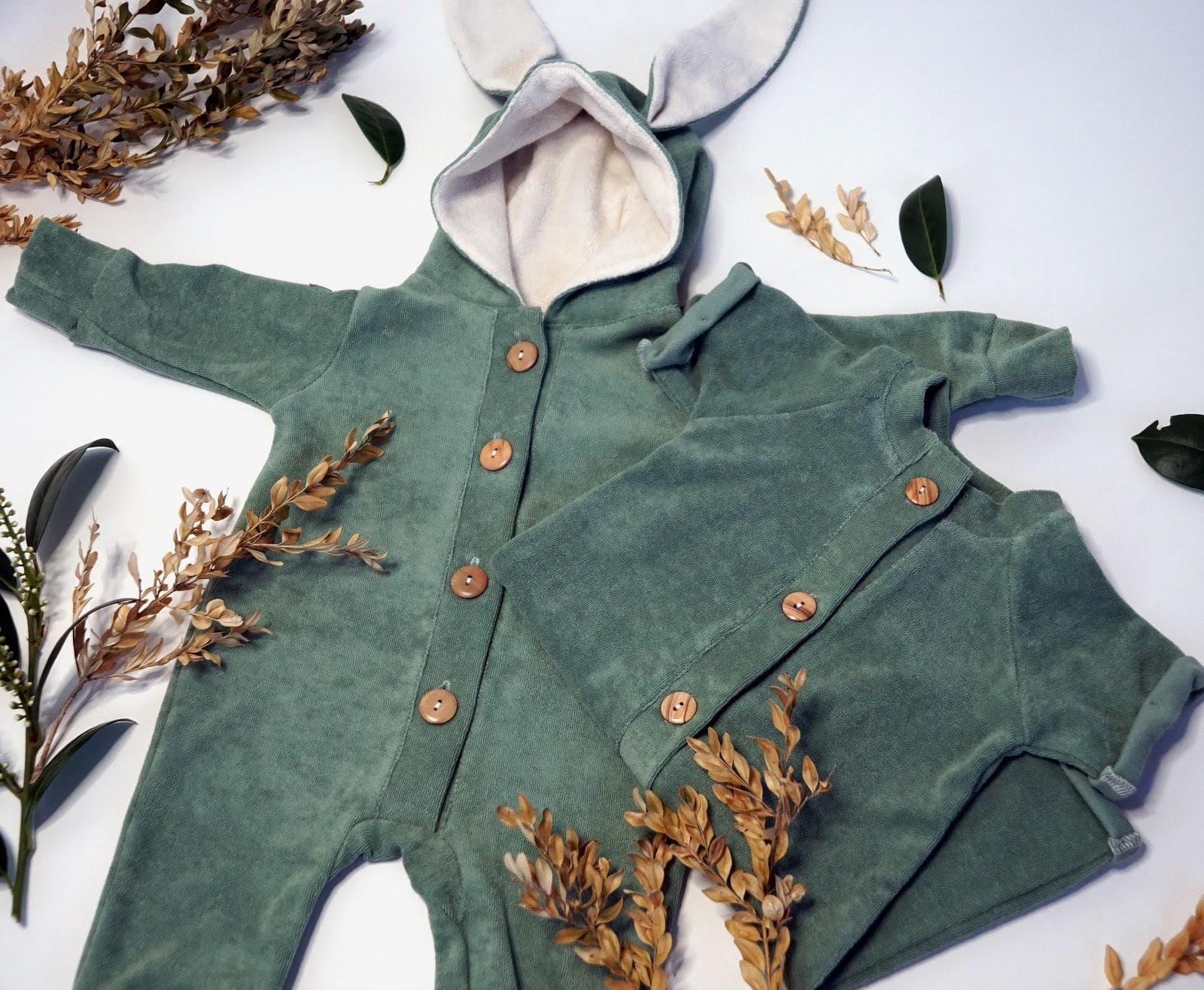
(In Dasha’s own words):
“We are so excited to introduce our organic baby clothing and children’s apparel label to you!”
“It all started as a side project of two new mums. We wanted to make clothes for our bubs which were more than just attractive and durable. We wanted them to be made from the most sustainable materials currently available and in ethical conditions. – not through child labor in a sweatshop, like so many products from well-known international clothing brands.”
“At BOXX kids, sustainability and ethical clothing production are central to everything we do. As mothers, we believe in the motto ‘be the change you want to see in the world’. We love fashion, but we don’t want our clothes to come at the cost of people or the Earth.”
“We hope that other mums will vote with their money for the world they want for their kids. Not to mention that the high quality fabric choices of our clothes guarantee that they will be worn over and over again, and then hopefully passed onto another sibling or friend.”

Cotton might be the preferred fabric when it comes to children’s clothes, but this can come at a high price. Cotton is extremely resource-intensive to grow – making just one shirt requires 713 gallons of water!
This makes organic cotton the key to manufacturing ethical kids clothes. It has a much lower environmental impact than regular cotton because it avoids toxic pesticides and saves on water usage. For this reason, Dasha ensures that all of their textiles are sourced sustainably:
“Our fabrics are GOTS (Global Organic Textile Standards) certified organic, which means that all people involved in the production process are under safe working conditions and receive fair salaries. Independent institutes certify our cotton, which ensures that it is free of hazardous substances that cause skin irritations and allergies.”
“We buy everything locally from European suppliers, and our clothes are professionally made in the Czech Republic by our skilled seamstresses. This means the materials and products don’t travel around the world a couple of times before they reach our customers.”
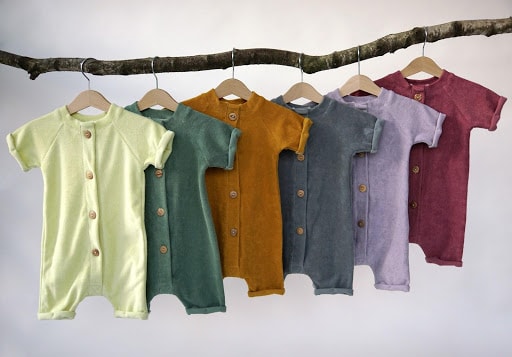
Of course, running an ethical kids clothing brand comes with challenges – namely, the higher price point. Sustainable manufacturing practices and paying employees living wages does come at a cost to the consumer. But Dasha is hopeful that more awareness around child labor in the textile industry is having an impact:
“It’s tough to compete with the prices of conventional kids’ clothing. Sometimes it’s even labelled as organic, but still costs less than what we pay for materials alone.”
“Hopefully, more people now realise that if something is cheap, someone somewhere is paying for it. And that it’s certainly not the CEOs of these companies. It’s the farmers, factory workers and clothes makers, including children.”
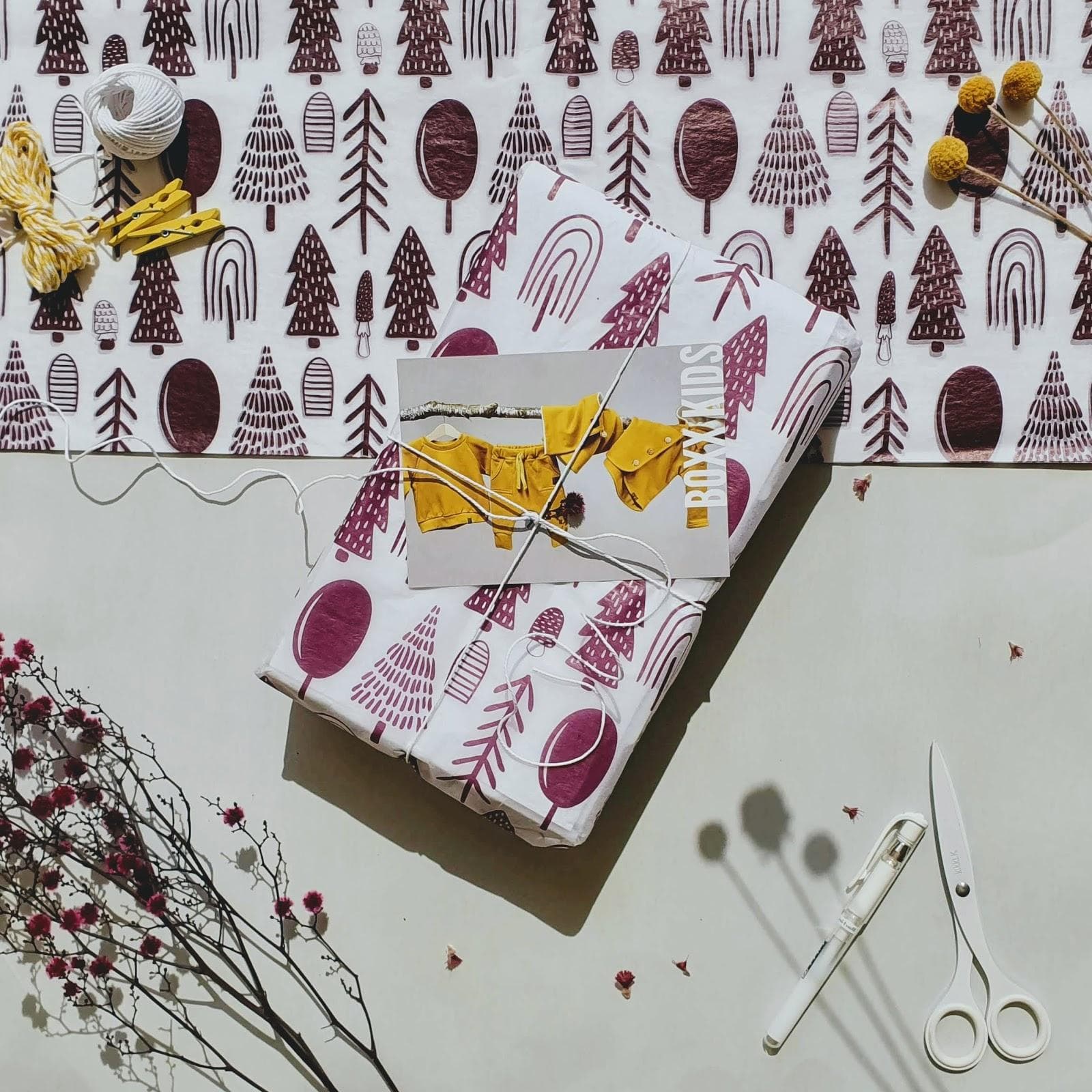
It’s important that sustainable brands communicate their mission through more than just their product. Consumers want to reassure themselves that a brand is authentic and stands by its values. This is where sustainable packaging comes into play!
Eco-friendly packaging lets customers know that a brand practices what it preaches in every part of its operation. Moreover, it’s also a serious selling point. 62% of consumers are now more likely to buy from brands that use sustainable packaging!
noissue’s low MOQs for custom tissue paper and compostable mailers makes it easy for small businesses to find the sustainable packaging solution that fits their needs:
“The other challenge is finding suppliers and manufacturers of sustainable materials with the same ethical values as us, and who cater for small businesses with smaller MOQs. During the short few years we have been around, we have seen great progress in this area. More and more companies are starting to put sustainability and ethics before profits by exploitation – of other people and of our planet.”
“We love that noissue paper is not only FSC-certified, but that the company also contributes to global reforestation by planting trees, just like us! It is now even more important than ever to use only FSC-certified paper seeing the Amazon rainforests on fire – it is being deforested at record rates, with one of the reasons being paper products.”
Not only does our custom tissue paper make your brand more eco-friendly – it improves the customer experience too! A low-impact unboxing experience is a perfect way to cap off your customer’s interaction with your brand:
“Put simply, we think a quality product deserves nice packaging! Lots of our kids clothes are bought as gifts, and it just makes the whole gifting and receiving experience much more special and fun. We wanted to offer our customers the option of having their orders wrapped up beautifully in an eco-friendly custom tissue paper – made by a company who also gives back!”
“We thought it was only appropriate to celebrate the importance and amazingness of trees, with a playful minimalistic tree print that goes well with the colour palette of our clothes.”
“Our customers love our packaging and it is great that it often starts a conversation about the responsibility of every individual and company, no matter how small, to contribute to a better future for us all, especially our children.”
]]>
Tue, 24 Sep 2019 16:25:37 +0000 https://www.noissue.co/blog/the-guide-to-seasonal-packaging-for-small-businesses/
With the holiday season fast approaching, now is a great time for brands to invest in a new look. Seasonal packaging is a fantastic tool to give your brand some extra relevance for this time of year. When competition is high, a festive revamp really can make all the difference to your marketing efforts!
It is a myth that seasonal packaging for small businesses simply isn’t accessible. Low MOQs for custom packaging allow businesses of every size to create a holiday packaging design that turns heads.
Christmas also isn’t the only time of year where seasonal packaging is useful. Depending on your brand, smaller holidays throughout the year might have greater relevance.
So, what is the key to a successful packaging refresh, and how do you know which holiday season is right for your business? Our guide to seasonal packaging for small businesses is here to help!
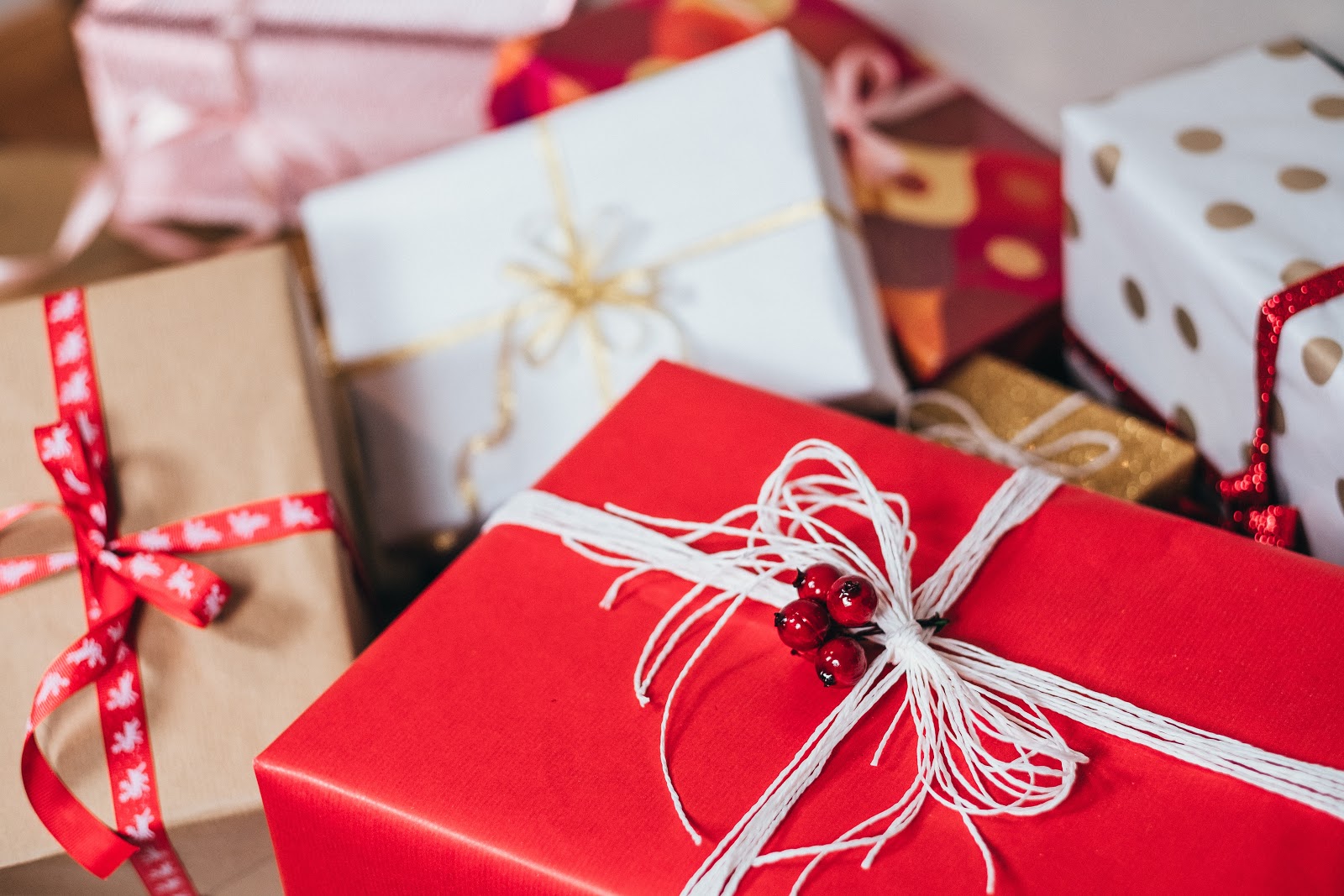
What are the Benefits of Seasonal Packaging For Small Businesses?
Consumers are overwhelmed by choice when it comes to brands and products. This intensifies even more during the holiday season. We simply don’t have the means or the time to compare every option that’s out there. So, we have to rely on a series of shortcuts. The most important of these is our visual perception – whether we find a product attractive to look at.
According to Nielsen, 60% of consumer decision-making happens at the shelf. This is why product packaging design is such an important tool for brand storytelling. Packaging catches our attention, and aids in our split-second decision-making.
There is no better time than the holiday season to make this work to your brand’s advantage. For most businesses, seasonal events are crucial to attracting new customers. They are also a major source of revenue. In 2018 alone, holiday sales amounted to $719 billion dollars in the United States. When there is intense competition to tap into this goldmine, you need to get creative.
During the holidays, consumers are primed to search out ‘appropriate’ products for gifting. This makes a seasonal packaging design a major asset. It makes your brand relevant in consumer’s minds, and creates a sense of exclusivity. Most of all, it promises a unique and memorable unboxing experience, which is a massive drawcard during the holiday season!
Top 5 Tips for Successful Seasonal Packaging:

1. Take Advantage of Low MOQs For Custom Packaging
Multinational brands are shifting huge volumes of product over the holiday season. But sourcing seasonal packaging for small businesses is a different ballgame.
For one, your needs are going to be more modest. And because your packaging design is temporary, the last thing you want is to be left with excess stock you can’t use for another year. To avoid this, you need to seek out a supplier who can fulfill a low MOQ.
noissue’s MOQ for custom tissue paper and custom stickers starts out at just 250 units, and at 5 rolls for our custom packaging tape. We make it easy for every size of business to source the order size that matches their needs.
Your packaging needs will depend on your order volumes and which holiday you are celebrating. For a smaller holiday, such as Valentine’s Day, your packaging design will likely be in use for no longer than two weeks prior. For Thanksgiving and Christmas, the window of usage is longer, around six weeks.
But if your seasonal packaging design is celebrating an actual season i.e. the summer, you’re looking at a usage period which is in months rather than weeks. It’s important that you consider this carefully to avoid running out of supplies early, or having excess left over.
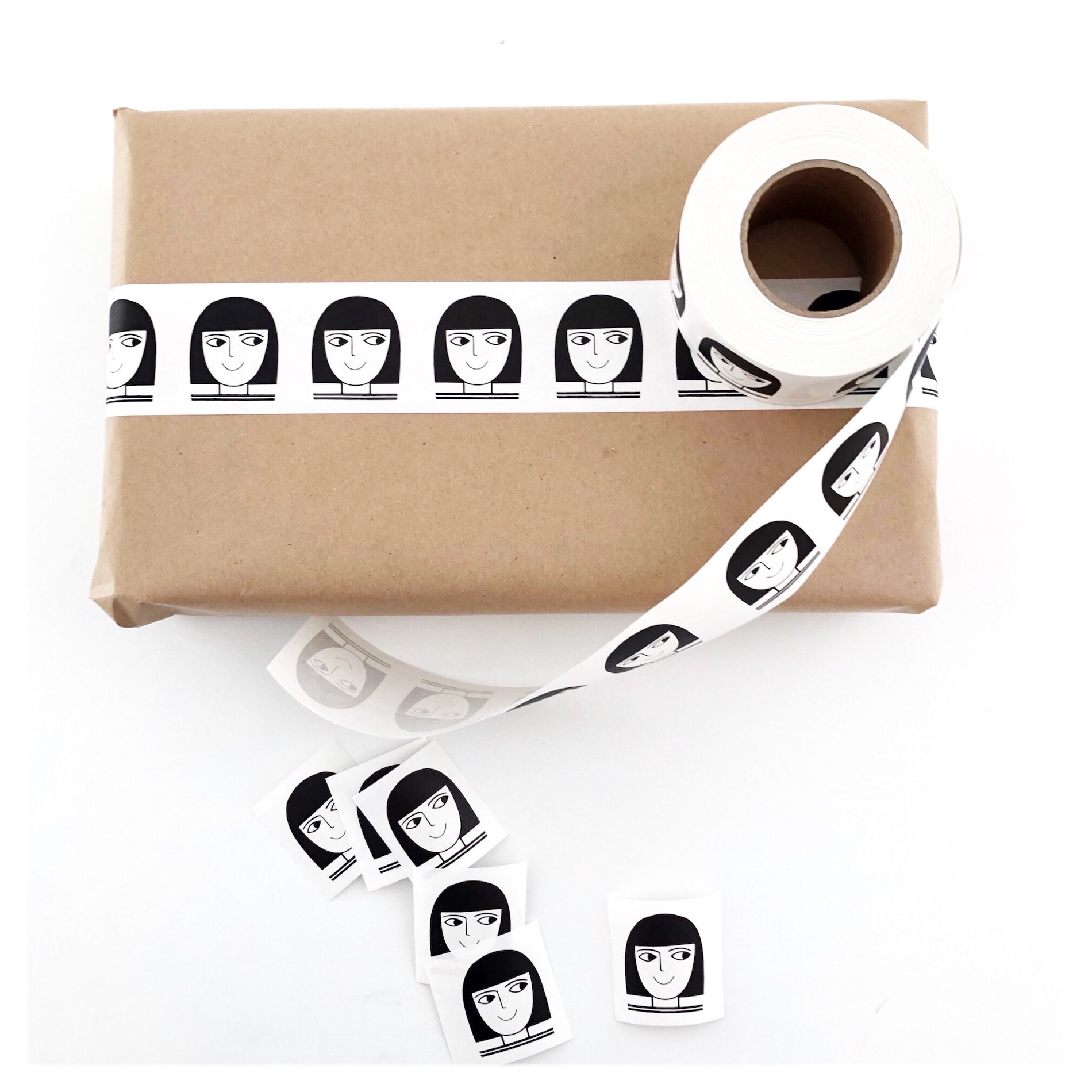
2. Seasonal Packaging On a Budget
You don’t need a complete packaging revamp to commemorate certain holidays and events. If commissioning new boxes or wrapping paper is not cost effective, investing in other packaging accessories will still allow you to channel the holiday spirit.
Custom stickers with a seasonal motif are a low-cost way to jazz up a minimalist holiday packaging design. Likewise, custom packaging tape can be used to decorate the interior and exterior of your packages for some holiday cheer.
This is a particularly good tactic for holiday seasons that you may want to commemorate on a smaller scale. For example, investing in some heart-patterned packing tape for Valentine’s Day hardly breaks the bank, and will give your products a lovely seasonal touch!
3. Reflect Your Brand Aesthetic
If we look at some of the biggest seasonal packaging ‘fails’ in recent years, there’s a consistent theme that emerges. Brands, in an attempt to do something different, ended up straying too far from the style that their customers associate them with. The result? Lost sales and packaging waste!
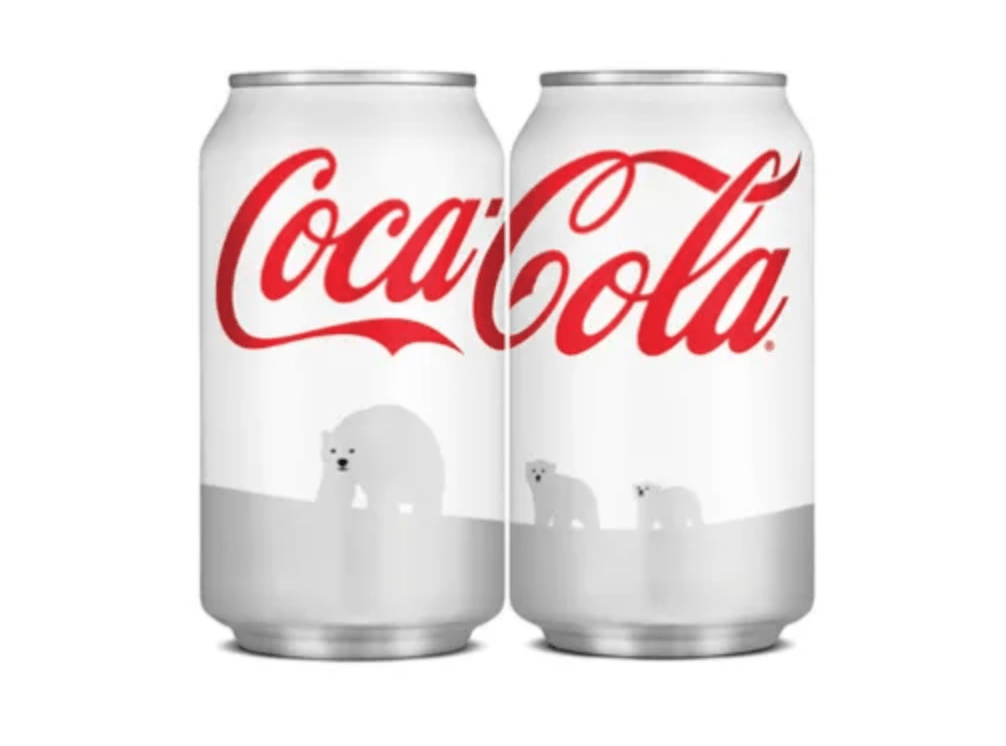
When Coca-Cola rebranded its cans silver for the 2011 Christmas season, customers got this seasonal redesign mixed up with Diet Coke. Due to customer complaints, they pulled the design two months early.
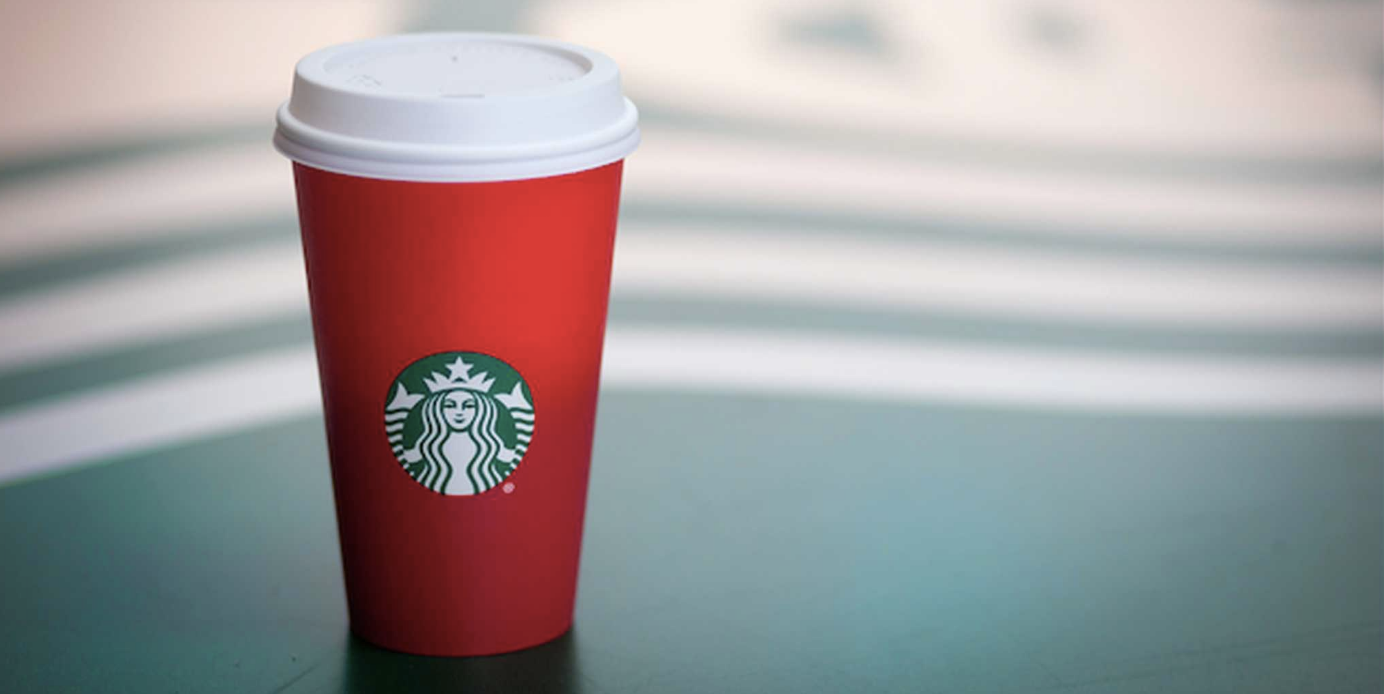
In 2015, Starbucks also faced a backlash when they unveiled their limited edition holiday cup. The plain red was an effort at channelling the ‘minimalist’ packaging trend. However, it was criticized as ‘boring’ and ‘too secular’ by disappointed customers, as it differed from the more traditional Christmas designs they had created in the past.
So, why did this happen? Because both companies failed to take into account that consumers feel a strong sense of ownership over the brands they support. When people have come to expect a particular aesthetic from your brand, too dramatic a change can create confusion and frustration.
Brand recognition is a vital tool during the holidays to give you an edge over the competition. You don’t want to give this up! When you invest in seasonal packaging, it’s important to retain a sense of familiarity through details such as your logo or color palette.
4. Include Local Imagery Where Appropriate

Big brands need to be global in their appeal. As a result, their seasonal designs tend to be quite generic. Small businesses have a massive advantage in this area – you can tailor your design to a more specific audience! Channeling regional imagery says that you are a ‘local’ brand, which makes you more trustworthy to consumers.
The New Zealand biscuit company Cookie Time capitalized on this through the seasonal packaging of their cookie buckets. Their design features the pohutukawa, a native New Zealand tree which flowers during December, and so is known as an alternative Christmas tree.
Because Christmas takes place in the summer in New Zealand, winter imagery would not resonate with customers’ perception of the holidays. By channeling a ‘local’ experience of the holiday season, you can make your product feel much more relevant to consumers.
5. Think About Sustainability
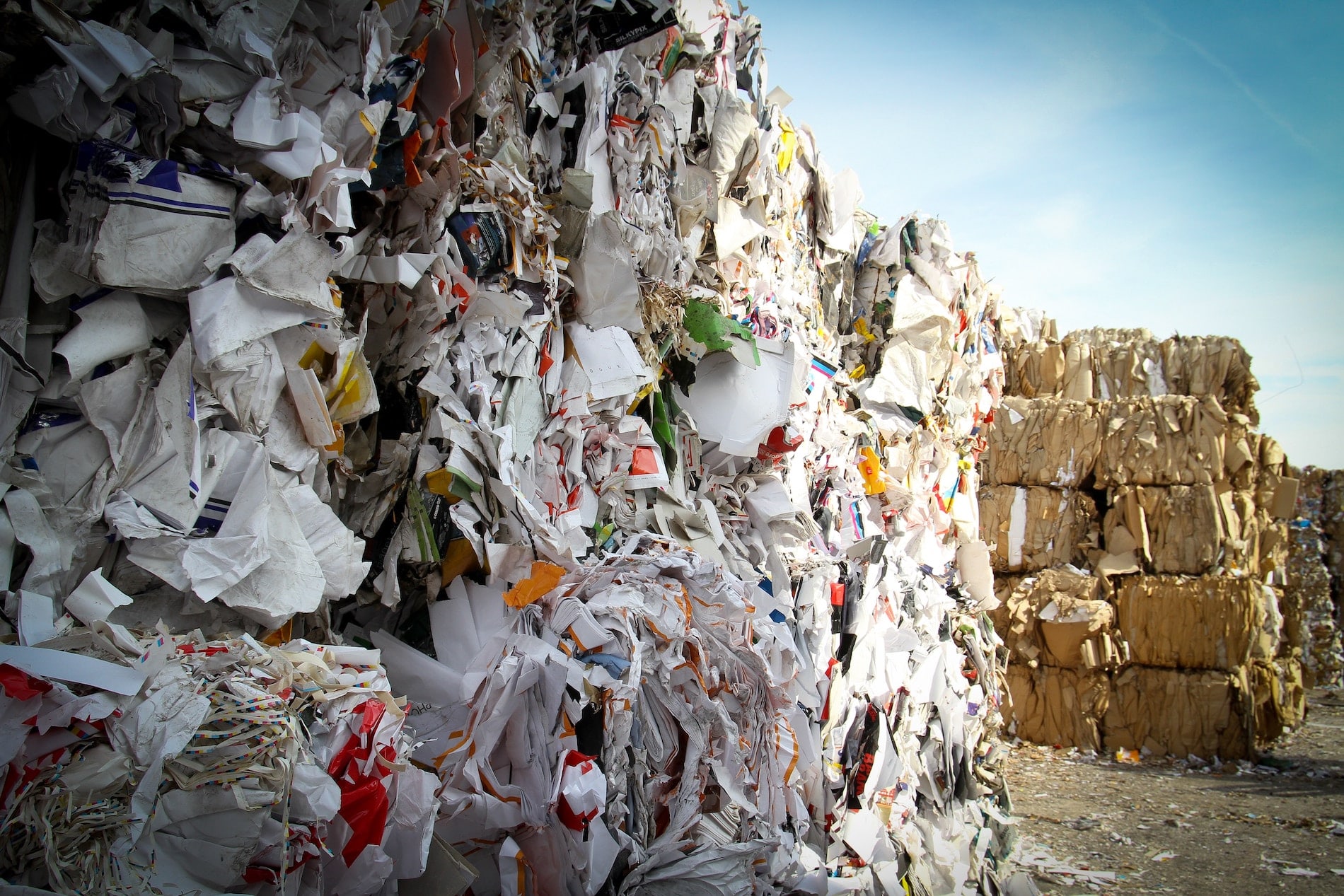
In a nutshell, holiday packaging is responsible for a lot of waste. In fact, the United States produces a shocking 5 million tons of extra waste over the holiday period. So, it’s important to make your seasonal packaging as low-impact as possible.
Not only is this a sign of a responsible business – your customers will really thank you for it. In an era of increasingly conscious consumers, packaging has become one of the biggest indicators of whether a brand is environmentally friendly. According to Dotcom Distribution’s 2019 study, 62% of consumers are more likely to buy from brands using sustainable packaging materials. This rises to 74% amongst 18-29 year-olds, one of the biggest consumer markets.
For more about environmentally-friendly packaging solutions, check out our guide!
Which Holiday Season Is Right For My Business?
With so many holidays in the calendar, it’s unlikely that your brand will be celebrating all of them. When it comes to seasonal packaging for small businesses, it’s quality and not quantity that counts. Constantly switching up your design for every holiday season runs the risk of losing its impact. So, it’s important to be selective, and to choose holidays that fit well with your brand identity and product offerings.
Valentine’s Day
As the first major holiday after Christmas, it’s quite refreshing for consumers to see a different color palette. Those shades of red and pink will spark instant recognition in your customers! However, it’s very easy to get lost in the crowd. So, it’s important to find innovative ways of making your brand’s personality shine through in your design.
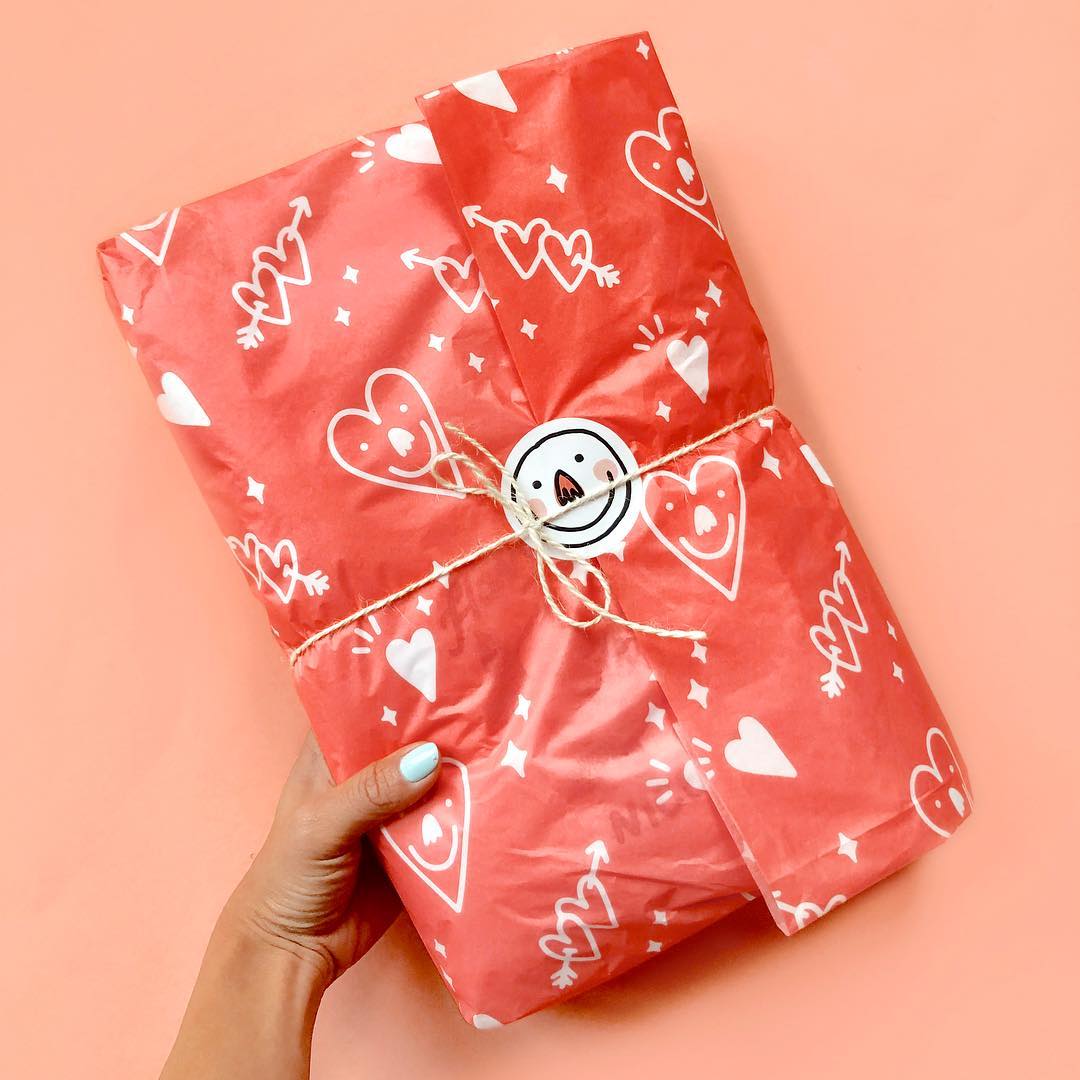
This custom tissue design by our customer Have A Nice Day captures the romantic feel of the holiday with its vibrant pink hue. The hand-drawn illustrations allow the brand to stay true to its quirky and fun aesthetic.
Industries well-suited to this holiday: We all know that florists and confectionary brands make a killing on Valentine’s Day. However, they aren’t the only ones that Valentine’s Day packaging works well for.
Any brand who sells gift merchandise can leverage this tradition of buying for significant others. It’s really worth curating a ‘Gifts for Him/Her’ out of your existing product range to complement your packaging design!
Halloween
Halloween ushers in a takeover of ghosts and spiders on product packaging, especially kids apparel. But we are starting to see some more nuanced approaches to this holiday which cater to a more mature market.
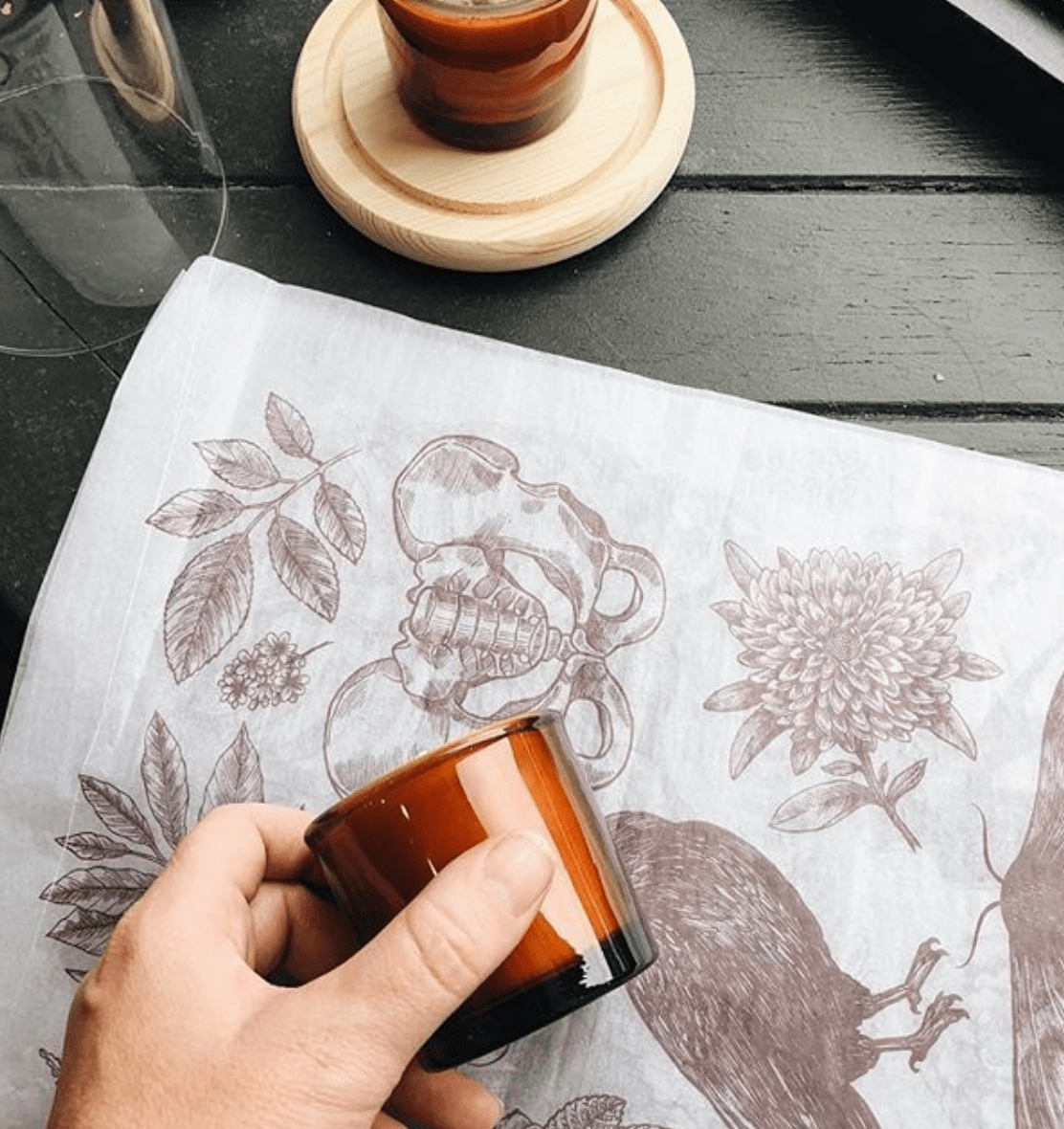
This excellent design by 1820 House combines both Fall/Autumn and Halloween imagery. This creates seasonal packaging with a much longer window of use. The foliage with anatomical elements gives the design a spooky twist, creating a classy, understated approach to the holiday.
Industries well-suited to this holiday: Although Halloween is a more niche holiday season, it’s not only brands selling candy or costumes that can benefit. Leveraging broader seasonal trends, as 1820 House has done, means that you aren’t bound strictly to a ‘spooky’ theme.
Lifestyle industries, such as beauty and home decor, can channel a more sophisticated approach to Halloween by making Fall/Autumn the centerpiece of their packaging.
Christmas
Naturally, we can’t miss this time of year off the list! Christmas is by far the most popular time to invest in seasonal packaging. In terms of design, this is the time to go all-out. People expect to be wowed by festive packaging, and this is critical to a great unboxing experience.
To exceed expectations, consider something a little outside the traditional Christmas imagery. This is what will make your brand memorable to consumers, rather than a classic Santa Claus motif.
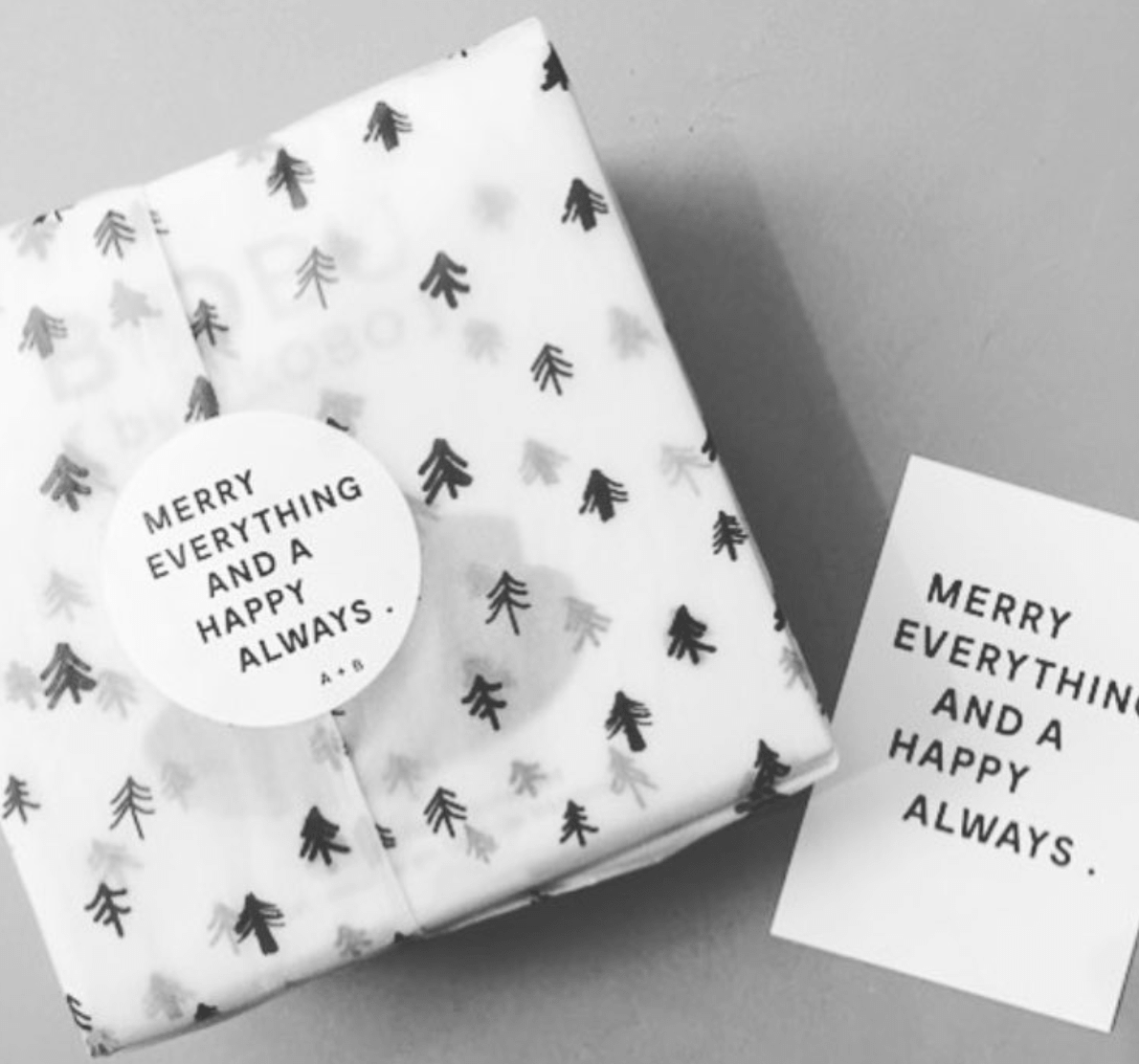
This minimalist tissue design by der kleine salon doesn’t use a Christmas color palette, but still has a festive feel that makes it very eye-catching. Their festive greetings inserts are also a great personal touch!
Industries well-suited to this holiday: All of them!
The (Actual) Seasons
It’s easy to overlook that the traditional seasons, as opposed to holiday seasons, offer a lot of packaging inspiration. This is some of the most cost-effective seasonal packaging for small businesses, as these designs have the longest window of use.

Consider imagery that is clearly associated with a particular season and in tune with your brand identity. This leaf print design by Temple and Co, for example, evokes both Spring and its natural beauty product offerings.
Industries well-suited to this holiday: Those with seasonal product selections can make the most out of this packaging design. Fashion brands, for example, traditionally have collections which change with the seasons.
However, it’s also a great option for more modern eCommerce industries. Product presentation is incredibly important to subscription box services, where there is a strong emphasis on the customer experience. Putting a seasonal twist on your presentation is a great way to keep your offering fresh and exciting!
The Wrap Up:
To sum up, seasonal packaging is a brilliant marketing strategy. It helps your business to increase sales and stay relevant during periods of high competition.
The secret to successful seasonal packaging for small businesses is taking advantage of low MOQs, and choosing holiday events which resonate with your brand’s offerings. This makes it easier to create unique holiday design that will help you stand out from the crowd.
Most importantly, seasonal packaging helps you to better engage with the consumer and build brand loyalty that outlasts the holiday season. In short, it sets you up for a successful New Year – and beyond!
For more on seasonal packaging, check out our top holiday packaging design trends for the 2019 season!
]]>
Wed, 23 Jan 2019 00:37:31 +0000 https://www.noissue.co/blog/kaloskopic-challenging-fast-fashion-through-sustainable-design/
Fashion has long been one of the most environmentally harmful industries in the world. The reason? A ‘fast fashion’ model encourages garments to be viewed as disposable.
To maximize profits, fast fashion retailers push out collections of ever-changing ‘trendy’ clothing to hook in the fashion-conscious consumer. Across every apparel category, consumers in the United States keep their clothing for only half as long as they did 15 years ago.
But greater consumer awareness about the impact of fast fashion is starting to influence our habits. BBMG’s Conscious Consumer report shows that the metrics which traditionally made a brand desirable i.e. price and convenience, are being superseded.
Our purchasing decisions are now being influenced by more socially conscious concerns. Where a product is made, fair working conditions and sustainable production have become important considerations.
As a result, we are seeing many upcoming brands that are putting these values at the heart of their operations. Handmade leather bag company Kaloskopic avoids mass-produced collections to lower its environmental impact. Its founder, Ana Maria Perez Saldias, tells us about her efforts to challenge the ‘latest trends’ focus of fast fashion brands.
(In Ana’s own words):
“My name is Ana Maria Perez Saldias, and I’m a Colombian Graphic Designer with a Masters in Magazine Publishing. I’m the founder of Kaloskopic, a brand of highly visual and inspiring leather bags and accessories, from Latin America.” “
“Kaloskopic was born five years ago, during a time when I most needed some light, colour and happiness in my life. After living in London for six years, I came back to Colombia because my father was ill. I stayed to look after him and he passed away five months later.” I had the desire to stay in Colombia and the need to keep developing my career, but I wasn’t in the right place to continue doing what I was working on in London. There weren’t any publishing houses or agencies in my hometown, Manizales. I have always loved pattern design and fashion. I actually once wanted to focus on creating leather goods in my BA, but I wasn’t allowed to do it as I wasn’t a fashion or industrial designer.”
“Starting the business joined many of my passions. Apart from designing and creating leather goods, I also put together the photoshoots and design the catalogs to sell them abroad.”
“Now, here I am in my hometown; designing leather bags full of patterns, contrasts and colours, resulting in unique and functional pieces made by hand that are sold nationally and internationally.”
“My vision is to make sure that each Kaloskopic product becomes one of those hunted pieces – not only being a well-made design, but also a functional piece in someone’s outfit, wardrobe or as travel essentials. I want to leave a smile on the face of our clients, assuring them that they own a distinct product, that they made a conscious buy, and have contributed to an artisanal craft that will last over time.”

True sustainability means freeing consumers from a model that puts fashion trends before longevity. Initiatives such as Rent the Runway have helped put a spotlight on alternatives to fast fashion. But ‘greening’ the industry as a whole means putting a bigger focus on sustainable supply chains and production.
For Ana, producing her bags in low numbers locally helps to reduce her impact on the environment, as well as give her brand a point of difference:
“We are very keen to keep implementing more and more sustainable practices in our business. For now, we design for those who admire handmade crafts, value detail and understand the relevance of sustainable fashion. We aren’t interested in creating for the masses; we promise authenticity by producing in low volumes. Through our timeless, functional designs and high-quality materials, we enhance the durability of our products, resulting in more conscious shopping and less waste in landfills. From all the practices that can make a business sustainable, the one that moves our hearts most, though, is that we produce our bags locally, employing very talented artisans.” 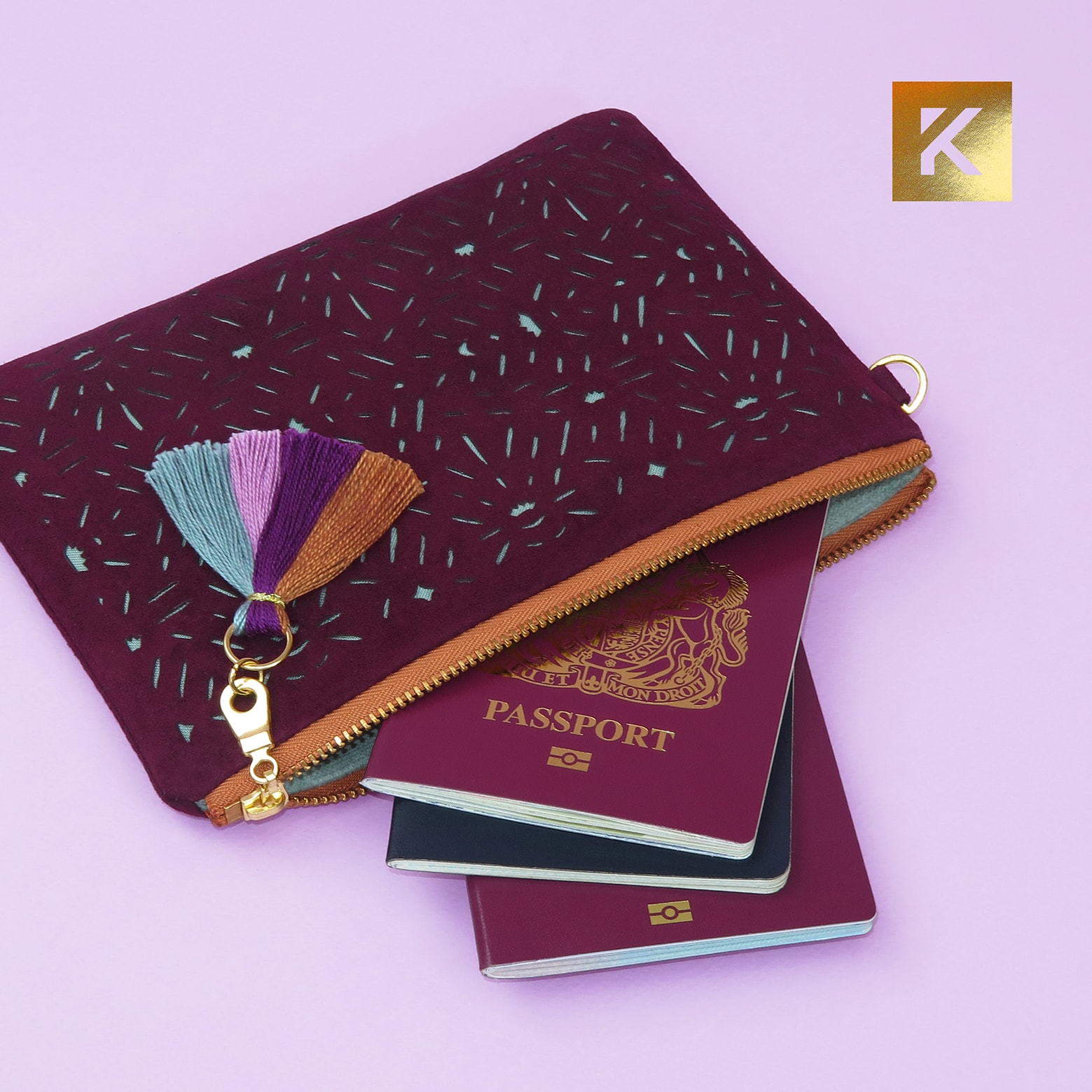
Sustainability can be challenging for small businesses, as suppliers often don’t cater to small order sizes. This doesn’t just reduce waste – it also ensures that businesses are protected from big upfront costs:
“Sustainability is extremely important for Kaloskopic, but it’s not as achievable as we would like it to be. Unfortunately, ordering small quantities sometimes makes it particularly difficult as a small business. That’s why we didn’t hesitate to order noissue custom tissue paper! Firstly, it’s printed ecologically with soy-based inks and is acid-free. Secondly, the low minimums made it a realistic investment for a start-up. We loved that they also planted a tree on our behalf in Brazil, which was the closest option to our home in Colombia.”
noissue’s MOQs start from just 250 units for our custom tissue paper, meaning we are able to cater to every size of business! For more about our MOQS, check out our guide.

As well as informing her sustainable branding, noissue tissue was a fantastic tool to help Ana improve her customer’s experience with her brand. The power of custom packaging allows her to capitalize on being an artisan brand, whilst giving her handmade bags a designer edge:
“We are very pattern and colour-focused, so our leather bags are a combination of pattern design and leather craftsmanship. The designs on the bags are in line with fashion and deco trends, so we wanted to keep our tissue paper neutral. This allows the products wrapped inside to stand out, but still fit within the Kaloskopic branding palette.”
“Kaloskopic’s custom tissue has a subtle pattern and repetition of our logo. It’s the first sight of our branding asset for customers when they unwrap their orders. Most of our bags are flat, so there was a lot of origami trial and error to create our ‘clutch wrap’ look. The custom tissue is folded in triangles to create the ‘clutch’ and it’s closed by a gold or silver sticker, resembling a metal clutch clasp.”
“The tissue paper is great because it can be kept smooth, but is versatile enough to wrap the chains or wrist handles that make the bags usable as cross body bags, or the wallets to be used as little clutches. We use washi tape to finish the irregularly shaped wrappings.”

“noissue is definitely very appealing to creative minds. and I felt attracted to the brand’s service immediately. The website is easy to use and makes it easy to quote, and the minimum quantities are realistic for small businesses.”
“However, the most important and positive reason in choosing noissue were the ecologically sound printing practices and, taking into account the location of where our business is based, the possibility for orders to be delivered to Colombia.”
“The aim of our business is to create unique, high quality and detail-orientated products that stand out from the flooded fast fashion market. Having noissue custom packaging helps us to deliver that and convey to our customers the care and love put into what we produce. It’s also been a key part of helping to construct a complete brand image for Kaloskopic, reflecting professionalism and our vision to take the brand worldwide.”
]]>
Tue, 17 Sep 2019 23:29:04 +0000 https://www.noissue.co/blog/what-is-gsm-paper-weight/
At noissue, we know a fair bit about paper – after all, we literally built a business around it! We’ve spent a lot of figuring out how we can create the most affordable and highest quality paper products for businesses.
For customers who are new to custom paper goods, we get a lot of questions about GSM and paper weight. Are they the same thing? What does GSM stand for? How does it relate to product quality?
In this guide, we’ll give you a quick intro to GSM and how it relates to our custom tissue paper. We’ve also added in a few handy design tips to help you decide which GSM paper weight is right for you!

What Does GSM Mean?
The term ‘GSM’, which stands for ‘grams per square meter’, is a unit of measurement for paper products. Rather than referring to sheet size, GSM measures only the weight of a sheet of paper. Put simply, the higher the GSM, the thicker the paper will be.
The GSM paper weight chart measures from light tissue paper (such as noissue’s 17GSM custom tissue) up to heavier weight designs such as card.
Why Does GSM and Paper Weight Matter?
GSM is the most commonly-used unit across regions for measuring paper thicknesses. So, it’s important that businesses understand what this means when ordering printed products.
It doesn’t matter whether you are organizing flyers, business cards, or custom packaging materials. It’s very likely that GSM will be how printers categorize the type of paper used in the manufacturing process.
So, if you don’t understand the difference between GSM scores, you could end up ordering the wrong paper thickness for your needs. This is a pretty costly mistake, especially when you are a small business!
For example, let’s say you were getting invitations printed for a corporate event. 110 GSM paper is about the same as regular printer paper, while 340 GSM paper and above is a thick card. Naturally, the latter will give off a much more premium vibe. Regular paper is pretty flimsy, and runs the risk of making invitations look cheap.
So, choosing the right weight of paper for your printing needs is vital. It plays a big role in shaping your customers’ perception of your business!
The GSM Guide to Paper Thickness
The GSM paper weight chart below will give you a better idea of how different thicknesses of paper are used:
35 – 55 GSM paper – The thinnest form of regular paper, mostly used for newspapers.
90 – 120 GSM paper – The average weight of regular office paper or copy paper.
130 – 250 GSM paper – The weight most commonly used for promotional posters.
260 – 300 GSM paper – Thicker but still bendable card weight which works well for high-end brochures or magazines.
350 – 450 GSM paper – The heaviest and most rigid card which will easily stand under its own weight, and so much gets used most commonly for stationery and invitations.
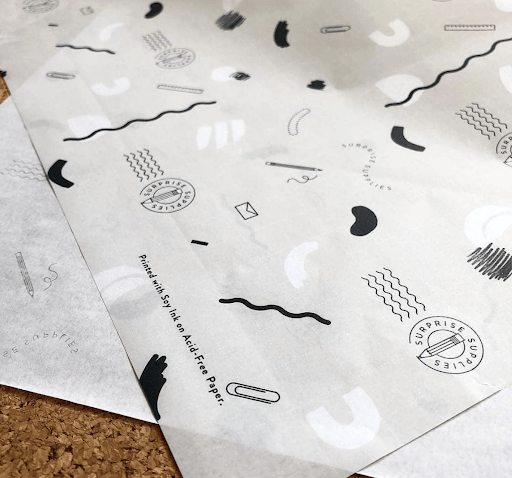
How we use GSM in noissue custom tissue paper
Some commentators take higher GSM paper weights to mean high-quality paper. However, this isn’t the right use of GSM. Just because a ream of paper carries a low GSM score (meaning it’s thinner) this doesn’t mean that it’s lower quality – it just gives a different indication of what it should be used for.
For example, if you were wanting custom paper for gift wrapping, you would need a very low GSM paper weight to get the required thinness. Would you be able to use a 350 GSM piece of card for gift wrapping? Definitely not!
noissue offers two GSM weights for our custom printed tissue paper: 17GSM and 28 GSM. All of our tissue paper is acid-free (meaning it doesn’t deteriorate over time) and is sourced sustainably through FSC-certified forests. This way, we can ensure a high-quality and eco-friendly custom packaging solution for our customers.
What is the difference between 17GSM and 28 GSM tissue paper?
There is a subtle difference in the finish between our custom tissue options. The 17 GSM is the lightest weight and so has a lovely translucent finish. Our 28 GSM tissue is slightly thicker, with a more traditional wrapping paper look and feel.
Which is better for my purposes? 17 GSM or 28 GSM custom tissue?
The MOQ (Minimum Order Quantity) for our custom tissue paper is exactly the same for both GSM types, starting out at 250 sheets. So, the answer to this question really depends on the look and feel you are wanting to channel for your brand.
Because our 17GSM tissue paper is quite sheer, it can be used to give customers a cheeky peek of their purchase. If you bear this in mind when you choose your packaging design, you can create some really cool effects!
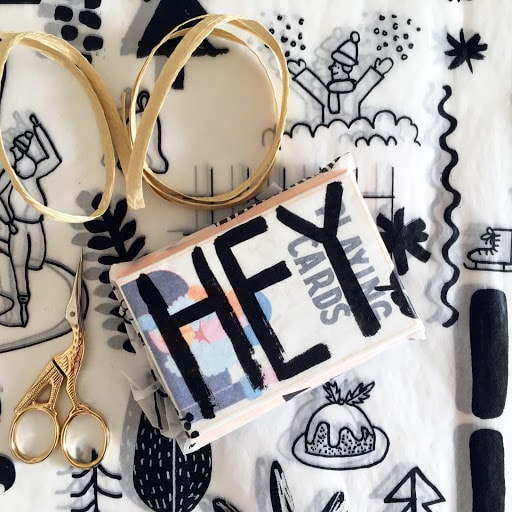
As Barbara Dziadosz shows, the 17 GSM tissue allows you to play around with pattern placement on top of your products. The friendly ‘Hey!’ is the perfect fit with her playful brand aesthetic!

Using a single color on 17 GSM also gives your custom tissue a very minimalist and striking look. This squiggle pattern by Vermut Design uses their signature blue to keep their branding really cohesive.
If you have a more intensely colored or ornate design in mind for your custom tissue paper, the 28 GSM paper weight will show this off to the fullest vibrancy. For this reason, we usually advise that customers wanting a two-color or multi-color design to choose the 28 GSM option. We use only renewable soy-based inks for printing (which produce more intense colors) as well as the Pantone Matching System within our design tool.
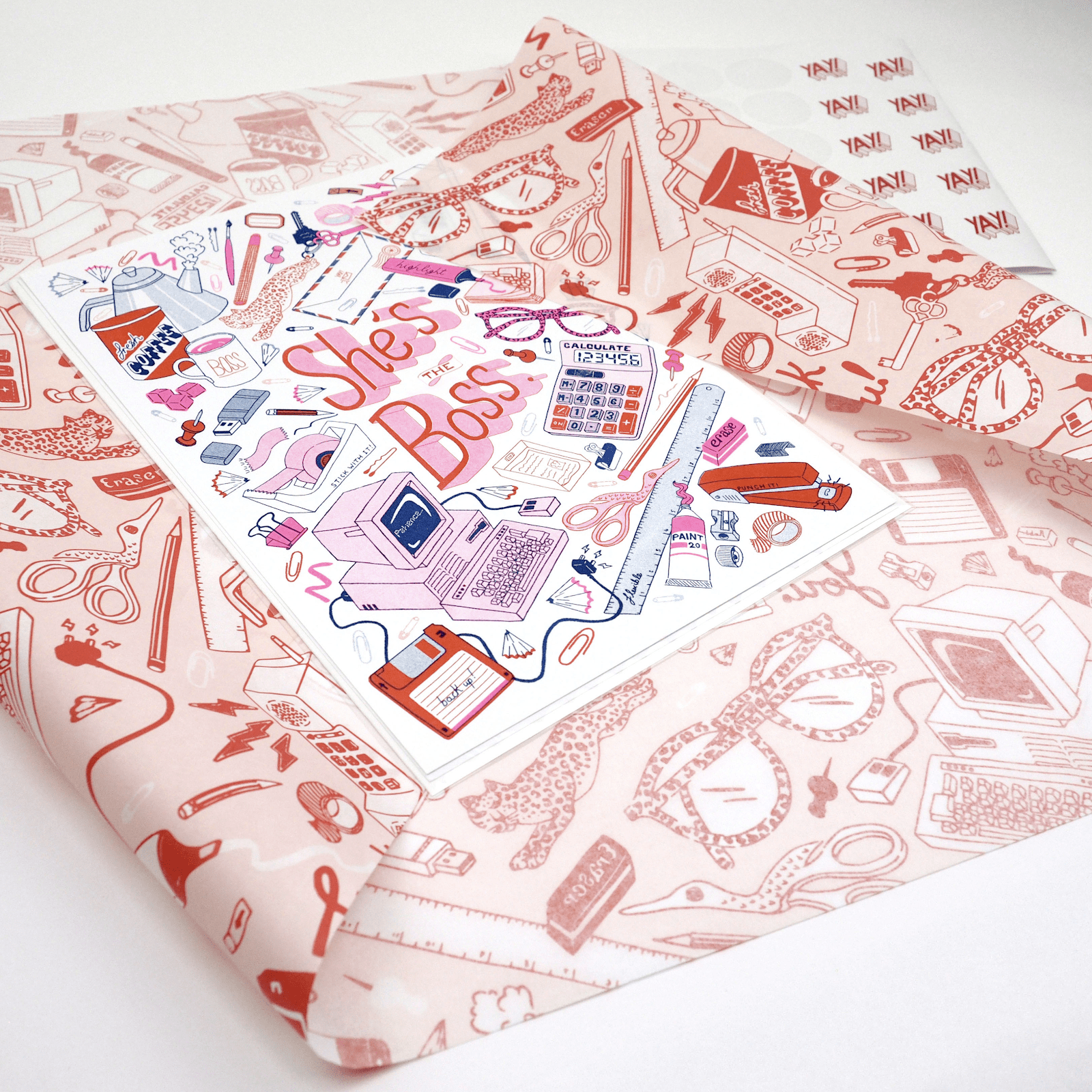
Jacqueline Colley used her tissue as a rich canvas for her artwork. The heavier tissue really helps to pick out the fine detailing in her illustrations!
In sum, choosing the right GSM for your custom tissue means considering the specifics of your design and the kind of impression you want to give to your customers.
Now that you understand what GSM paper weight is and how it works, you are well on your way to choosing the right custom tissue for your business. You can also apply this knowledge to your other printing needs too! If you would like some more guidance or have any other questions not addressed here, please reach out to us here!
]]>
Tue, 17 Sep 2019 19:14:58 +0000 https://www.noissue.co/blog/franks-lee-lowering-our-impact-with-compostable-mailers/
No matter what industry you are based in, there is one challenge that all eCommerce businesses have in common; finding affordable packaging that fits their needs.
When you are managing the online orders that fly in 24 hours a day, an efficient order fulfillment strategy is the key to your operation running smoothly. Packaging design plays a big role here!
You want to ensure a positive experience for your customer, but not at the cost of a huge time investment. It’s a tricky balance, but one that is really worth getting right – your time is precious, but so is a loyal customer!
For Jazz, the founder of the sustainable living brand Franks Lee, her eco-friendly commitments added another dimension to her packaging needs. She tells us about her efforts to offer sustainable solutions to her customer base, and how noissue’s compostable mailers and custom tissue helped to put her brand’s mission on full display.
(In Jazz’s own words:)
“The Franks Lee brand has been established with the hope to create an impact on others and educate followers on the dangers of single-use plastic. We believe education is the first step to a sustainable lifestyle, as there are so many terrifying facts relating to our impact on the earth.”
“The aim is to grow as a business and have the opportunity to expand our range of reusable products to support others in taking steps to reduce their impact on our environment. With each product sold, Franks Lee will be donating to either Plant a Tree or 3 For The Sea and eventually expanding donation options as the brand grows.”
“This journey is important to me because when I was travelling through Central America, I saw first hand the amount of waste in the streets and waterways. I felt like it was all so unnecessary! On my journey back home to Australia, I looked into how we as humans are affected by plastic, and how single-use habits are destroying our earth. I was shocked as to why I hadn’t learned of this sooner. After that realisation, I wanted to learn all about it and share all I had and continue to learn! I thought what better way to combine education and products that support this.”
Going Sustainable with Compostable Mailers
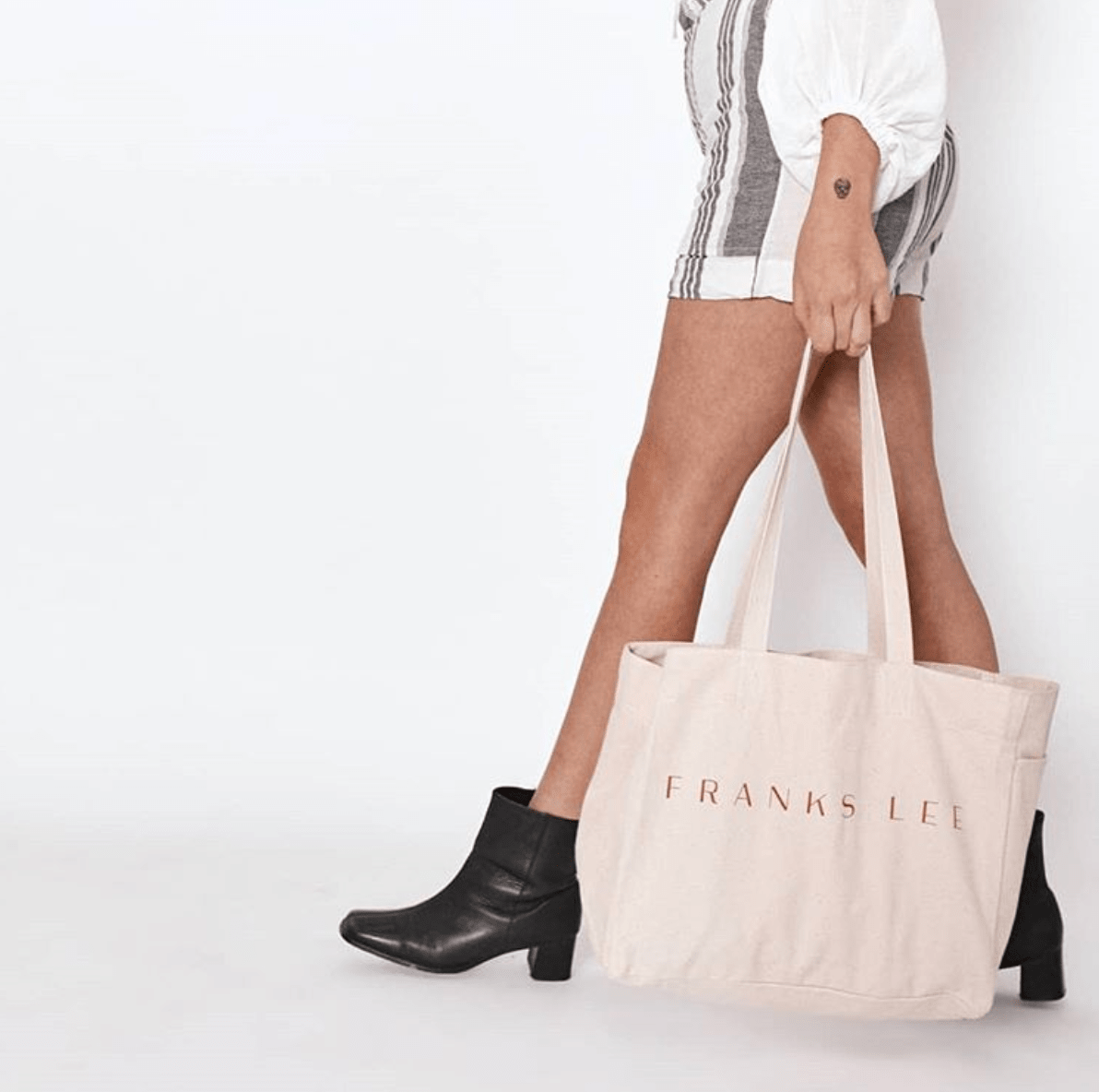
As a sustainable brand, Franks Lee has worked hard to extend this message across its operation. However, this does present challenges when it comes to working with suppliers whose practices don’t always align:
“It’s been difficult to find manufacturers that don’t ship products in plastic! Being a brand that promotes no single-use plastic, I of course want to reduce the business’s waste as much as possible. Solving this means that I have just asked repeatedly for the companies to use as little plastic as possible!”
While it’s difficult to control the shipping and packaging strategies of manufacturers, this is an area where brands themselves can take a stance. In 2019, sustainable packaging solutions are no longer a fringe commodity; they are fast becoming expected by consumers.
noissue’s compostable eco mailer bags offer businesses a great sustainable alternative to the regular poly mailer. Instead of ending up in the landfill, our shipping mailers break down on a home compost within six months, going back to the earth and leaving no harmful residues behind!
“The Franks Lee Brand showcases every day on social media facts, tips, and lifestyle choices to create a more sustainable footprint. For me, sustainability means to create a lifestyle that reflects a love for the earth, to learn and to teach others about how we can live at a lower cost to our earth. Steps as a business, as mentioned above, are to use as little plastic packaging as possible when getting products delivered to me and only ordering smaller quantities of stock. And of course – using noissue’s compostable mailers and custom tissue paper!”
But going sustainable in your packaging design doesn’t have to mean losing valuable marketing opportunities. Our custom tissue paper, stickers, and tape offer businesses of every size the ability to put their eco-friendly commitments at the heart of their brand.
“I think the entire experience of a brand is SO important and I wanted to create a beautiful encounter for our customers. An experience that helps the customers to feel comfortable with our product packaging, so they know that ALL environmental aspects of the brand are deeply considered. I love that we have the opportunity to do this and that was why I am so in love with the noissue brand!”
For more environmentally-friendly packaging ideas, check out our blog!
]]>
Tue, 10 Sep 2019 00:36:08 +0000 https://www.noissue.co/blog/custom-tape-reduce-the-cost-of-custom-packaging/
Small businesses need affordable branded packaging. It makes your brand look better, and makes your customers happier. This is why we have always strived to make it easier for small businesses with our low MOQs and easy design process.
We stand by our commitment to produce only sustainable packaging solutions. And, as is often the case, good things do take time. That’s why we are very excited to announce the latest addition to our custom packaging toolkit: Water-activated packing tape!
Here are a few reasons why noissue custom tape should be your next order fulfillment staple:

[embedded content]
1. It’s an affordable way to brand plain packaging
Branding and packaging are two parts of an interesting marriage. If you are going to build a successful eCommerce brand, it’s hard to have one without the other.
When you are on a limited budget, even a small amount of external branding on your packaging goes a long way. In eCommerce, a plain cardboard box is a missed opportunity to put your brand in front of customers. After all, it’s hard to make your brand memorable if your packages look exactly the same as everyone else’s!
But custom boxes are expensive, and often come with high MOQs. This puts them out of the reach of many small businesses. noissue’s custom printed tape has a low MOQ of just five rolls. Using branded packing tape is an easy way to reduce the cost of branded and custom printed packaging for your business!
There is a lag between your customers making an online purchase and receiving it. This makes the moment of delivery the opportune time for some post-purchase marketing. Custom packaging creates an instant point of difference, and reminds your customer why they decided to buy from you in the first place. Even more importantly, it leaves them with a lasting impression that builds brand loyalty.
It’s not necessary to go all-out on external branded packaging. Just a few swipes of cheap custom packaging tape will allow you to leverage the benefits of this strategy!
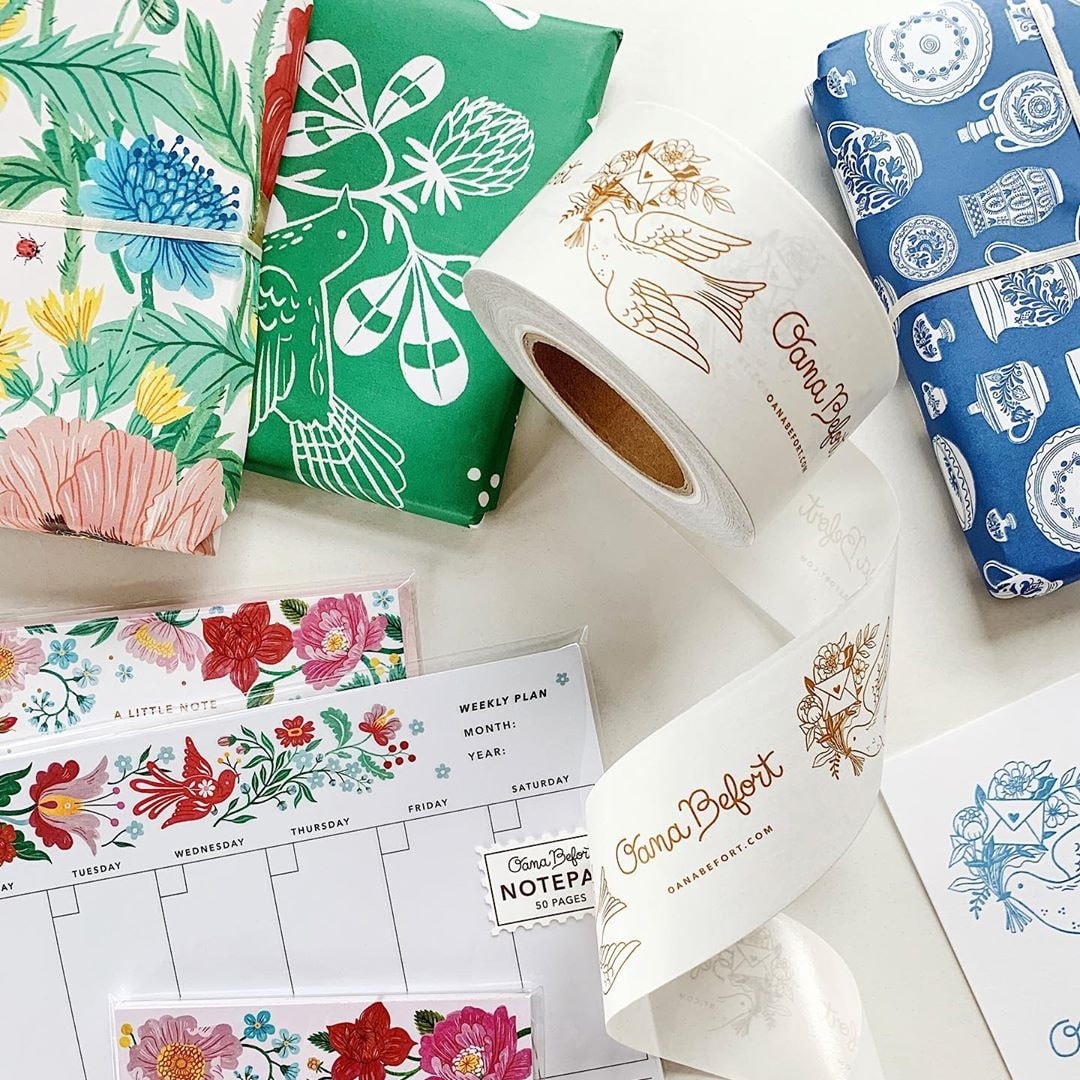
2. Our custom packing tape is 100% eco-friendly
Just like the rest of our range, our water-activated custom packing tape is FSC-certified and acid-free. It’s also made from 100% recycled material! We also use the same renewable soy-based inks as our custom tissue paper. So, you can be reassured that your design will be gorgeous and friendly to the planet!
noissue tape vs. Plastic tape: What is the difference?
Many of the custom tape products currently on the market are plasticized to make them more durable. Plastic is a petroleum-based substance, meaning it’s non-renewable, non-recyclable and unable to biodegrade within a reasonable timeframe. (I don’t think any of us would call 1000 years reasonable!)
Plastic tape also affects the recyclability of your containers. The adhesive which makes the tape sticky contains chemicals that weaken paper and cardboard fibers. Even when customers make the effort to remove it from the box, the residue left behind still affects its ability to be recycled.
noissue’s paper custom packaging tape, on the other hand, is renewable, compostable, AND can be easily recycled. The best part? It doesn’t even need to be removed from the box! Your customer can simply break it down and put it in the recycling, with no risk of contamination.
For users of our compostable mailers, take note. If you ever feel like giving some branding to our stock mailers, our tape and compostable paper stickers offer a great solution. (For more on the disposal process, see our dedicated noissue composting guide!)
Complex packaging disposal can make life difficult for consumers trying to be eco-conscious. At noissue, we want to help businesses help their own customers. We strive to keep our sustainable packaging solutions as simple as possible.
So, whether it’s straight into the recycling bin or the compost heap – that’s all there is to it!
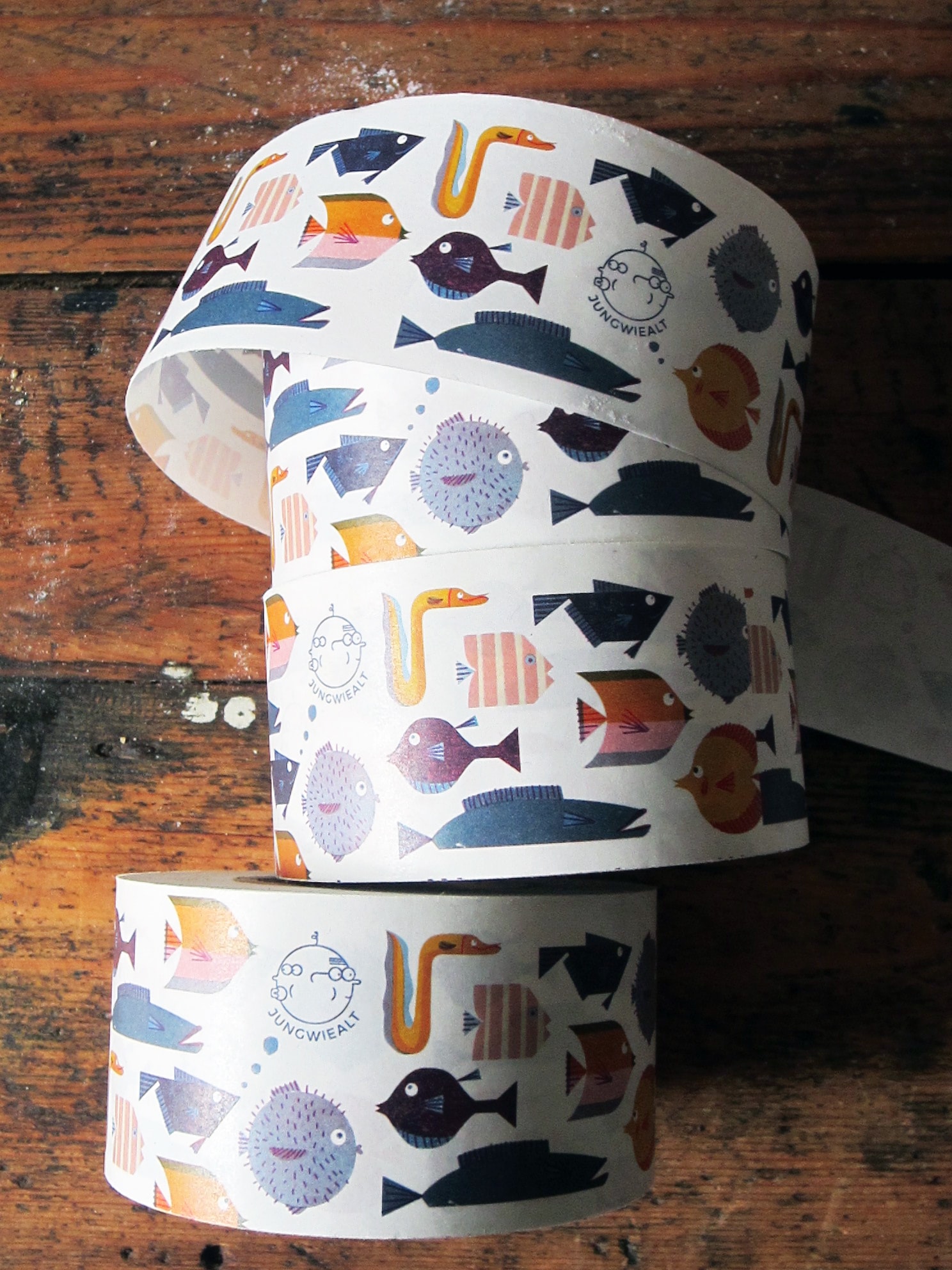
How does water-activated tape work?
Water-activated or gummed tape means that it needs to be dampened down to activate the adhesive. This method is key to creating a sustainable tape alternative. It allows us to avoid using glossy and non-waxed paper – neither of which break down in composting conditions.
When applied, gummed tape has the same tamper-proof seal as regular tape. The adhesive used for noissue’s water-activated custom tape is completely non-toxic, to ensure safe composting and disposal.
There are a few different ways to activate the adhesive:
1. Simply wipe down the back of the tape with a damp cloth or sponge, then apply.
2. A manual gummed tape dispenser, which wets the tape as you dispense it.
3. An electric gummed tape dispenser. (If you work with a fulfillment company, there’s a good chance they will already have one of these!)
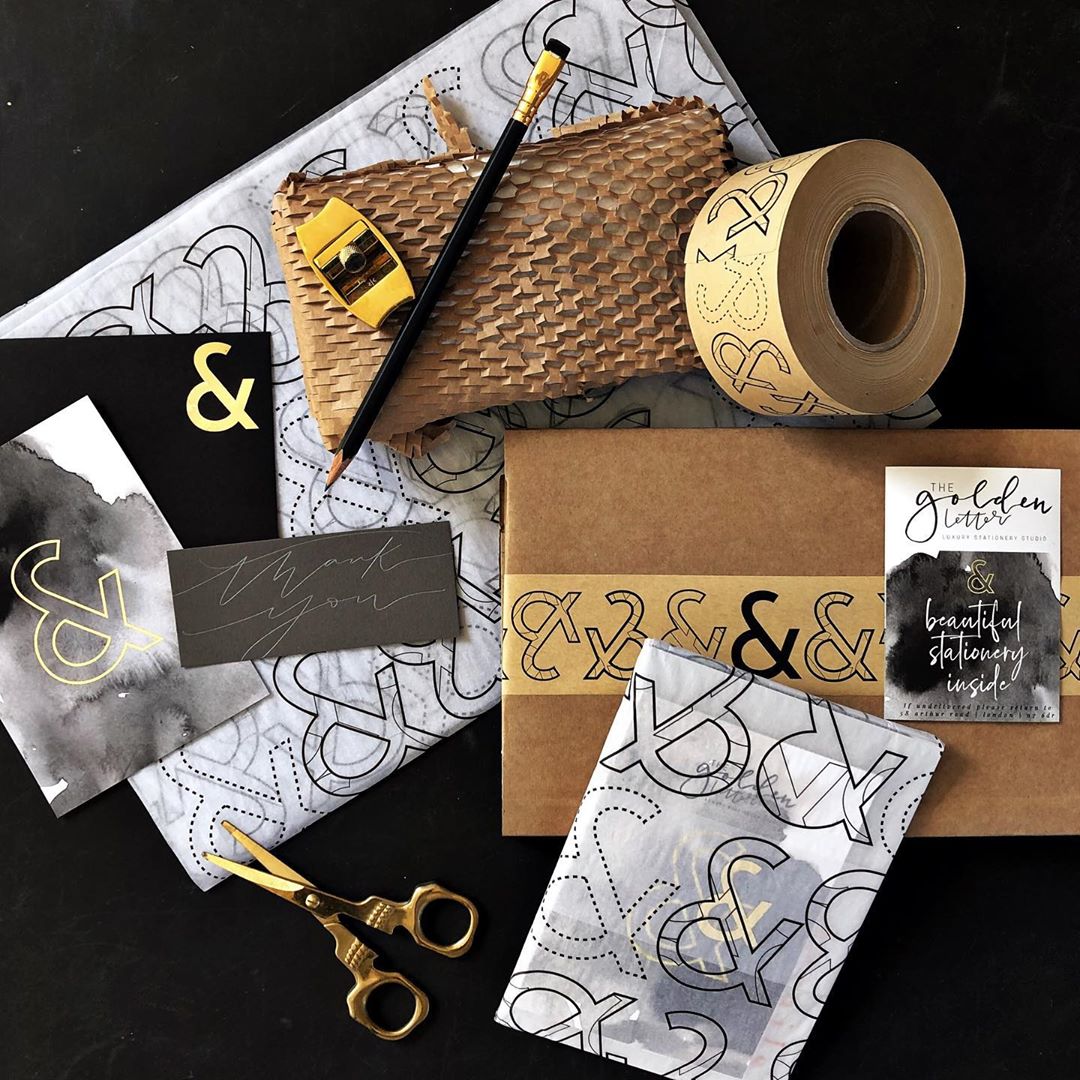
3. You’re probably already using tape
We’re all pretty familiar with the applications of tape. If you are a small business owner doing your own order fulfillment, you’re likely already using it. After all, you don’t want your packages bursting open in transit!
Fixing on a few swipes of tape is always the last step in the packing process. With this in mind, why not get maximum value from this necessary expense?
Every packaging element presents another valuable opportunity to use your logo. By sticking to plain tape, you’re only fulfilling one need i.e. protecting your package. Because it combines branding with functionality, custom shipping tape is a fantastic all-in-one packaging solution for businesses.
With the addition of custom tape to our range, we are proud to say that noissue offers an affordable custom packaging toolkit for every stage of business!
]]>
Thu, 12 Sep 2019 17:28:25 +0000 https://www.noissue.co/blog/unboxing-with-peach-polly/
eCommerce has led to a huge shift in how we shop and browse for goods. The gifting economy in particular has had a massive boost from online shopping – it’s now worth a whopping $130 billion!
Subscription and gift box services have benefitted hugely from this growth. They offer a personalized gifting option to those who want something unique for their loved ones, with all the convenience offered by eCommerce.
But this proliferation of brands has created intense competition. To stand out from the pack, businesses need to show that they can deliver a stellar experience to the gift recipient.
This is where a curated unboxing experience can show consumers that you value your interactions with them. It turns a gift exchange into a real occasion that promotes customer loyalty towards your brand.
In the latest of our ‘Unboxing With’ series, we are featuring the gifting service Peach + Polly, who specializes in gifts for women that commemorate significant life events. Natalie, the founder of Peach + Polly, tells how she used noissue custom tissue paper to create a memorable unboxing experience that celebrates her brand identity.
(In Natalie’s own words):
“Hey! I’m Natalie, I live in Melbourne with my husband, beautiful daughter and the cutest little Cavalier King Charles Spaniel. I’m a primary school teacher who is always trying to find a creative outlet!”
“I started developing Peach + Polly in 2017. Initially, my vision was to create gifts that were a little bit of unexpected kindness for the women who needed it. I really love finding the perfect present for someone, and I get a kick out of those times when you really nail it!”
“My vision is for Peach + Polly to be a convenient go-to site for unique gifts, containing local, ethically conscious brands that brightens someone’s day. My initial vision was based more around contributing to organisations I feel passionate about, I hope soon to be able to do this authentically. Also, having just been through the ‘new mum’ stage, I really wanted to offer gifts that were different from the same old baby gifts you receive, with a focus on something for the wonder woman who has just had her life (and body) turned upside down!”
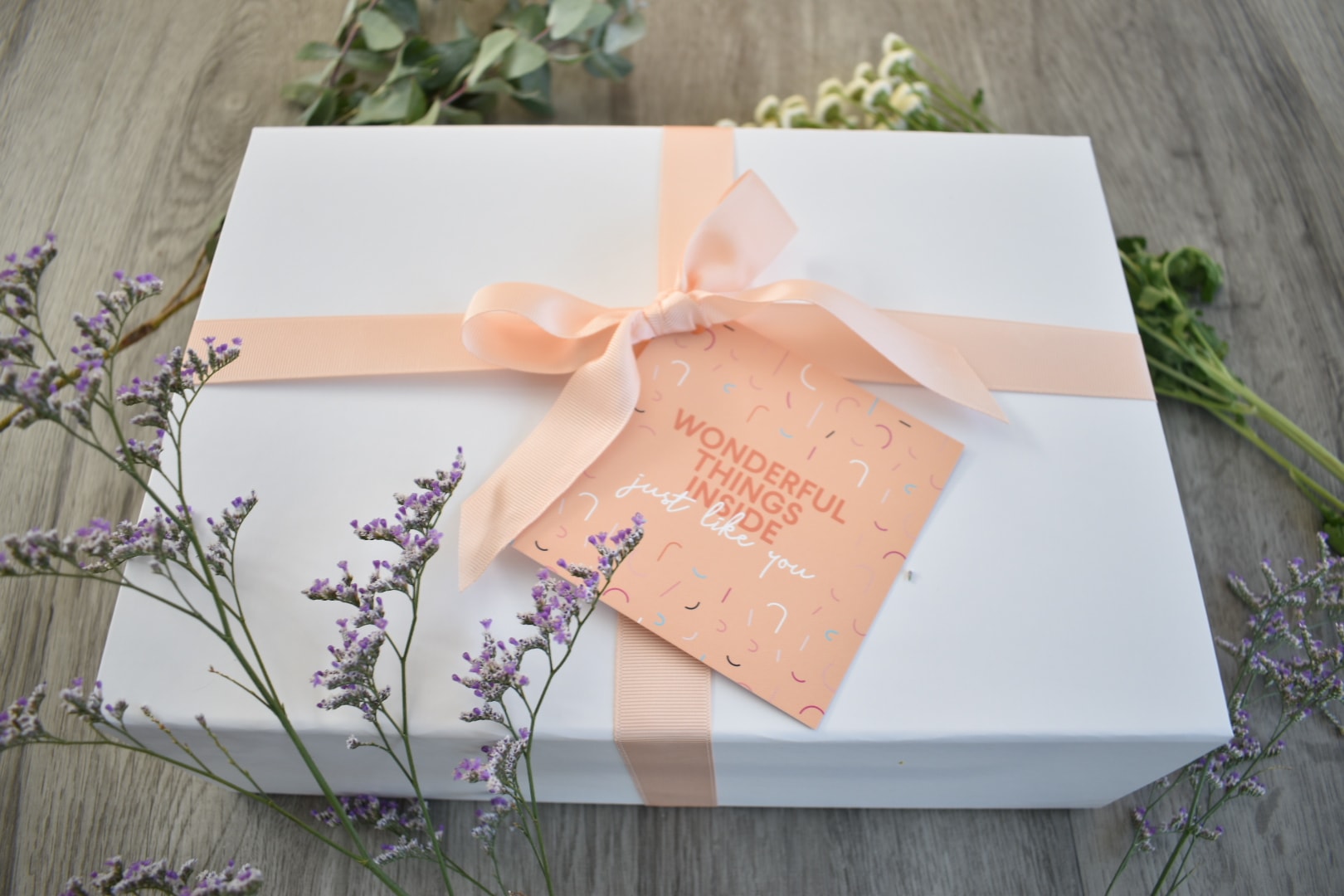
Q: How do you choose the products that go into your parcels? Are there specific criteria?
A: “This part is the most fun, yet also the hardest! There are so many amazing small businesses around, I really aim to go with brands that share similar values to us. Initially I attended the Life In Style retail trade event in Melbourne, which gave me some lovely brands and stories to begin with. I’m especially passionate about supporting small businesses run by amazing women. I also started by thinking about the types of products I choose to consume, especially when pregnant or breastfeeding.”
“Now that we’re coming up to our first anniversary of being live, I’m starting to evaluate some of the products and am starting to see what’s working and what isn’t so much. I want our gifts to be fun, uplifting and practical. We also aim to stock local products, with most of our products made in Melbourne or Sydney, Australia. Right now we are hoping to introduce a few new brands, with sustainability and ethical practice at the front of our minds when working with these small businesses.”

Q: What does sustainability mean to your brand? What steps have you taken as a business to lower your environmental footprint?
A: “Sustainability is always at the forefront of our business. Most of our product packaging is recyclable or reusable. We also made the decision early on to not over-order on our branded packaging. Our gift/shipping boxes are of really high quality, so we encourage them to be reused. As a new business, I’ve only ordered these gift boxes as needed to avoid future waste.”
“Other ways we aim to lower our environmental footprint include sending digital receipts, and offering local pick-up to avoid multiple pick-up routes via couriers. We also stock beautiful glass water bottles and reusable coffee cups, as this is a simple change people can be encouraged to make in their daily lives- especially when they look as pretty as ours!”
“We definitely have a long way to go and have some ideas we would love to implement in the future, starting with showing our community the multiple ways we can upcycle used products such as our candle jars and cookies containers.”

Q: What was the creative process for designing your custom tissue paper?
A: “I was lucky enough to work with a fantastic graphic designer (Alisha of Studio Marche). I had a bit of a vision of the colour palette I wanted to represent the brand, I really wanted our packaging materials to be bright, warm and fun. Alisha really refined the brand colours and zoned in on the peach colour to link with our name!”
“Our custom tissue paper combines the signature peach colour with shapes taken from the logo fonts. We were so pleased with how it turned out, and have had so much lovely feedback from people when unboxing their gifts. I LOVE the unboxing experience myself, so I really wanted custom packaging that would pop when the recipient open the box. I also really connect with brand colours and patterns, myself, so I hope that when our parcels are opened they have that WOW factor!”

Q. Take us through your process of packaging your parcels. How do you make the experience as unique and personalized as possible?
A: “Currently we have a range of parcel options for baby shower gifts, new mum gifts, bump gifts and general gift parcels (birthdays, congratulations etc.), we also offer a ‘pick your own’ option. We are currently in the middle of deciding how we can best restructure this to make it a more streamlined approach and offer a wider variety of gifts for occasions.”
“Every single one of our parcels that has been delivered has been picked, packed and sent with so much love and personalisation. We are lucky to have a community of really loyal customers, many of our friends and family who we are able to consult with to make the parcel most suite to the recipient. So as we are a pretty fresh small business, any time we receive a new parcel to pack we jump up and down a little with excitement, then we get packing straight away!”
“It takes about 15-20 minutes to create the parcel, between selecting and fitting the products, packing the custom tissue paper, handwriting the note from the sender and finally tying up that ribbon, we then send it off as soon as is humanly possible! A handwritten note on the outside of the box is one of our favourite touch points, as we really believe it is such a personal thing that there just isn’t enough of these days. We also wanted it to be a little reminder to the amazing lady opening her gift, that she is wonderful, hence the wording of the front. One of my favourite things is to receive a heartfelt note or card, so we aim to recreate those personal touches with each parcel so our customers feel valued.”
Specific steps for our box design:
Pick the products
Packing into the custom tissue paper
Arrange products inside the box
Close tissue paper over and secure with a custom sticker
Close lid, tie the ribbon around the outside of the box and attach a handwritten note!
Pro tip: Steps such as handwritten notes or free samples are fantastic additions to make your unboxing special. More tips, check out our post on the key elements of a great unboxing experience!
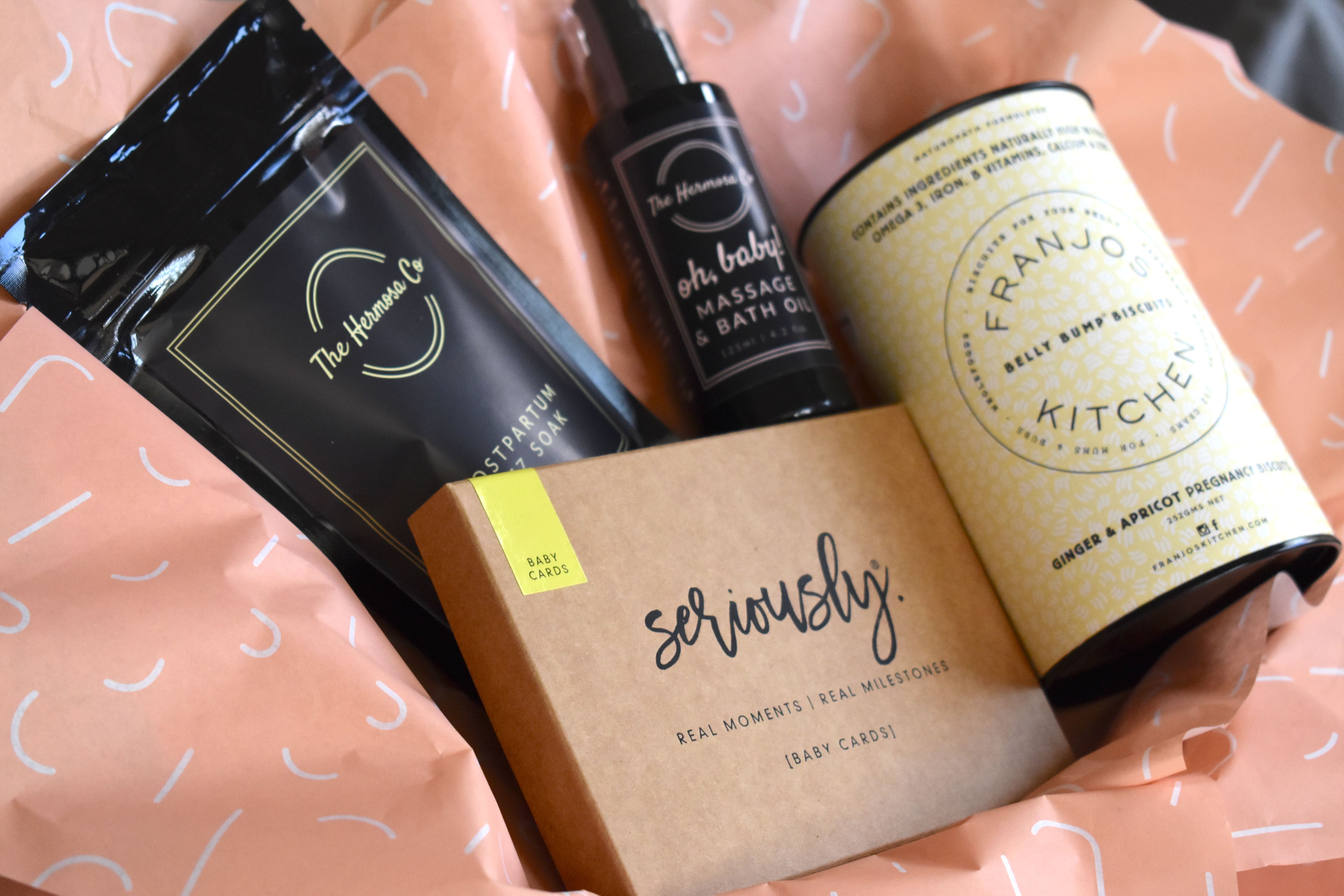
Q. Why did you choose noissue? How has custom printed tissue paper helped your brand?
A: “We discovered noissue through Instagram! We started crushing on all of your amazing work and decided straight away we wanted to get some of that! It may seem silly, but it has really made us feel like we are an actual brand. I really wanted our unboxing process to be so special, and having custom tissue paper adds to the quality, individuality, and the voice of our brand.”
“The other thing that instantly drew us in was how easy the process was! In the setup stage every little step was new for us, so when I checked out the noissue website, the ease instantly appealed. Seeing the cost upfront made it much easier to budget for, as each little expense adds up when you’re setting it up out of your own pocket!”
]]>
Tue, 10 Sep 2019 00:29:39 +0000 https://www.noissue.co/blog/3-eco-friendly-initiatives-for-sustainable-cosmetics-packaging/
Clean beauty, green cosmetics, organic makeup, sustainable skincare…. In 2019, eco-friendly personal care products are clearly having a moment. They are no longer a fringe division of the cosmetics industry. We are seeing greater numbers of consumers (and brands!) embracing a cleaner, greener approach to beauty. This has made sustainable cosmetics packaging initiatives even more important.
According to data from Zero Waste Week 2018, the skincare industry produces over 120 million units of cosmetics packaging. Moreover, a study by National Geographic shows that plastic packaging is used 120 times more in cosmetics packaging than it was in 1960!
However, many clean beauty brands are unsure of how to choose the right packaging solution for their product. Matching functionality with eco-friendliness can be a tricky balancing act. Here are 3 initiatives to help you achieve a more sustainable cosmetics packaging design.
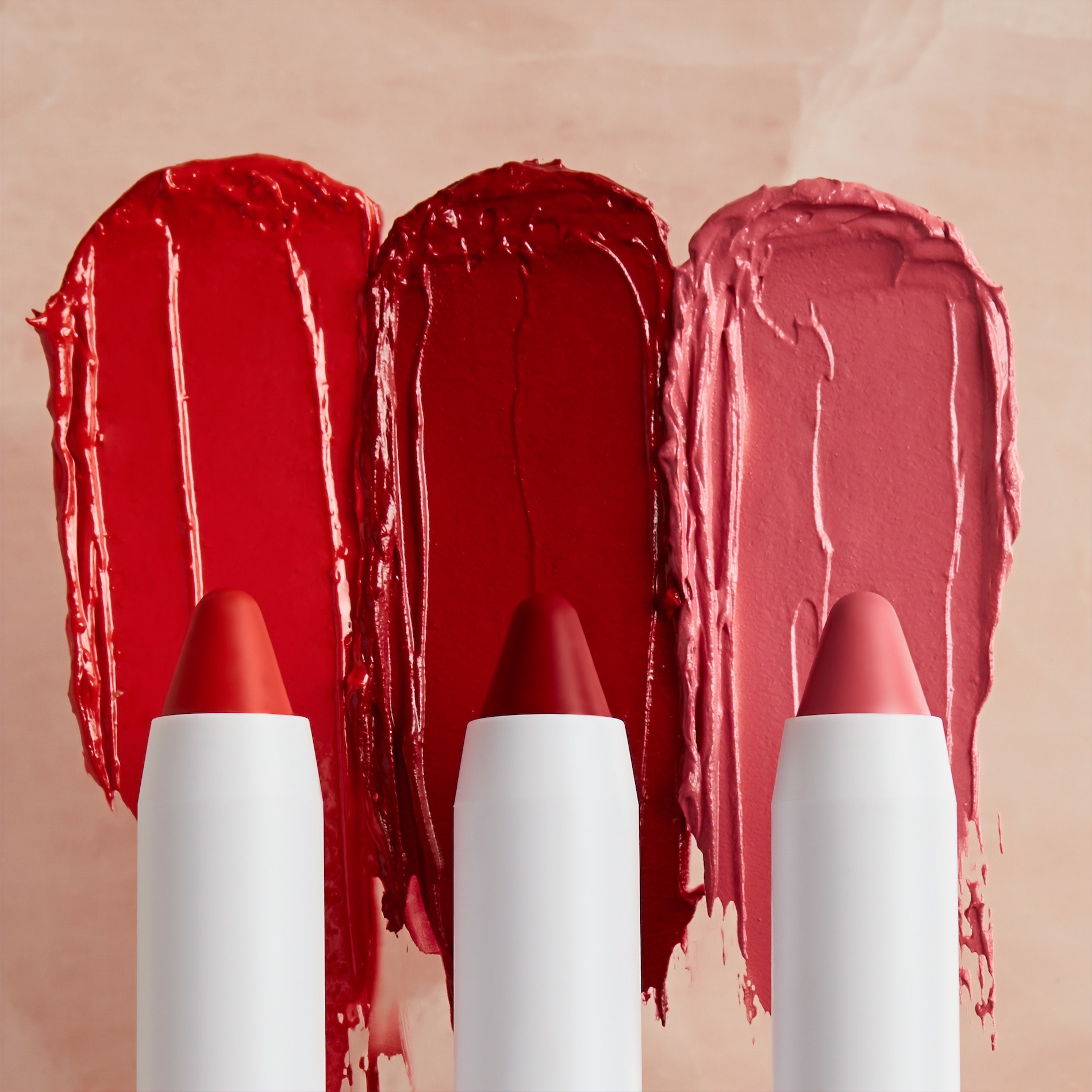
Sustainable Cosmetics Are More Than Just A Beauty Trend.
The Sustainable Cosmetics Summit 2019 is coming up at the start of November. This makes it an opportune time to shine a spotlight on the industry. A growing area of interest for both businesses and consumers is the adoption of sustainable cosmetics packaging solutions.
Stats show that interest in sustainable cosmetics is far more than just a passing trend. According to Statista, revenue from natural and organic beauty brands is forecast to hit $22 billion by 2024. The fastest-growing segment of the clean beauty market is sustainable skincare, followed closely by hair care and cosmetics.
It’s also never been easier to find sustainable skincare or eco-friendly beauty products. In June 2018, the Cosmetics giant Sephora introduced its very own ‘Clean at Sephora’ certification. Its purpose is to help consumers more easily find clean beauty brands and products.
According to Artemis Patrick, the Chief Merchandising Officer for Sephora, “Many [consumers] are looking to shop brands and products that are ‘free of’ and Sephora is responding to help them do that, easily and conveniently in-store, online, and on mobile.”

The Missing Ingredient: Eco-friendly Packaging
But sustainable cosmetics packaging design isn’t usually a criterion for clean beauty or sustainable skin care products. Why? Marketers commonly push the narrative that it’s what’s on the ‘inside’ that matters (which may be true for beauty, but the outsides count when it comes to packaging!).
When consumers search for ‘best clean beauty brands’ or ‘eco-friendly beauty products’, and they will find plenty of information about what a product is ‘free of’. What is much harder to find is information on whether it’s been packaged sustainably.
This is a major problem, as there are 2.5 billion plastic bottles hitting the landfill every year. The beauty industry is a major contributor, as most of its bottles and containers are designed to be single-use. Multi-layered packaging to make products look more ‘premium’ also creates excess waste.
This is an issue that consumers also contribute to. A study of UK consumers discovered that while 90% are recycling kitchen waste, this plummets to 50% for bathroom waste.
So, it’s safe to say that the cosmetics industry is lagging behind on eco-friendly packaging innovations.
Why does sustainable cosmetics packaging matter so much?
With much greater awareness about plastic pollution, sustainable packaging is actually becoming a serious selling point for consumers. Dotcom Distribution’s latest study found that 62% of consumers would rather buy from brands with eco-friendly packaging. In fact, McKinsey has rated sustainable packaging as the biggest ‘green premium’ that consumers will pay extra for!
But when you market yourself as a ‘green’ beauty brand, having a sustainable cosmetics packaging design carries another level of importance. Using eco-friendly containers for beauty products has more than just positive environmental effects. It’s about preserving (and enhancing!) your brand image.
Sustainable brands in any industry face greater scrutiny over their business practices, and with good reason. Consumers are very alert to ‘greenwashing’ practices, and are on the lookout for signs of authenticity. A sustainable packaging initiative shows consumers that a brand actually practices what they preach.
For example, Ethique Beauty is a brand that sells eco-friendly personal care products. Their flagship product is ‘bars’ of hair products and deodorants. Selling in bar form means they avoid plastic bottles, and aren’t contributing to plastic pollution. For shipping, they package the bars plastic-free in 100% compostable cardboard sleeves.
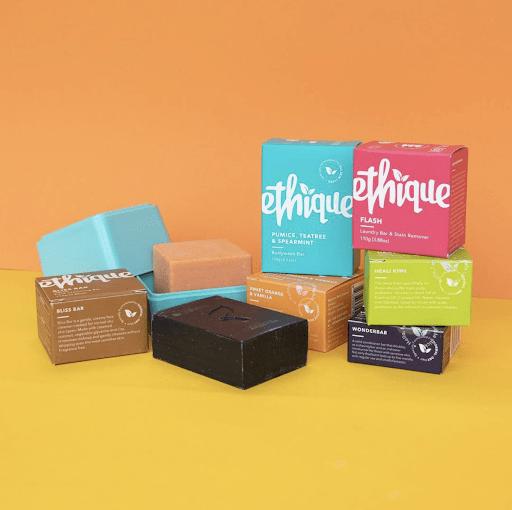
But what message would it give consumers if they instead chose to wrap their bars in single-use plastic? Consumers choose Ethique Beauty because they know they are making an ethical purchasing decision. Discovering some sort of ‘hidden’ plastic packaging wouldn’t just be frustrating. It would feel like a betrayal of what the brand claims to stand for.
Not having sustainable cosmetics packaging when you brand yourself as a ‘clean’ beauty label is, in a way, greenwashing. To consumers, it’s a sign of a brand claiming to be far more sustainable than it actually is. This is one of the biggest ways you can damage your brand’s integrity – which can be difficult to repair.
3 Initiatives To Make Your Cosmetics Packaging More Sustainable
1. Offer a Refill Service of Your Personal Care Products
It can be very difficult to avoid using plastic for liquid products such as skincare lotion. Currently, there are very few waterproof packaging alternatives on the market. Instead, cosmetics brands can encourage consumers to keep containers in use for as long as possible by offering a refill service.
Offering refills instantly provides your brand with a more sustainable cosmetics packaging design right off the bat. You are dramatically cutting down on your carbon footprint, AND providing a solution to plastic pollution. If you use recycled plastic for your containers, that’s even better! The Netherlands-based group LCA Centre found that if all cosmetics brands adopted refillable containers, the beauty industry could eliminate a whopping 70% of carbon emissions.
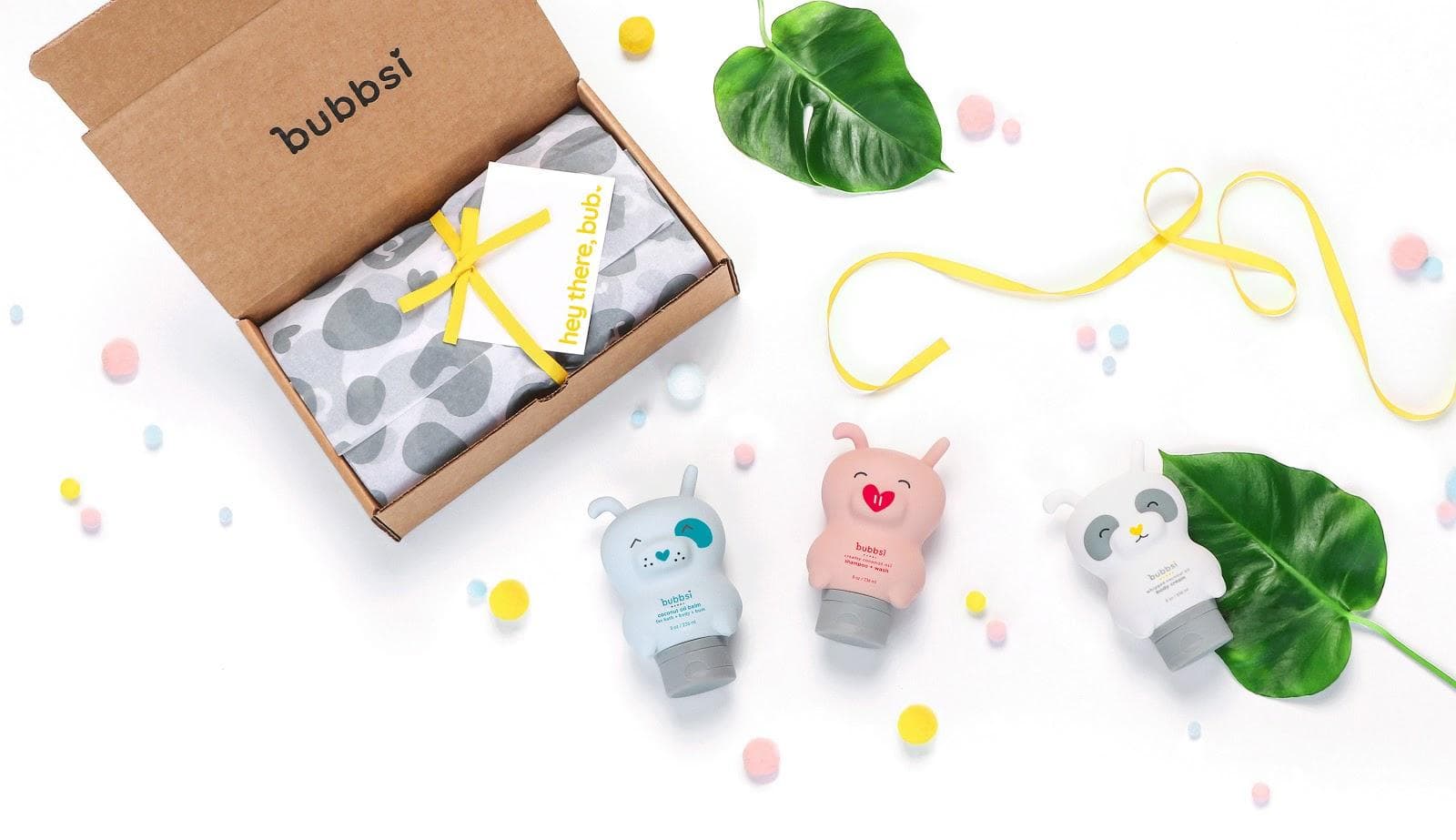
Refillable packaging: Bubbsi Skincare Collection
Sweta Doshi approached Bubbsi Skincare Collection’s eco-friendly packaging from two angles: offering a refill service, and adopting a packaging design that their (little) customers wanted to keep:
“When I decided to launch a personal care company, the last thing I wanted to do is put more plastic packaging and bottles into our oceans and landfills.”
“Instead, we created an innovative silicone bottle that doubles as a toy, but more importantly is non-toxic, durable and refillable! Rather than buying a new bottle every few months, customers can purchase our 32oz refill size to refill their small bottle over and over again. This not only brings value to the customer, but it keeps plastic out of the oceans and landfills. Because our animal bottles (our “bubs”!) are so cute, no one wants to throw them out…and they shouldn’t!”
“Additionally, we try to keep all our materials as low-waste as possible. This means no outer packaging on our bottles and using sustainable materials where possible – like compostable packing peanuts and noissue’s custom tissue paper for branding. We like to emphasize the reusability of all of these packaging materials – from box to bottles!”
2. Cut Out Wasteful Elements From Your Cosmetics Packaging
Attractive packaging has always been a major asset to beauty brands. It’s a highly effective way to market new products or limited edition collections. Multi-layered product packaging designs in particular have traditionally signified luxury, which is why they are often used by high-end cosmetics brands. In an industry where there is intense competition, a product has to look enticing enough for a customer to want to pick it up off the shelf.
But however visually appealing the end product might be, this practice can be wasteful. Packing multiple boxes inside each other or using layers of cardboard and cellophane is unnecessary when it comes to maintaining product integrity. If there is one buzzword to achieve a more sustainable cosmetics packaging design, it’s ‘reduce’. Take a look at your design, and consider the following:
Is every part of my design reusable or made from recyclable materials?
Are there any packaging elements that don’t serve a clear purpose?
Of course, there’s nothing wrong with adding a little pizzazz to your cosmetics packaging. But it’s important to seek out eco-friendly options. For example, noissue’s custom tissue paper is FSC-certified and uses only soy-based inks, making it 100% recyclable. It’s ideal for gift wrapping your products, and creating a cohesive brand image!
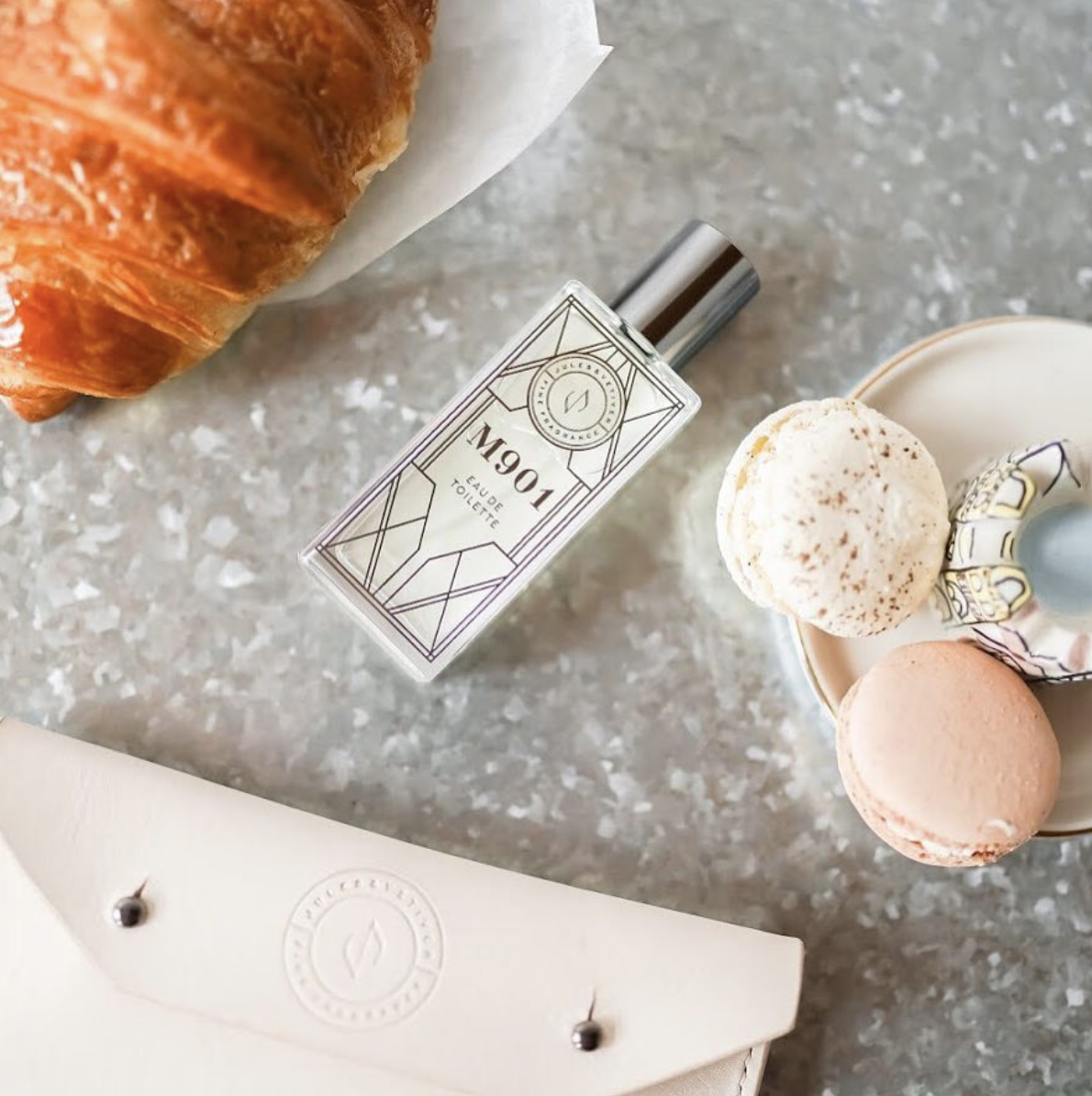
Jules and Vetiver: Sustainable Perfume Packaging
Sustainable perfume brand Jules and Vetiver were conscious from the start about using only cruelty-free ingredients. But they were also well aware of how difficult it is for consumers to find perfumes with eco-friendly packaging.
“We cringe when we see how many luxury fragrance brands invest a ton in flashy packaging that serves no purpose.” Says the brand’s founder Katrina Sellers. “It’s so senseless, but it’s always been the table stakes for luxury brands. Traditionally, the only way fragrances (and a lot of consumer products, really) think they can demonstrate value is by adding on layers of unnecessary packaging to prove that the product is special.”
With this in mind, Katrina sought to prove that attractive yet sustainable perfume packaging was possible.
“One of our first offerings was a hand-stitched leather case as an alternative to a cardboard product box. We wanted something that was beautiful, artisan-made (just like our perfumes!), and, above all else, could be useful for literally years to come. Our glass bottles, custom tissue paper, and shipping boxes are all recyclable. Our packaging will continue to evolve based on what our customers do and don’t want. This way, we ensure that we’re making conscious, customer-driven choices that help to define what sustainable luxury is.”
3. Experiment with More Innovative Packaging Materials
As the packaging industry invests more into R&D for eco-friendly packaging, we are seeing ever more innovative packaging solutions hit the market. To really make a statement to your customer base, why not consider adopting a more cutting-edge packaging design?
Papers and cardboard, especially of the recycled variety, will always have their place in sustainable cosmetics packaging. But there is now a greater diversity of options which offer other benefits to both businesses and consumers.
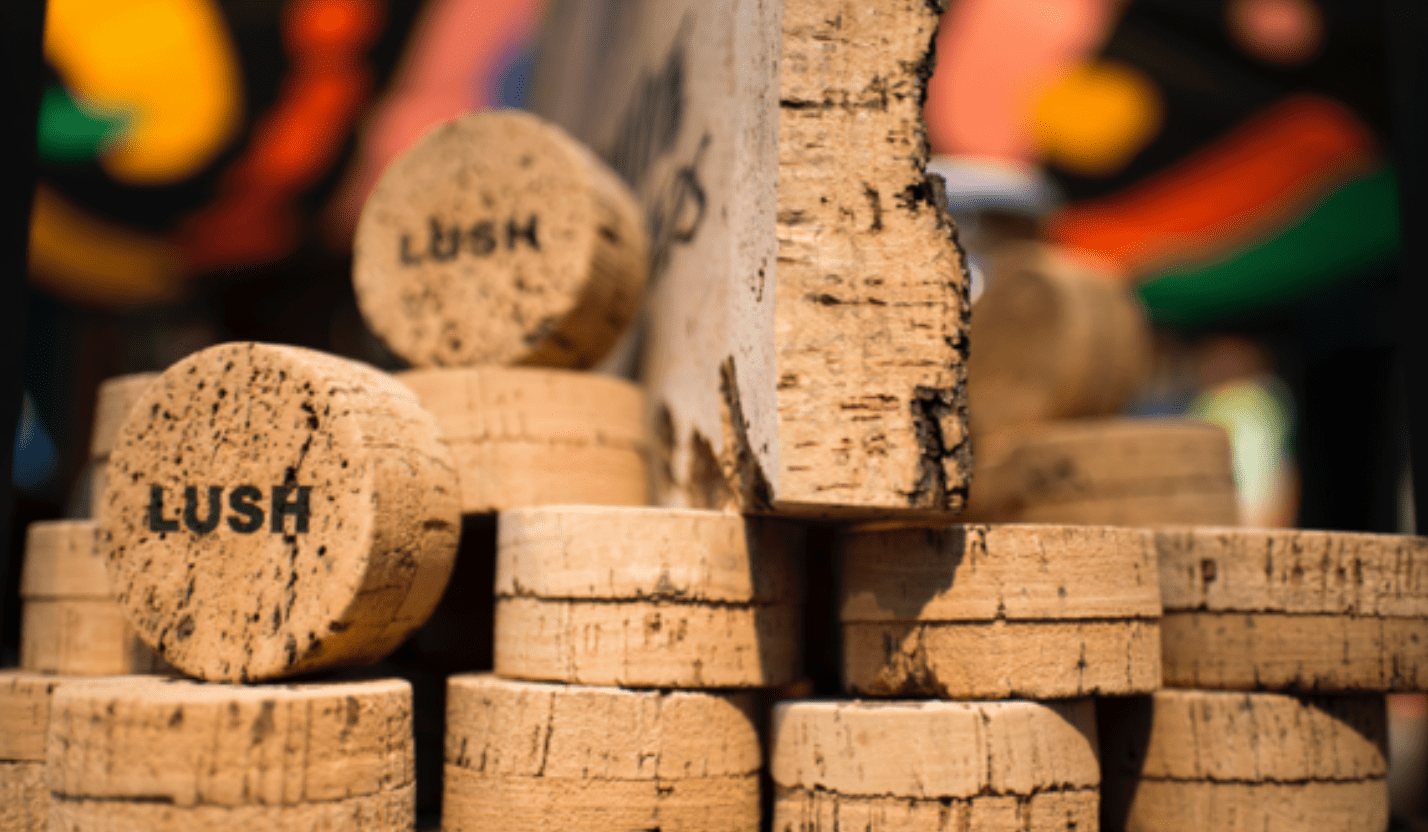
Lush Cosmetics, the sustainable beauty pioneer, have become known for always being on the lookout for more sustainable packaging solutions. They recently announced that it would be switching out their reusable aluminum containers for cork containers. Cork is not only durable, but 100% biodegradable and waterproof. Lush has also partnered with authorities in Portugal to create a sustainable harvesting program, ensuring that locals will also benefit.
Other designs, such as bamboo packaging, have also gained popularity due to being compostable and low-impact to grow. Seaweed, cornstarch, and even mushroom fibers are now becoming viable packaging materials. So, why not check these out and see if they would fit your sustainable cosmetics packaging needs?
]]>
Mon, 09 Sep 2019 22:50:25 +0000 https://www.noissue.co/blog/purematcha-teas-standing-out-from-the-crowd-with-custom-packaging/
When you are starting a small business, creating a unique brand identity is one of the most important steps for success. However, this can be pretty challenging if you are based in a competitive industry.
According to Forbes, brand storytelling is 22 times more memorable than just listing facts about your brand. Why? Because it helps your audience a personal connection with what your brand is trying to achieve. If you can make customers feel a part of this mission, this gives your brand a powerful value proposition. So, you need to decide what it is you want to be remembered for!
For Steve Fambo, founder of the start-up Purematcha Tea, offering a stellar customer experience was the key to standing out from the crowd. Steve tells us about his efforts to create both sustainable and high-quality matcha, and how his minimalist custom tissue paper design created a major point of difference for the brand.
(In Steve’s own words):
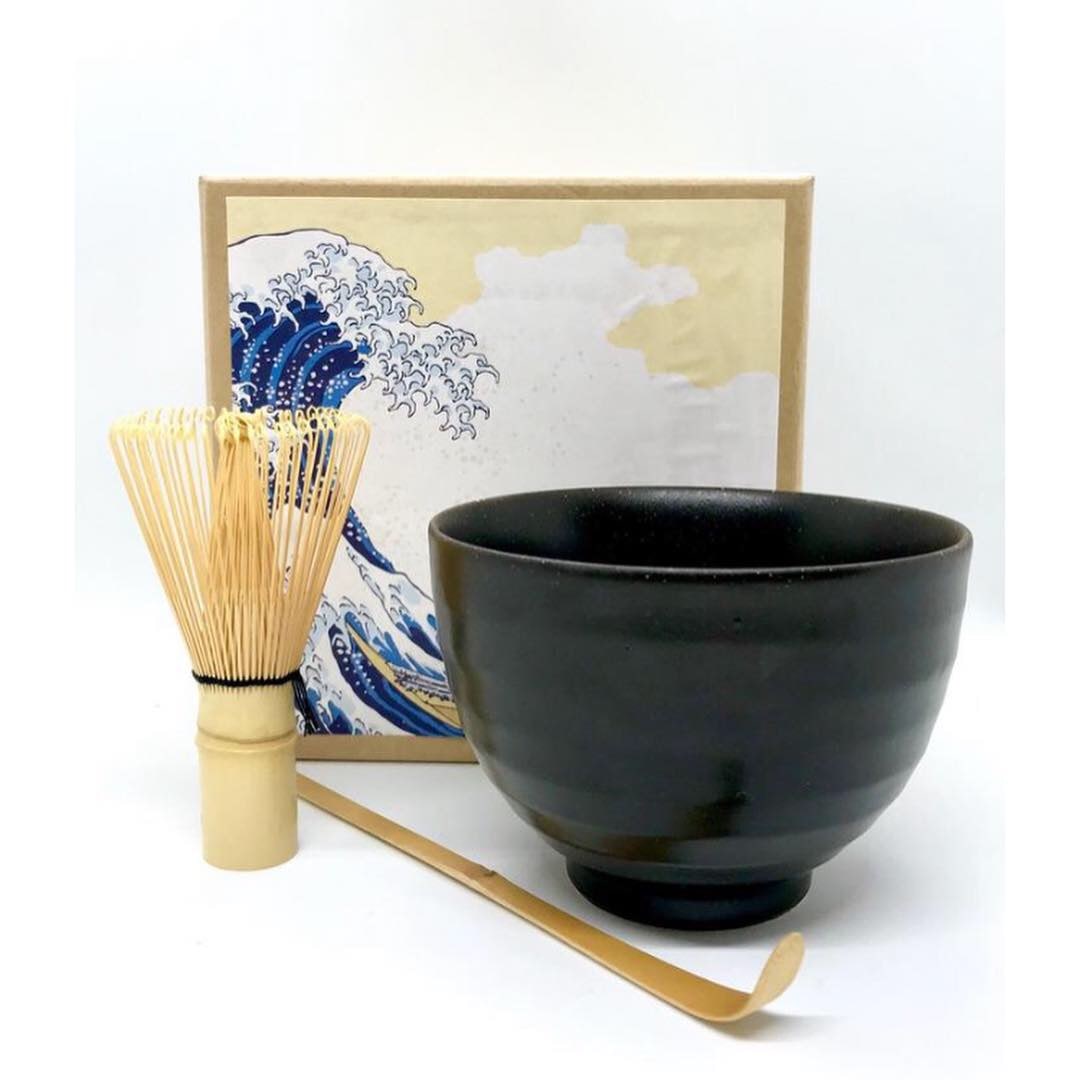
“I started Purematcha together with my wife Stephanie. I’ve worked in the digital online delivery space since early 2000 and my wife comes from a Visual Arts teaching background.”
“Our matcha story started in December 2013 during our honeymoon in Kyoto Japan. My wife curiously ordered a vibrant green matcha latte from a cafe in Kyoto and she was immediately drawn by the matcha’s full-bodied green tea flavour. I had a taste myself, finished the flat white that I’d ordered and went right back into the cafe and ordered another matcha tea for myself.”
“For a good part of that day, we spoke about how great a green tea latte would sell back home in Australia. At that time, we knew little about the rich history and importance of matcha tea in Japanese culture, let alone the secret health benefits that matcha tea has been providing to the Japanese people for centuries.”
“We drew comparisons with Australia’s love for coffee, in particular, the home barista scene where there is a huge demand for freshly roasted beans as opposed to supermarket long shelf life coffee. Furthermore, the demand for high-quality brewing accessories to take the coffee at home experience to a whole new level. Similarly, we don’t just offer fresh high-quality matcha. We offer the entire ensemble of handmade matcha brewing accessories, such as beautifully crafted matcha bowls and handmade bamboo whisks. Our Purematcha tea sets contain all the essential items for brewing the best-tasting matcha!”
“Our vision is to inspire people through awareness of how this incredible green tea is an amazing addition to a healthy lifestyle. Organic, raw, pure and green it’s a super tea that we want to bring into the lives of everyday people.”
Ensuring a Sustainable Product
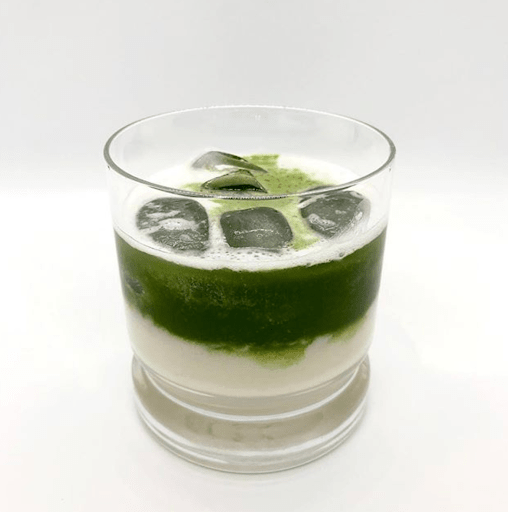
“Sustainability is very important to us. We have two young girls under the age of 5, so ensuring that they grow to live in a clean and environmentally safe environment is extremely important to us, as it would be for any parent. This is why we chose to work with an organic family farm in the Uji region of Japan. The Japanese government enforces strict standards to attain JAS accredited organic certification. This means we can guarantee our customers that Purematcha teas are completely free from harmful chemicals and pesticides. It also means that the farmers who work on the farm are safe from any harmful pesticides as well.”
Beyond the farm, the airtight packaging we use to store our Purematcha powder teas in is 100% recyclable. The same goes for the shipping boxes we use to ship out our popular full ensemble matcha tea sets. Using recyclable products wherever possible gives us the peace of mind that we are doing our bit to keep our environmental footprint very small.”
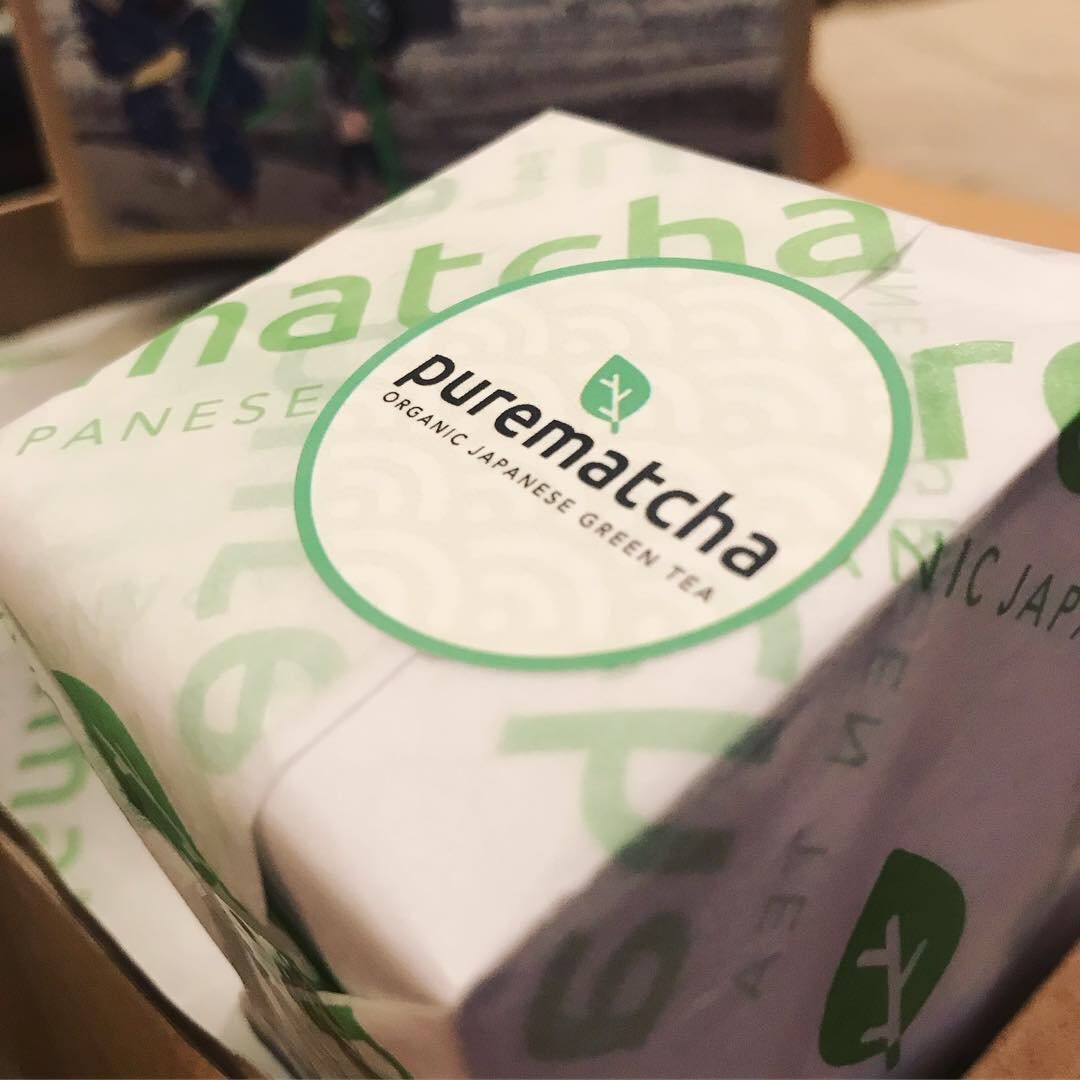
If we think about the lifestyle brands that populate our Instagram feeds, there sometimes isn’t a whole lot that makes one look different from the next.
It’s very easy for brands to get stuck in the dreaded social media rut, posting endless product imagery that doesn’t really resonate with their audience.
This lack of originality also affects the post-purchase experience too. All too often, a customer’s anticipation of a purchase arriving isn’t met by an enjoyable delivery. When the customer experience feels mass-produced, this has a big impact on brand perception.
If a brand treats its own product as something ordinary, rather than exciting and engaging, why are customers going to view it as the latter?
Putting in the effort to ‘dress up’ the unboxing experience makes all the difference to how memorable your brand is. As Steve discovered, investing in custom packaging for Purematcha Teas was the key to building a stronger relationship with their customer base:
“Matcha is a booming industry, and so we find ourselves in a highly competitive market. Getting noticed and standing above the competition is a big challenge for us. We know that the core of our success starts with customer satisfaction and building loyalty with our customers. The challenge at Purematcha is to set up the right impression straight out of the box (literally!).”
“I reflected on past buying experiences where I was immediately won over by impressive, well-thought-out packaging. I recall unboxing my very first Apple iPhone and could see that Apple went through great lengths to perfect the simplistic yet innovative packaging. It definitely left a lasting impression on me, as I still own an iPhone! (albeit not the 2008 model). That minimalist style packaging is something we try to channel in our own line of packaging.”
“We know that first impressions are the lasting ones, so that’s why we recently chose to meticulously wrap each item with noissue custom tissue paper and use Purematcha custom stickers as a seal for each wrapped item. It’s those finishing touches that will build confidence, loyalty and long-lasting relationships with our customers.”
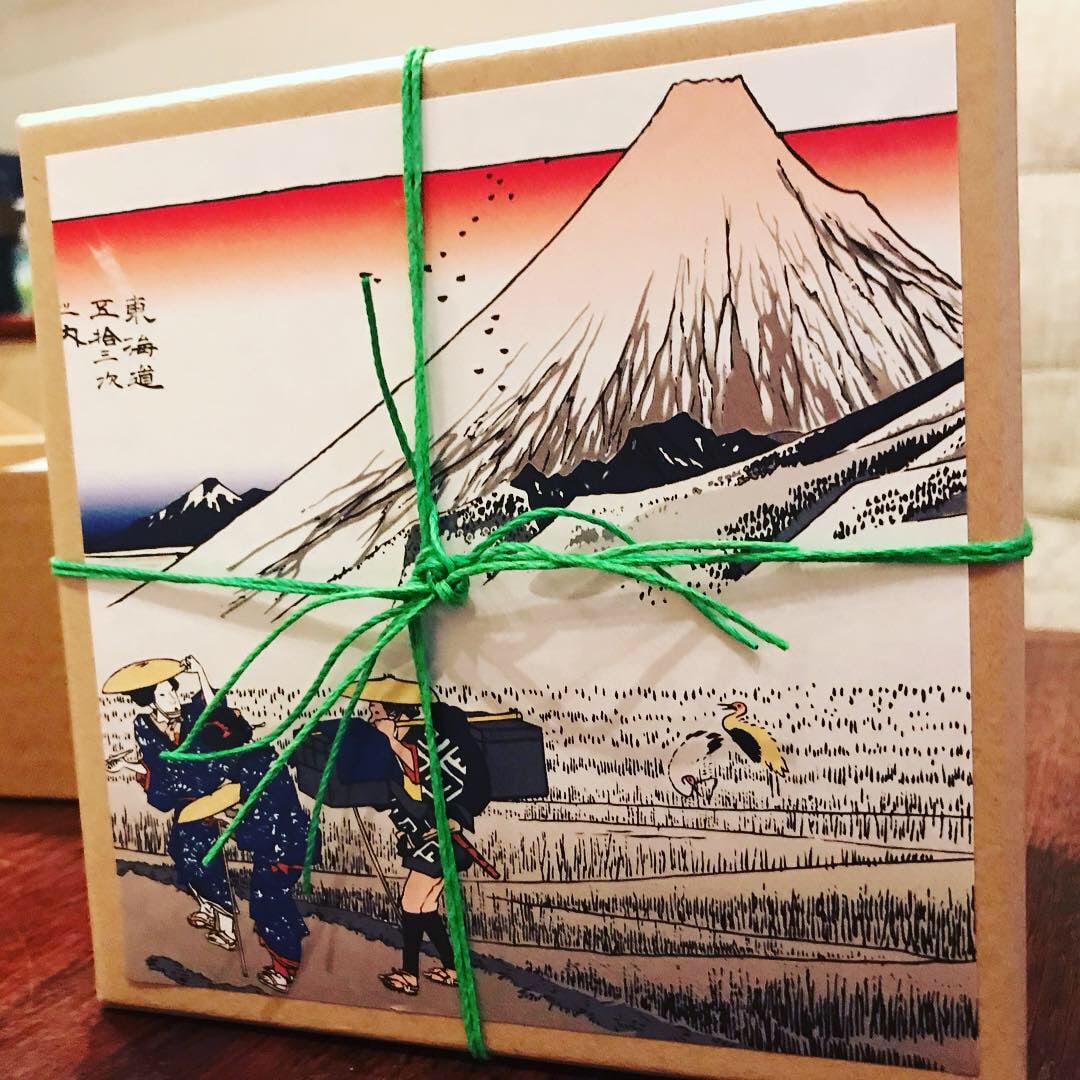
“In many ways, noissue did for me what Apple did for me 11 years ago. noissue co-presented an online branding experience that caught my immediate attention, and I was very impressed. In a few simple steps, noissue’s intuitive online designer allowed me to easily produce draft versions of our Purematcha wrapping paper and stickers. The preview feature meant that I could visualise the final product, and I was able to see the cost upfront without any hidden surprises. The online designer saved us a tonne of time and headache and we are so happy that this service is available to us!”
]]>
Tue, 03 Sep 2019 18:23:12 +0000 https://www.noissue.co/blog/moq-meaning-and-why-minimums-are-relevant-for-custom-packaging/
Custom packaging is an integral part of a memorable unboxing experience. It serves as a fantastic branding tool for your online channels. With more and more small businesses considering making the investment in custom packaging, the biggest barrier is often high Minimum Order Quantities (or MOQs). This can make that unboxing experience prohibitively expensive.
MOQs for packaging present the biggest challenge to businesses wanting to make this investment. So, we end up fielding a lot of questions about them from our customers. This ‘How To’ guide is an introduction to what MOQs are, why they exist, and how to get the best results for your budget!
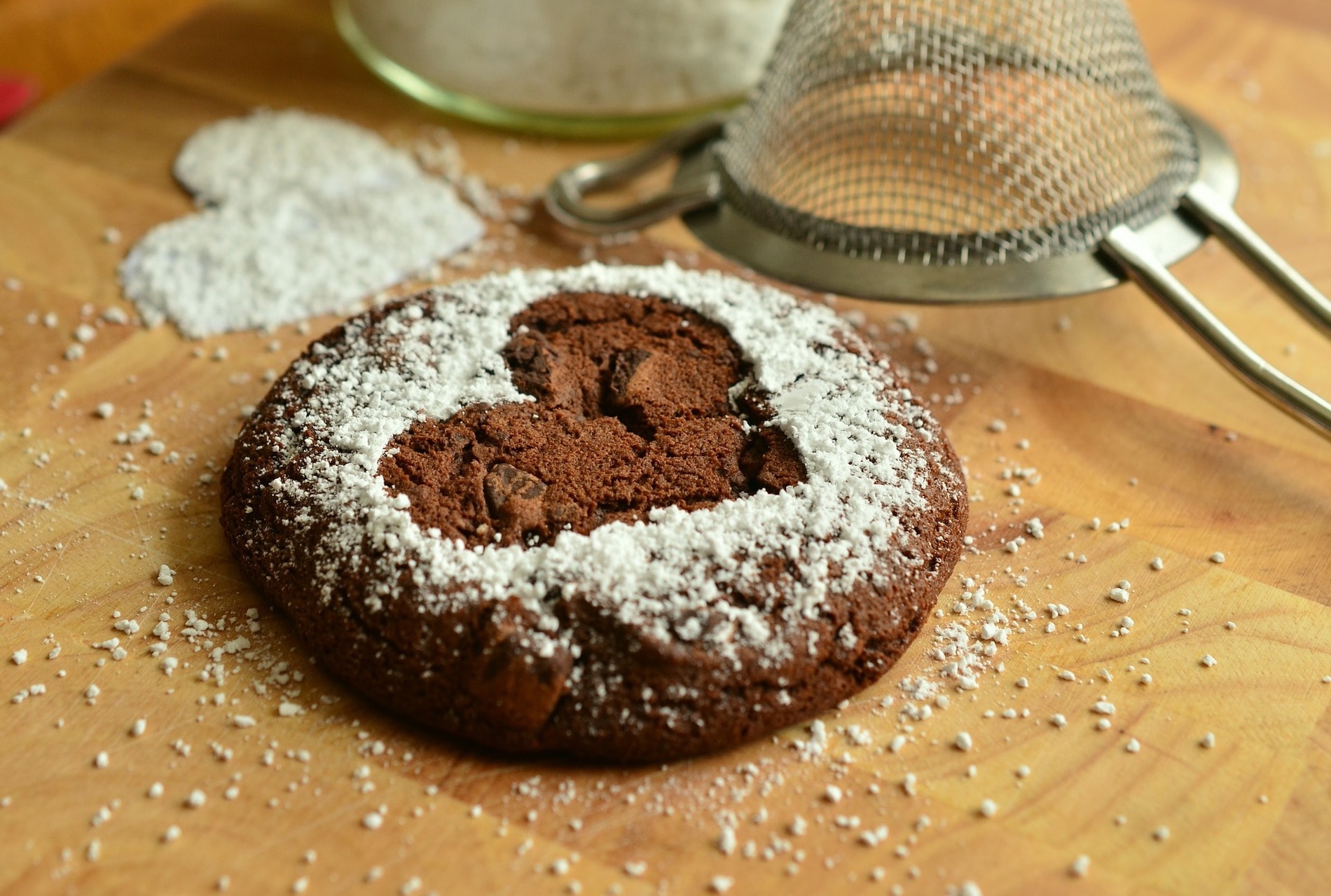
What is MOQ?
‘Minimum order quantity’ (MOQ) refers to the smallest number of units that a supplier (in this case, us at noissue) will make for a single order. Although we usually think about MOQs in reference to custom-designed goods, we all have to navigate MOQs constantly in everyday life as well.
For example, it isn’t usually possible to buy only a single chocolate-chip cookie in a grocery store – they come in pre-packaged boxes. So, if each box has 12 cookies, then 12 is the MOQ for that particular supplier. (Which doesn’t sound so bad when it’s cookies…)
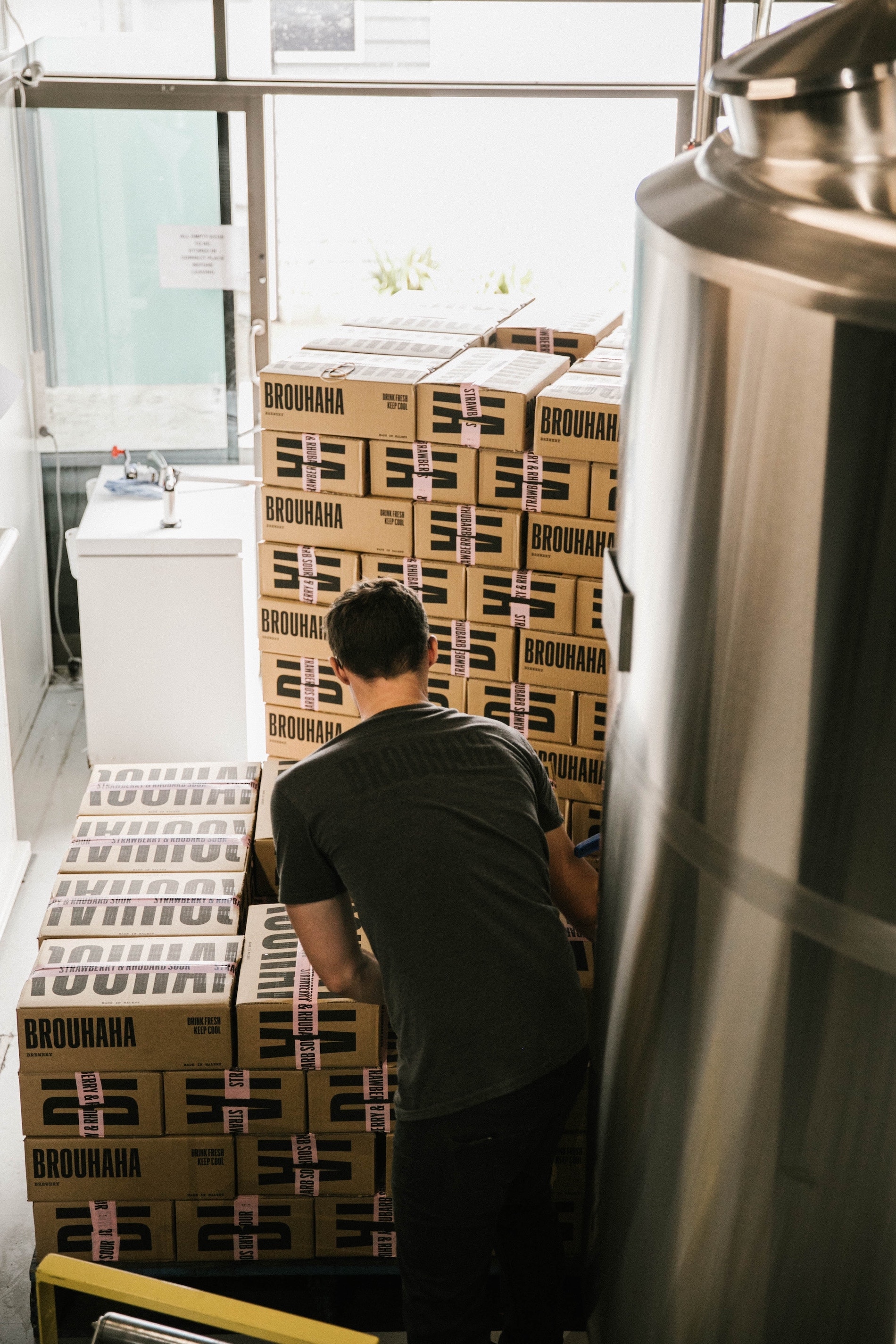
Why do MOQs exist?
We get it; MOQs can be a real headache for small businesses. But there are several good reasons why suppliers use them!
Every supplier needs to ensure that a production run is as cost-effective as possible, or they could end up actually losing money on orders in the long run. To continue with the (delicious) cookie example, it isn’t particularly productive or cost-effective for a supplier to make only one cookie per batch. It’s also pretty much possible to find a recipe for one! It’s far easier for them to both make and sell them in bulk.
This is even more important when a product is a custom print or design, as is the case with branded packaging. This is because there is no possibility of the design being mass-produced or for any excess to be sold on. Without MOQs for packaging, it would be much more cost-effective to only manufacture a set of standard colors or designs, which is far less interesting for businesses!
So, a supplier’s MOQ requirement is set to ensure that they can make a minimum profit off every order.
Having MOQs for products is also a way for suppliers to ensure that they are manufacturing to a high quality. If MOQs are variable, quality control becomes very difficult.
Supplier MOQs are therefore a guide for the size of business a supplier specializes in working with. Many suppliers partner with large corporations, meaning they are only set up to produce large-scale orders. By setting a higher MOQ e.g. 1000+ units per order, they communicate clearly to potential customers what their capabilities are. It’s important to check supplier directories in advance of contacting, so that you know what ballpark you are dealing with.
At noissue, we aim to remove the barriers to high quality custom packaging for small businesses. As a result, our MOQs for packaging are some of the lowest on the market to make it as accessible as possible.

How do suppliers set their MOQ?
MOQs can vary widely between products and suppliers, and this is decided by a variety of factors such as:
The cost of raw materials.
The MOQs set by their own suppliers.
Whether the product is custom designed.
The cost of running the production line.
The cost of shipping and storage.
So, don’t trust a supplier when they tell you that what they offer is ‘industry standard’ – there really is no such thing! MOQs can also differ between regions, so what is standard in Hong Kong may not be the same in North America (Canada and the United States). Chinese manufacturers in particular are known for the ease of bulk ordering, so China MOQs are commonly higher than elsewhere.
It’s very important that you do your own research to find suppliers who can fulfill your needs. For example, noissue’s MOQ for packaging varies between products in our range; our tissue paper and stickers both have a MOQ of 250 units due to being custom-designed and the cost of ink, while our compostable mailers have a lower MOQ of 100 units because they are a stock design. This way, we can serve businesses who only want a small quantity of packaging, and those wanting wholesale orders!
How to negotiate MOQs for custom packaging as a small business
Now that you have a better idea of how MOQs in orders work, it’s time to look at what you can do to make them work for you!
A high MOQ for packaging can seem like an impossible barrier for small businesses, especially for those who are just starting out and are cautious about the investment. Even just meeting the MOQ can be a challenge, let alone exceeding it to get a better price per unit.
These handy tips will help your business to get the best value from your orders with us:
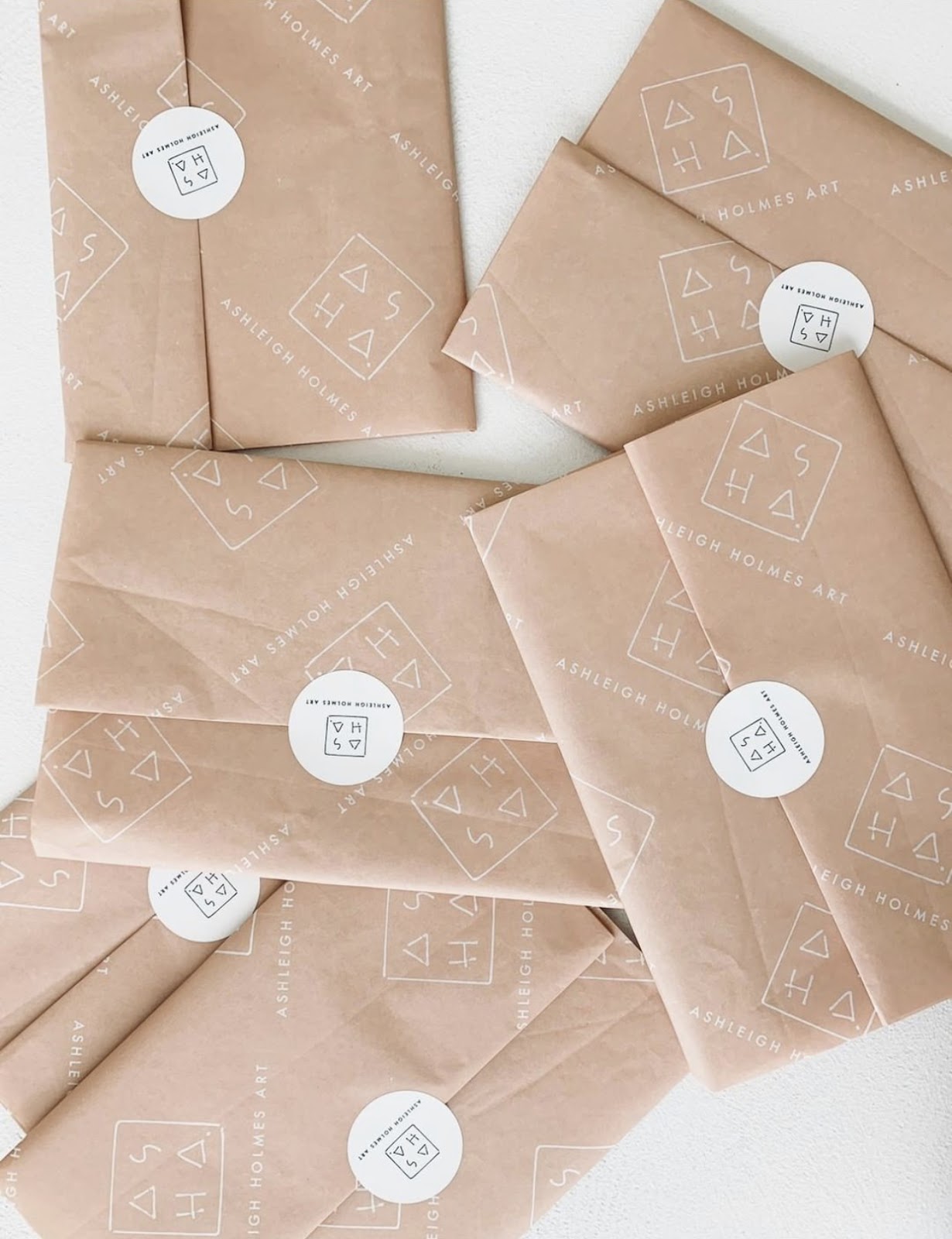
Consider how you may use more of some custom packaging elements than others.
If you have multiple custom packaging elements in your order fulfillment strategy, it’s unlikely that they will run out at the same time. This is something you will need to factor in when placing orders, or you could leave yourself short! This is a great way to both prevent you from unexpectedly running out of supplies and to maximize the value of your orders.
For example, an average parcel for one of your online orders might take two sheets of custom tissue paper to wrap, but only one custom sticker to seal the outside. This means your tissue paper will run out twice as fast as your stickers. So, a hypothetical order of 250 stickers and 500 sheets of tissue paper ensures that you are covered on all fronts for a given period of time.
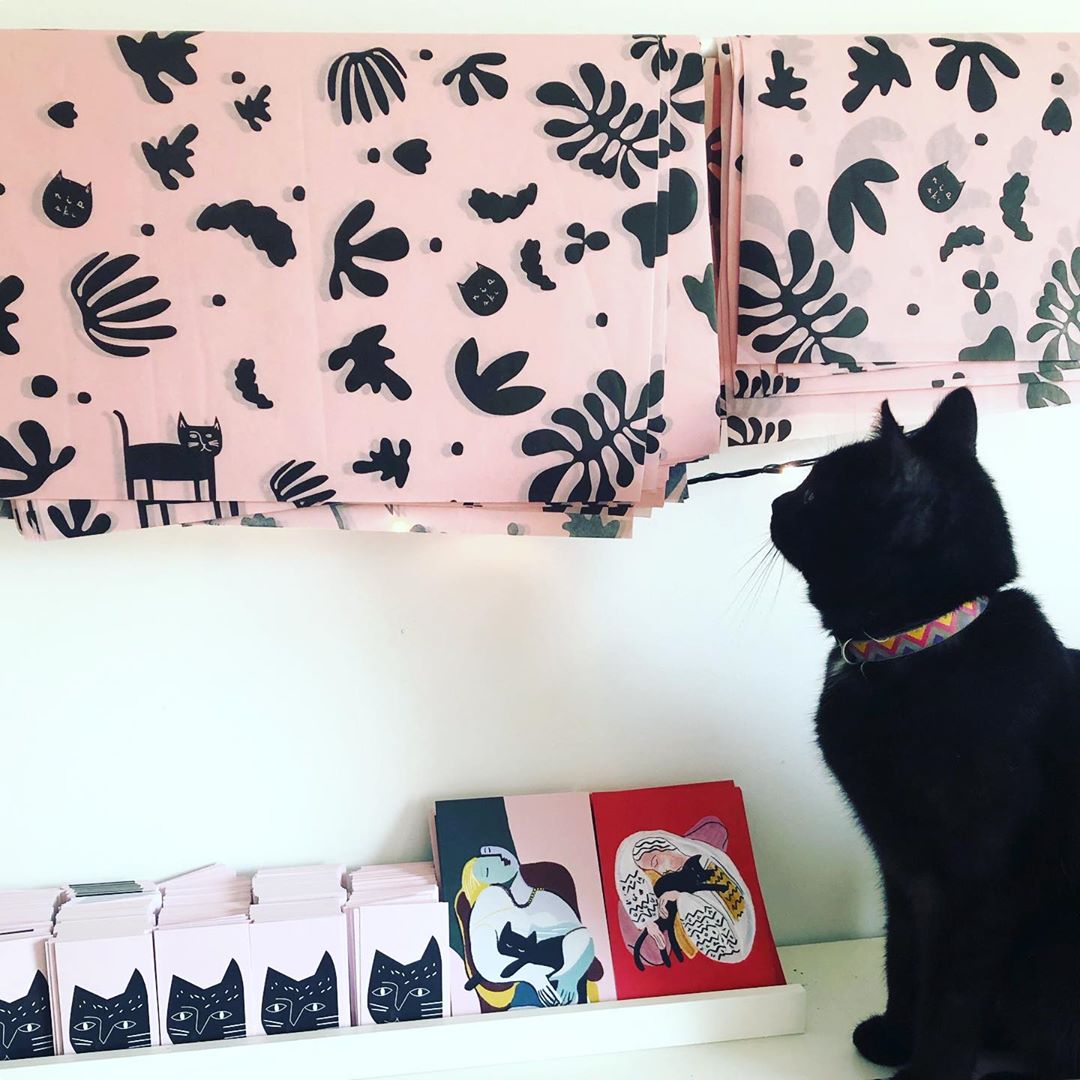
Artist Nia Gould has a handy way of storing her custom tissue paper!
Utilize storage space.
Our MOQs are designed to give customers the best possible price per unit. The bigger the order is, the more the price per unit will drop. This makes it better value for businesses to place larger orders of packaging supplies at one time. It’s also far more efficient in comparison to placing multiple orders throughout the year and having to factor in lead times.
If you have the storage space available in your workplace, it may be worth the upfront investment of buying more units to last you longer. An upside of compostable mailers, as opposed to custom boxes, is that they take up far less space to organize and store! Both the MOQ and the price per unit is also much lower for mailers, as the cost of printing is usually less.
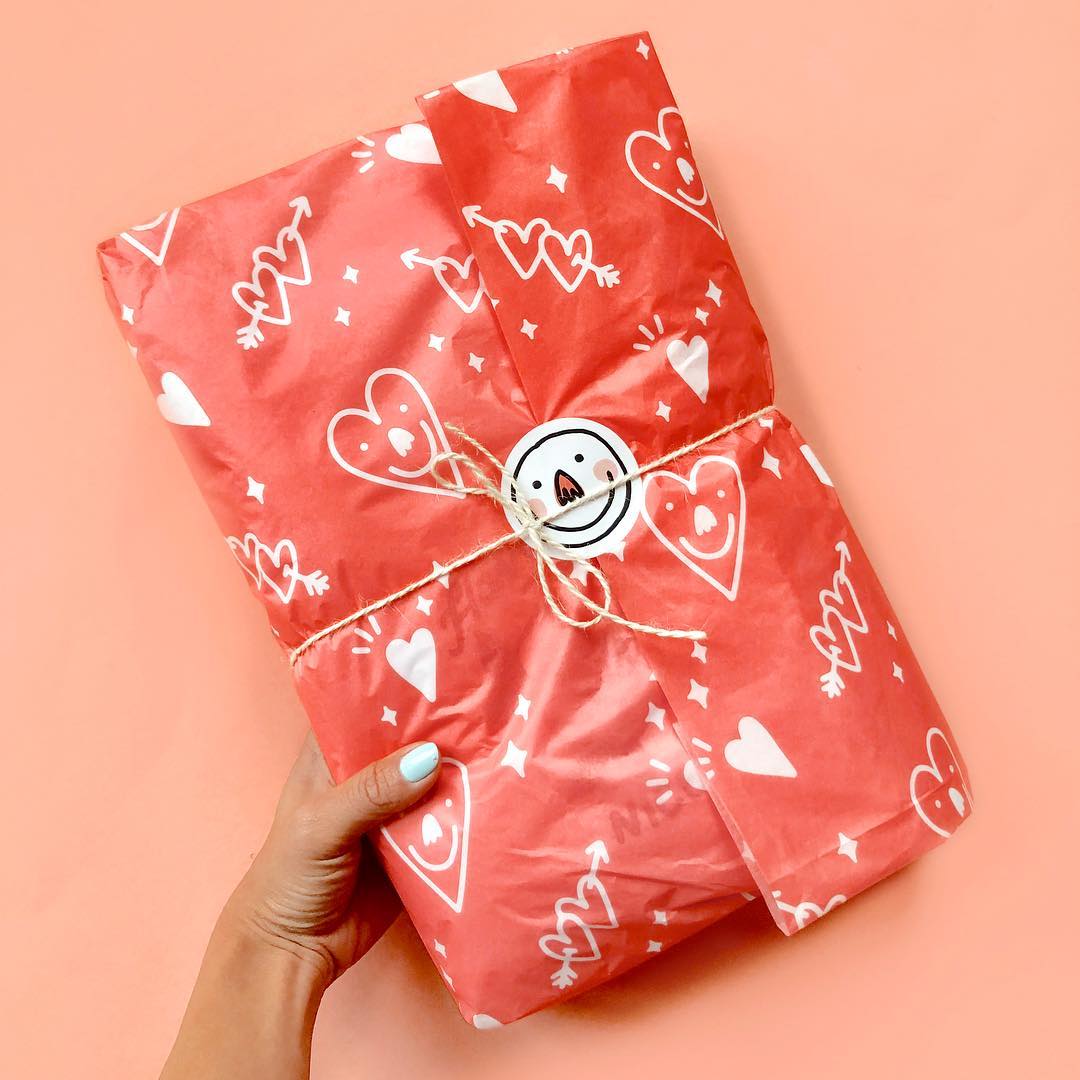
Take advantage of low MOQs with seasonal packaging designs.
While ordering a small run of packaging will cost you more per unit, you can definitely make this work to your advantage as a retailer. Seasonal packaging designs or custom logos have traditionally been out of reach for smaller merchants, but low MOQs make it possible to order custom designs specifically for a limited period in the calendar.
If there is a big retail holiday coming up, such as Christmas or Valentines Day, you have a great opportunity to capitalize on people’s gift-buying needs by offering a value-added gift wrapping option! It makes your brand far more memorable, and allows you to capitalize on your status as an independent retailer.
MOQs shouldn’t make sourcing custom packaging impossible; in fact, they can actually save you money in the long run! An MOQ for packaging can also help to guide your order fulfillment and marketing strategies for the better; you just need to consider how you can make them work to your advantage. Getting getting creative with seasonal designs and storage will help you to meet the MOQ that works best for your business.
]]>
Wed, 04 Sep 2019 17:07:27 +0000 https://www.noissue.co/blog/the-benefits-of-using-custom-tissue-paper-for-your-business/
Tissue paper can be used to gift wrap your products, or as a form of packing filler. Using it to line the inside of a box will give any order a classy feel. Placing tissue paper in a shopping bag or mailer is also a great way to add some branded flair!
In short, tissue is one of the most versatile packaging elements available. With that in mind, why not consider choosing custom tissue paper for your packaging needs?
Using custom tissue paper for packaging might seem unrealistic for a small business. After all, there are many other expenses at your doorstep. But custom tissue paper is a fantastic investment because it’s far more than just attractive packaging. It’s a branding tool, a marketing strategy, and a customer service booster, all rolled into one tidy sheet!
Custom Tissue Paper is a Powerful Branding Tool
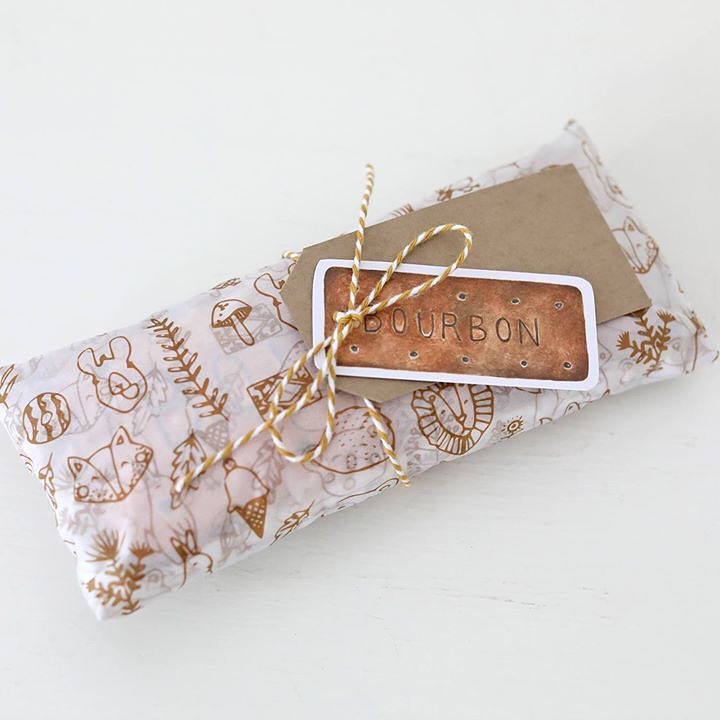
“Showing off my custom tissue paper on social media has helped to spread the word that I offer something a little different, and that the finishing touches really do matter.” Michelle Kreussel, The Fox in the Attic
To be successful, every small business needs two things: A unique brand identity and high-value offerings. But in the age of eCommerce, success isn’t necessarily a guarantee even when you’ve ticked those boxes.
There are simply too many brands fighting for attention online, and standing out from the crowd can be challenging. Especially for retailers curating a selection of products, it can feel as though there is less and less separating you from your closest competitor.
In such an oversaturated market, it’s crucial to make your mark in a different way to ensure that your customer remembers you.
Designing your very own custom tissue paper, logo front and center, is a simple and lasting way to build brand recognition in your customers. Custom packaging is usually reserved for the bigger brands of eCommerce, so this automatically gives you a point of difference. As a brand, the point of opening a package is one of the highest moments of engagement for your customer, meaning you have their full and undivided attention — a little extra emphasis on your brand at that time is never a bad idea!
Custom Tissue Paper Improves the Customer Experience
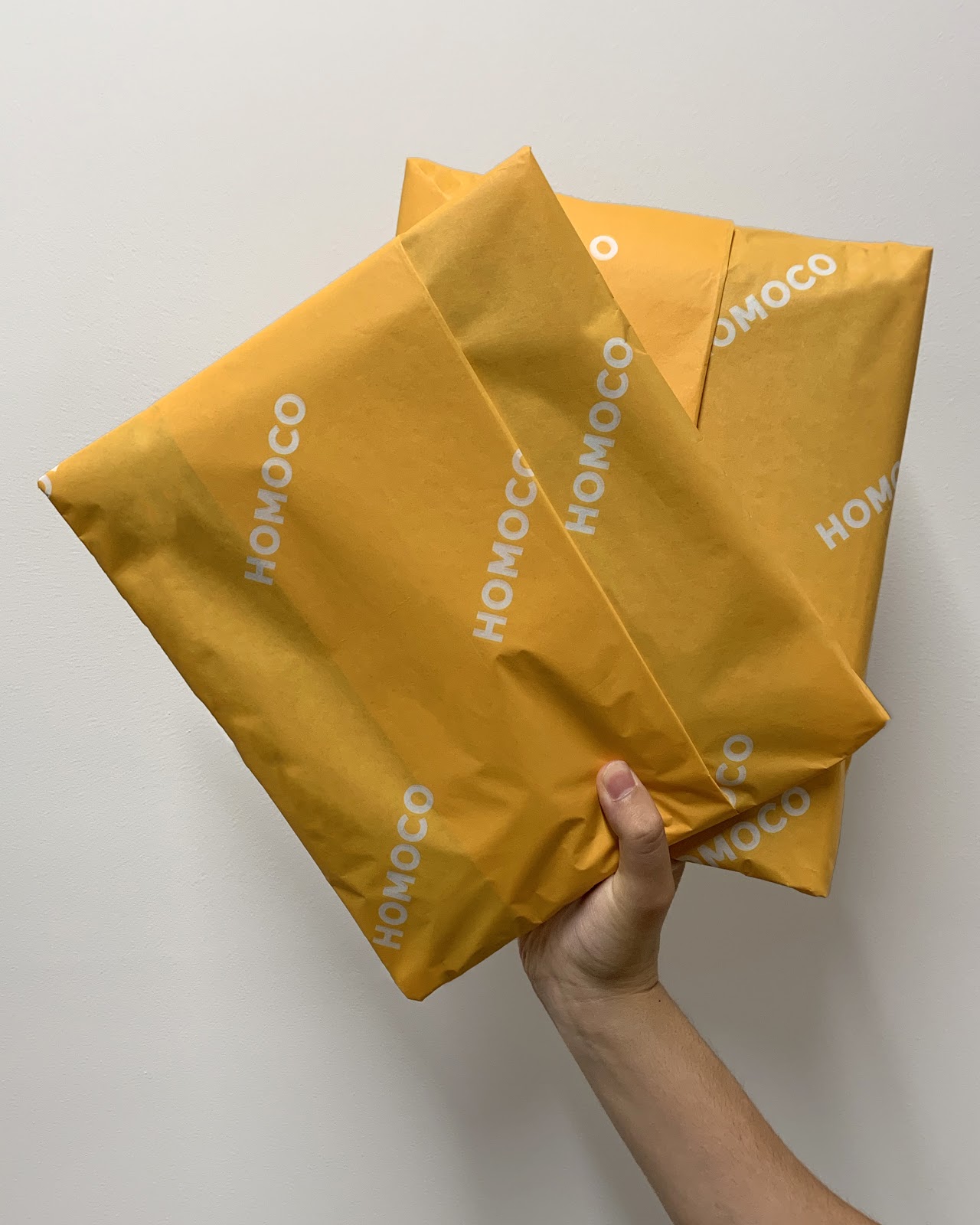
“Having custom tissue paper was the perfect finishing touch. It’s something high-end shops do regularly, but to have it in a temporary store was incredibly special.” David DuGoff, HOMOCO
When we think about custom packaging of any kind, whether it be gift bags, gift boxes or tissue paper, we associate it with luxury. Why? Because traditionally it is high-end brands who have made use of it. It’s all part of a very calculated customer experience strategy; to justify premium pricing, brands offer a premium experience that can’t easily be matched elsewhere. A memorable ‘unboxing’ experience creates a key point of difference that leaves customers with a favorable impression of the brand.
Any business can benefit from taking advantage of this association. It’s the special add-ons that are the key to offering a stellar customer experience – those value-added extras that customers haven’t paid for, but love to receive.
So, taking the time to wrap your orders in custom tissue paper might seem like a small touch, but it speaks volumes. It tells your customer that you value them, and that you value your brand enough to make that extra effort. Lots of brands tell their customers how valuable they are and how they should feel about their products — custom packaging like tissue paper shows it!
Custom Tissue Paper Gives Your Brand Valuable Marketing Opportunities
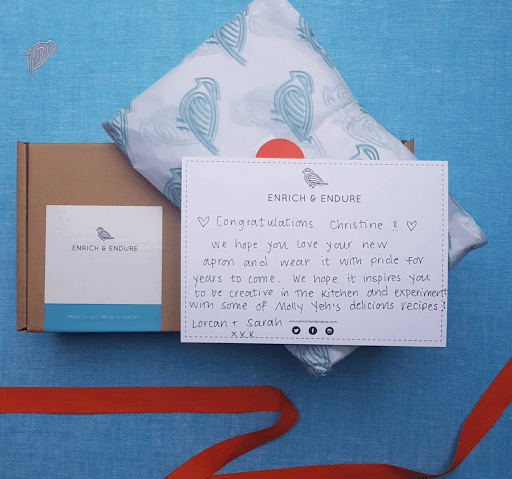
“We are starting to see people unboxing their apron box/package and documenting the experience on social media to comment on how much they love it, which is amazing for us to see!” Sarah and Lorcan Quinn, Enrich and Endure
It used to be that your lovely custom printed tissue paper would only be seen by your customers. With the power of social media, however, your reach can be amplified considerably.
It’s quite common to see customers taking photos of their orders, packaging and all, and uploading it to Instagram where it can be seen by hundreds if not thousands of their followers. These are thousands of potential customers who are now aware of your brand and your unique way of engaging customers! Brands often focus on “influencer strategies” to try to reach as many people as possible, but the real opportunity lies in genuine referrals from your typical customers!
The takeaway here? Using custom tissue paper for packaging is a clever marketing strategy. It provides a fantastic value proposition by leveraging user-generated content for your benefit. It’s a visual pitch to potential customers about how you like to do business – with great style and great service.
Why You Should Use noissue:
Low minimums
“One of the biggest reasons I refreshed my packaging was because I could! The low minimums give me the ability to try new designs without having to overcommit.” Angie Chua, Bobo Design Studio
Custom packaging has long been out of reach for small businesses due to high MOQs (Minimum Order Quantities) which make the upfront cost too steep. noissue has always believed that the benefits of custom-branded packaging should be available to every stage of business.
That’s why we have such competitive prices, with the MOQ for our custom tissue paper printing starting at just 250 sheets! We make it easy for you to dip your toe into the world of custom packaging, or to get experimental and refresh your designs as frequently as you want.
A simple design process
“I chose noissue for my custom tissue paper as I found the team to be customer-oriented with their communication, ensuring satisfaction in their clients like myself. The design part is totally up to me and they just make it so easy to create and place an order online.” Ayla Pena, The AYLA View
Whether you are a pro designer or a novice, don’t worry – we have you covered! Our design process allows businesses to create the perfect custom tissue paper logo or full design. We offer two options to our customers depending on their needs. Our online design tool allows you to upload your logo and choose from existing templates, while our offline design tool is where completed designs can be uploaded directly. With both options, we will have a completed proof back to you within 24 hours! It’s fast, easy to use, and takes all the stress out of the process.
Always eco-friendly
“Working together with brands like this who are doing the best for people and the planet, are the perfect brands to align my own business with!” Tanya Hodgson, The Book Playbox
Sustainable packaging is fast becoming a major asset for both brands and consumers. noissue tissue paper is acid-free and FSC certified as both environmentally and socially sustainable. We also only use 100% renewable soy-based inks for colored tissue paper printing. This makes our custom tissue paper completely recyclable, as well as producing much more vibrant ink colors for your design!
Additionally, all customers have the option of joining our Eco Packaging Alliance. By joining you can select an area of the world in need of reforestation to plant a tree, AND get a cool badge to show off your commitment on your website!
All of us should be doing our bit as businesses to help protect the planet. So, why not make one of those ways designing some fantastic and eco-friendly custom tissue paper?
]]>
Tue, 03 Sep 2019 18:43:24 +0000 https://www.noissue.co/blog/unboxing-with-ted-and-kip/
The unboxing experience was first popularized through the trend of unboxing videos on social media. But unboxings have grown far beyond the confines of YouTube. In 2019, they are a sophisticated branding and marketing strategy for eCommerce companies.
But why does the ‘experience’ of how a product is received matter so much? After all, a nicely decorated cardboard box doesn’t actually change anything about the products inside.
It matters for one very simple reason. Displaying great customer service positively impacts brand perception, and so increases the odds that a customer will shop with you again. Stellar product presentation also gives your customer something to talk about! Did you know that 80% of customers will recommend a company to friends and family after a great customer experience?
So, an unboxing experience channels two powerful marketing strategies: word of mouth and repeat customers. We speak to Anna Carrol-Smith of Ted & Kip about how she created a fantastic unboxing for her own customers!
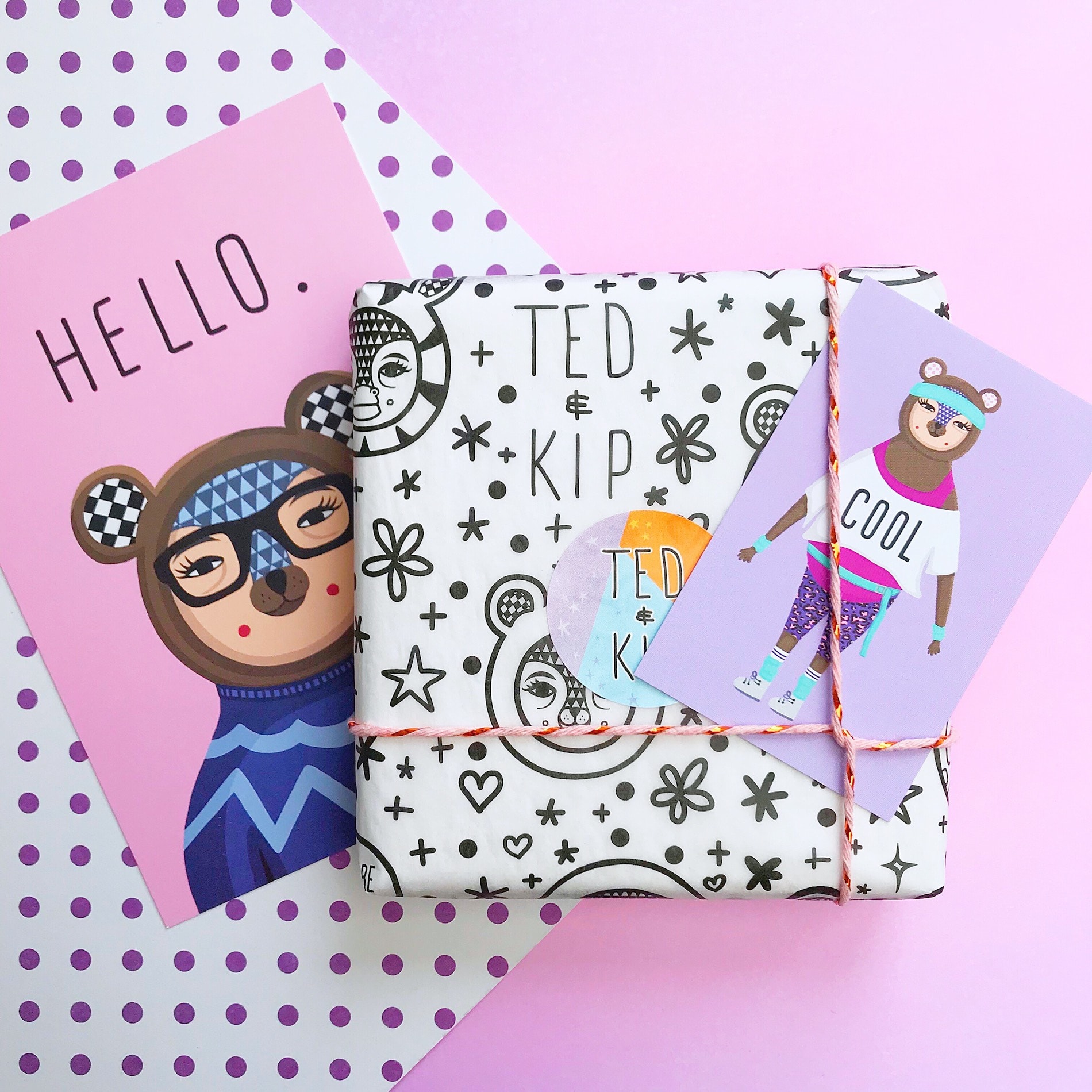
(In Anna’s own words):
“My name is Anna and I’m based on the (mostly) sunny south coast of the UK. I started Ted & Kip in the autumn of 2016, as I had a small baby and a toddler at that time and wanted to be able to work around them. I’d also noticed that there was a gap in the market for illustrations and design that were colourful and magical but not overly sweet – not all unicorns are cute!”
“So, I started off by designing a small collection of enamel pins and woven fabric patches. Luckily these were well-received, and we grew from there! My product range now includes prints, cards, totes, jewellery, metal straws, bag charms, and I have a collection of washi tape coming soon!”
“I usually choose which products to add to my collections based purely on what I really want to have a go at designing! I am primarily an illustrator, and that obviously lends itself to certain things: prints, cards etc. However, sometimes the most fun part is adapting my work and making something new and totally different.”
Creating a Unique Unboxing Experience with Custom Packaging
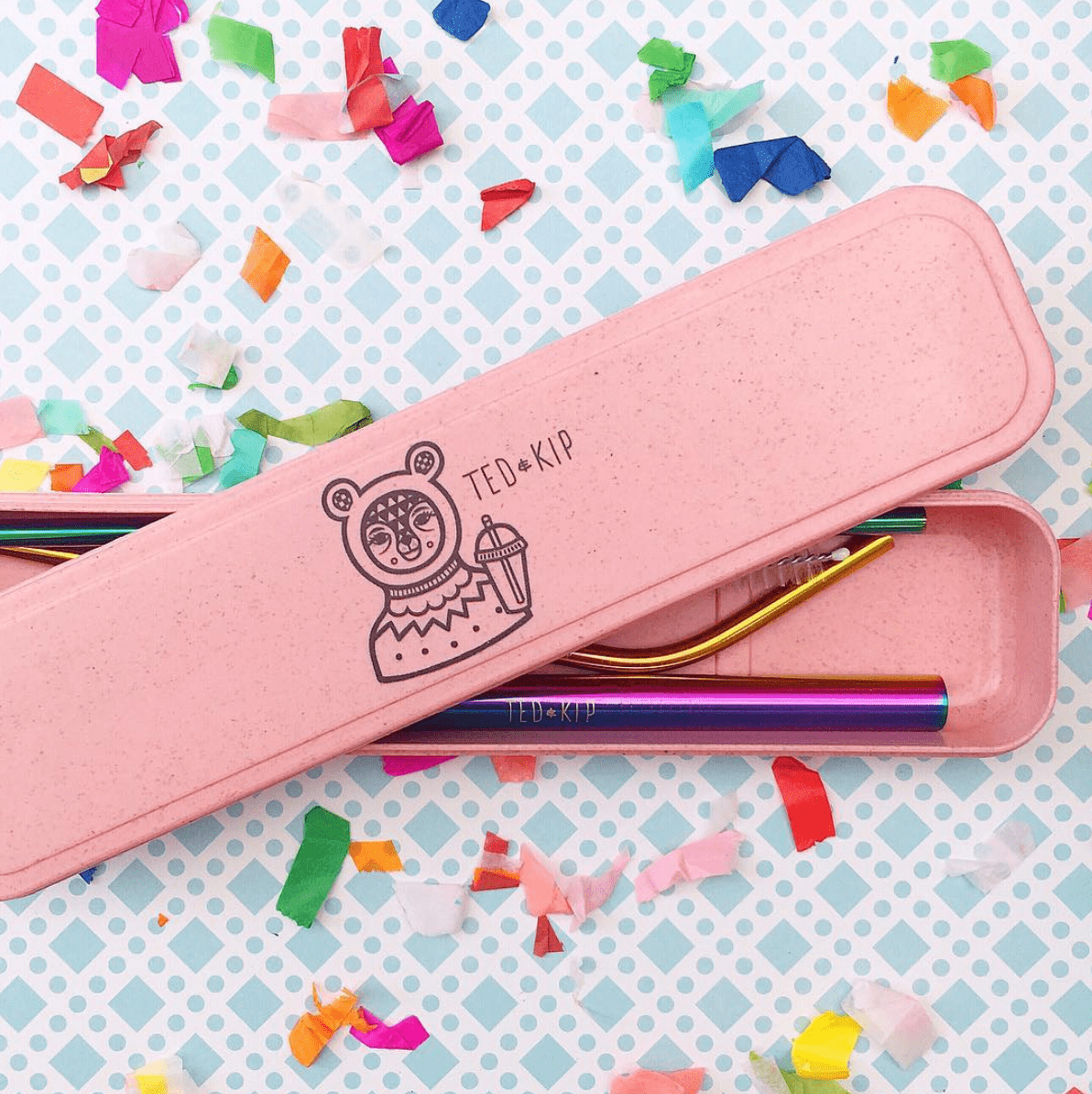
Custom packaging is a vital element in creating a memorable unboxing experience. Why? Because unboxing is all about branding. If you think about the process as a piece of theatre, it’s never going to be enjoyable when the main actor is missing!
The unboxing is a customer’s final interaction with your brand, so you want to make it count. When you have taken the time to wrap up their purchase in packaging of your very own design, it’s a sign that you genuinely care about making them feel special.
For Anna, custom tissue paper was a key touch to communicate Ted & Kip’s creativity and fun, colorful personality:
“It’s important to me that everything I make is unique and full of happiness. When customers open the box or parcel, I want the experience to be one of total delight. Not just because they love what they’ve purchased, but because the whole unboxing experience is joyful!”
“It’s exactly because I wanted to create this unboxing experience that I chose noissue. I wanted every part of our packaging to be recognisable as our brand. I also wanted it to be fun, and this way I have complete control over how the branding of my business looks.”
“When it came to designing my custom tissue paper, my first consideration was colour. The rest of my packaging and branding is super colourful and I knew I wanted the actual design on the tissue to be very busy and intricate. To stop it from being overwhelming, I decided that black and white would be the best choice.”
“It was important that the design was fun and also obviously immediately recognisable as Ted & Kip, so I decided it should have a number of our signature animal faces (with one of them telling my customer how awesome they are, as my customers are all awesome!).”
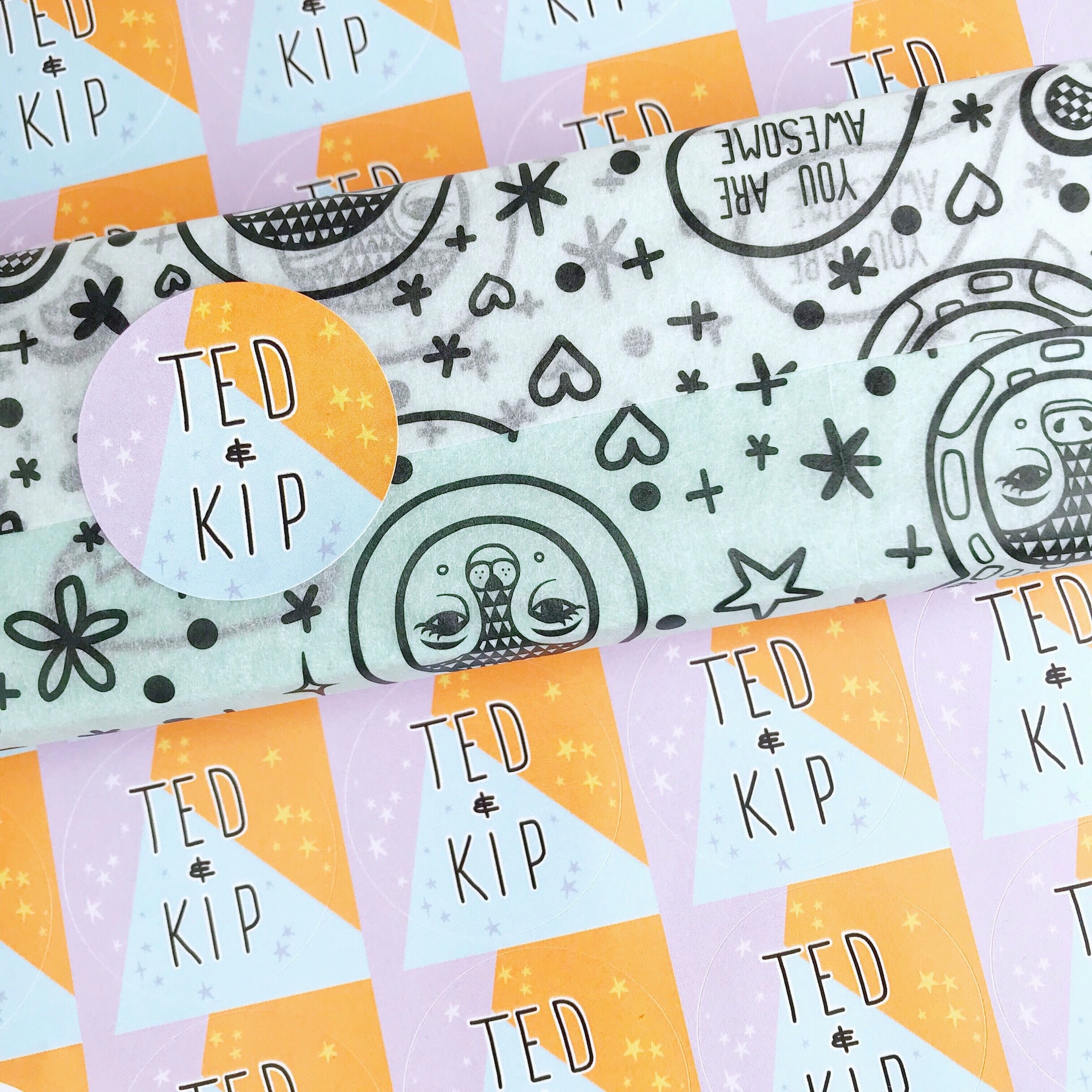
“When packing our parcels to send out to customers, every step of the unboxing process has been carefully thought out. The parcel arrives with one of our brightly-coloured illustrated stickers on the outside, which makes it instantly recognisable as Ted & Kip.”
“When you open the package there is rainbow confetti and then our beautiful noissue custom tissue paper! Every order also contains a sticker for the customer and (depending on the size) an illustrated postcard. Our thank you cards are also bright and illustrated. All these elements are in contrasting colours to culminate in a bright and happy visual experience, and this is before you have even gotten to the products!”
Pro tip: A personal note is a lovely finishing touch to your unboxing experience. In particular, putting in the time to create a handwritten note really helps your customer feel a more personal connection with your brand!
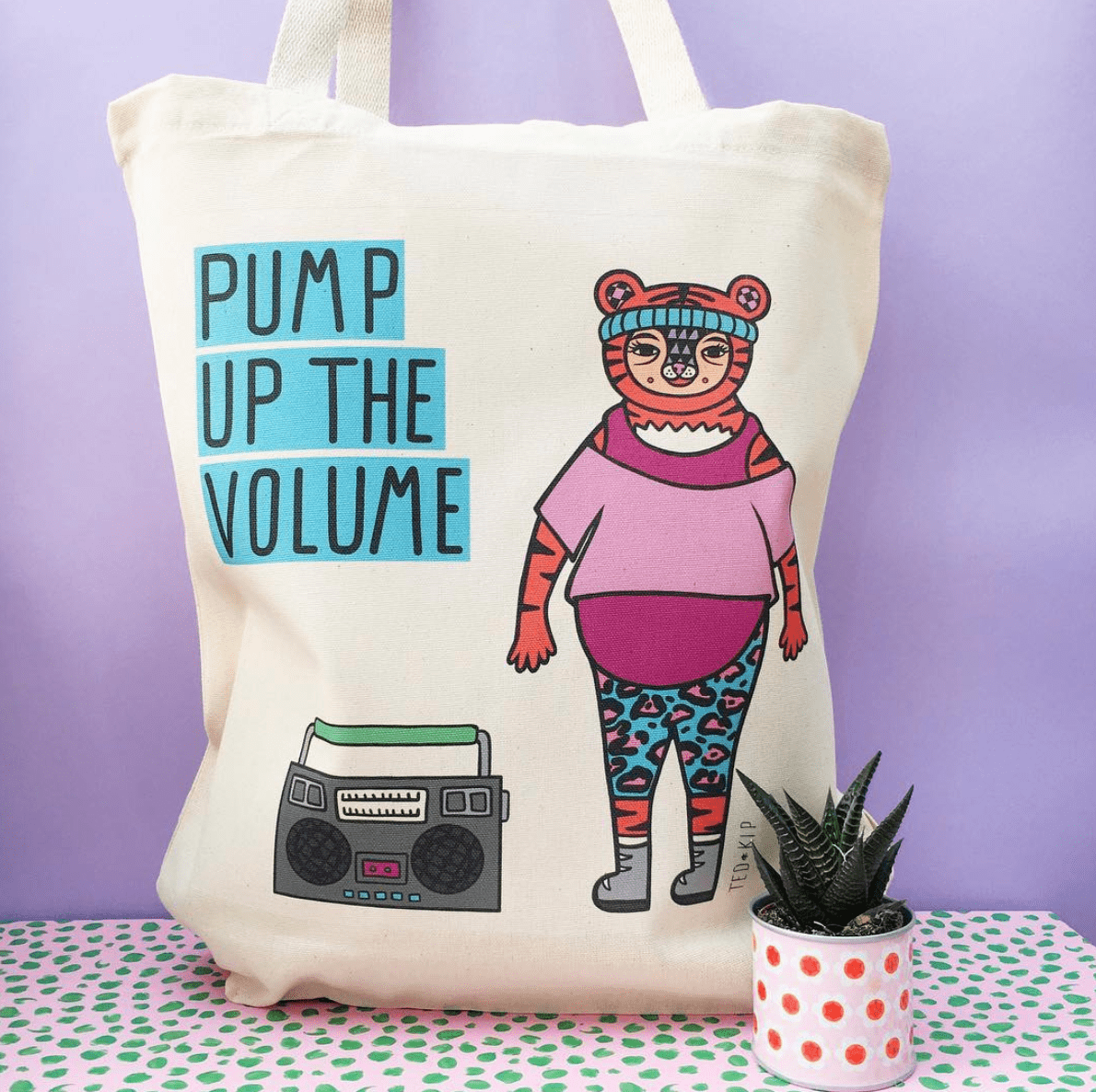
Putting effort into your unboxing experience doesn’t have to mean forgoing environmentally-friendly practices! By using noissue’s acid-free and FSC-certified custom tissue paper and channeling sustainability through her product range, Anna has worked hard to make her brand as green as possible:
“Sustainability is something that has become very important to my brand. I have to admit that this is a continuing work in progress, and something that I am constantly reassessing and developing. I’m always trying to find ways of limiting, for example, my use of single-use plastics in my packaging.”
“I also try and find ways to make the most environmentally-friendly choices when choosing which products to produce. My tote bag collection is a good example of this, they are all 100% fair trade certified cotton and printed using sustainable practices. I also have a range of metal drinking straws which means that my customers can also make the choice to ditch some single-use plastics by using my products!”
To read more about creating a memorable unboxing experience, check out our full guide!
]]>
Mon, 26 Aug 2019 17:46:51 +0000 https://www.noissue.co/blog/7-common-myths-about-outsourcing-order-fulfillment/
Every small business in the eCommerce world wants to sell a lot of products. It’s part of the natural progression of growth in business.
But with growth comes growing pains. Old processes have to be retooled to allow an ecommerce business to scale. One of the first processes to become unwieldy in a growing business is shipping. Many business owners find themselves suddenly asking the question “should we be outsourcing order fulfillment?”
It’s a big question, and an intimidating one. At Fulfillrite, we fulfill orders for other businesses. When onboarding new clients, we often answer questions to help small business owners understand whether outsourcing order fulfillment is right for them.
In this article, we’re going to bust some of the common myths about outsourcing order fulfillment. Many of these myths start not from misinformation, but rather anxiety and a poor understanding of what outsourcing fulfillment actually looks like.
Myth #1: “Order Fulfillment is Expensive”
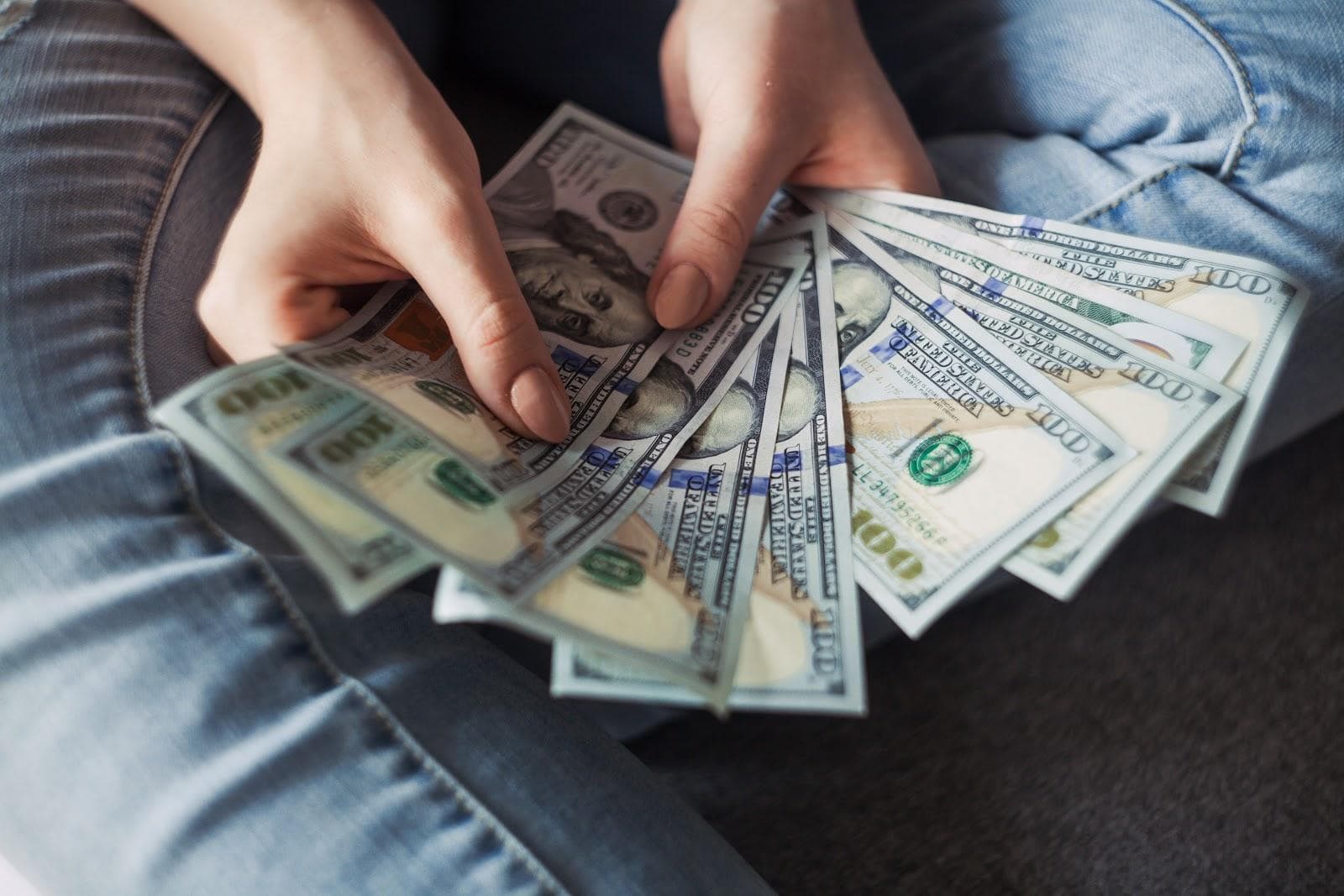
By far the most common myth about order fulfillment solutions is that they are expensive. Many people who look at outsourcing order fulfillment are uncomfortable with the charges. They see a fee of about $2.00 per order plus postage. They see account maintenance fees and storage fees. There are various value-added services which cost additional money.
Order fulfillment pricing can seem complex on the outside, but here are a few things to remember. First, fulfillment companies can negotiate lower shipping costs. Lowe shipping rates will save an enormous amount of money for you in the long run, and is often enough to offset other per-order charges.
Order fulfillment companies also benefit from both economies of scale and process efficiency in a way that small businesses cannot. Fulfillment companies order supplies in bulk, meaning that supplies cost less per unit. Additionally, when all you do all day is pack boxes and ship them out, you get really good at cutting down on any wasted time in the process. This helps keep overhead low, and fulfillment companies – all of whom are competing fiercely – pass the savings along to their customers.
Lastly, even if outsourcing fulfillment appears more expensive than in-house fulfillment, a small business will inevitably save on three costly resources. The first is time, as self-fulfillment is a very time-consuming process for small businesses. The second is labor, which ultimately costs money too. The third is storage space, which also costs money (or at the very least, unnecessarily clutters up an office with square footage spare). Overall, this makes outsourcing order fulfillment more cost-effective than it might appear.
Myth #2: “My Business Isn’t Big Enough for Order Fulfillment”
It is true that order fulfillment is not a panacea for every online store. Indeed, a business needs to have at least some consistency in order volume to break even on account maintenance fees. That said, the threshold is pretty low. Once your business is shipping 100 orders per month, or any many cases, 50 per month or more, you will break even.
Haven’t crossed that threshold yet? It’s still worth considering outsourcing fulfillment in advance. The ability to scale a business rapidly requires you to knock out as many obstacles to growth as possible. Shipping orders can become nightmarishly unwieldy very quickly. All it takes is one successful flash sale to flood a small business with more orders than can be shipped!
Not sure whether you need to think about outsourcing order fulfillment yet? Check out our guide on the 6 Signs Your Business Needs Third-Party Logistics!
Myth #3: “Outsourcing Order Fulfillment is Complicated”

Every company has a slightly different order fulfillment process, so we can’t necessarily speak to the specifics of others. However, to dispel the myth that outsourcing order fulfillment is complex by necessity, here’s an overview of how we onboard clients:
You enter each of your unique items in our system (SKUs).
You integrate your shopping site software with our system, or enter orders manually.
When you have inbound shipments, notify us so we can receive them.
That’s it! That’s all there is to it. We know you’re busy, and we have no interest in dragging out the process. There are parts of order fulfillment that are, indeed, very complicated, but we – like many of our peers – do our best to eliminate complexity from your experience.
Myth #4: “If I Outsource Order Fulfillment, I’ll Lose Control over My Business”
The fear of losing control over your business is a valid one. Letting another company hold onto your inventory and handle a customer-facing aspect of your business is nerve-wracking. There are, however, a few things to keep in mind here.
As we previously mentioned, outsourcing fulfillment will free up – at the very least – time, physical space, and labor hours. Outsourcing fulfillment will give you more control over those critical resources so you can better showcase your brand. At worst, you’re giving up one form of control for another form of control.
If you’re worried about being locked into a contract, that’s also a valid concern. If you’re looking to outsource fulfillment, you can always ask ahead of time, “Do I need to sign a contract?” If you don’t like the answer, you can walk!
Lastly, order fulfillment services often provide quality software that gives you visibility into the fulfillment process. We’ll go into this in more detail later, but for now, just remember that this data can actually give you more control over your business.
Myth #5: “If I Outsource Order Fulfillment, The Customer Service Will Decline in Quality”

Let’s be honest with each other here. If you hire a bad fulfillment company, customer service will decline. This is a very reasonable fear. However, there are steps small business owners can take to make sure they hire the right company.
The best way to make sure outsourcing order fulfillment does not cause a decline in customer service is to vet the company beforehand. You can learn a lot just by reading online reviews and speaking directly with company staff.
If you find a good fulfillment company, they can ship faster on average with more consistent quality than your small business can. It’s a natural result of shipping all day, everyday and learning all the subtle tricks to improve the process. Fulfillment companies are a goldmine of information – we recommend that you make the most of what they can teach you!
Still worried about fulfilling customer expectations? You can still directly deal with customers. Some fulfillment companies will offer customer service, but you don’t have to take them up on that.
Myth #6: “If I Outsource Order Fulfillment, I’ll Lose Visibility into the Process”
It is true that if you outsource fulfillment, you won’t be able to watch packages being shipped. In that sense, you will lose visibility into the process.
There is a silver lining here, though. Fulfillment companies, by necessity, have to have complex storage systems and keep accurate inventory records. All this data and the business processes that support the collection of this data, can be really useful to you. Many companies, such as our own, will grant you access to detailed information on your inventory and the supply chain, as well as the whereabouts of every single package. In fact, you’re likely to end up with more data than you would have with self-fulfillment!
Myth #7: “Fulfillment Companies Won’t Handle My Inventory Carefully”
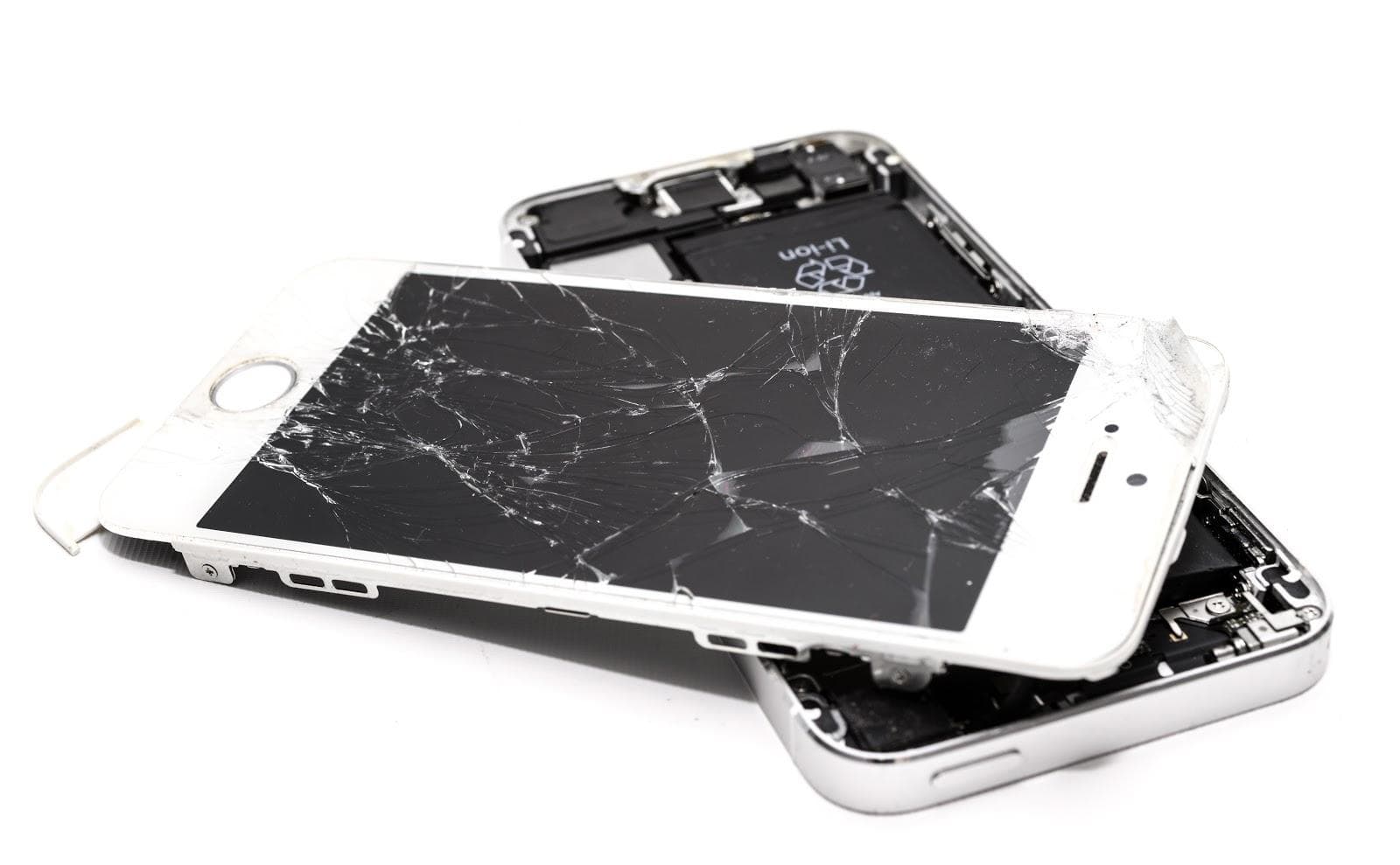
Much like the above point about customer service, this is a valid concern. Many fulfillment centers will rush goods out the door. This is particularly common around the holidays when online retail merchants are rushed off their feet.
The problem isn’t universal, though. Some companies treat every item like it’s solid gold. Other companies simply do not. All you can do is vet fulfillment companies ahead of time and choose one with excellent customer service.
Final Thoughts
Outsourcing order fulfillment doesn’t have to be expensive or complicated. Nor will it take away your control or ability to understand the way the business operates. It doesn’t require you to run a massive operation nor will you constantly have to worry about poor customer service or damaged goods.
]]>
Fri, 23 Aug 2019 21:56:38 +0000 https://www.noissue.co/blog/bobo-design-studio/
We talk a lot on this blog about the importance of offering a memorable customer experience as an eCommerce brand. But this applies just as much to the world of brick and mortar retail!
Angie Chua of Bobo Design Studio is one small business owner who understands the importance of making a lasting impression on her customers. She tells us about Bobo’s mission to inspire wanderlust and discovery, and how custom packaging helps her to boost the customer experience both online and offline.
(In Angie’s own words):
“The things we own are a reflection of who we are, of where we’ve been, and where we dream of going. My goods are no exception to this.”
“I’m Angie, and I’m the founder, heart, and soul of Bobo Design Studio. I design and handcraft wanderlust-inspired lifestyle goods for the bohemian rebel, encouraging people to get out and explore the world around them and enrich their soul through adventure and travel. Every piece that I craft, from the illustrations I draw for my pins, stickers, and graphic apparel to my handcrafted leather accessories – even my Wanderlust Travel Passport – is designed to help you celebrate adventure both near and far!”
“The inspiration for my work is all around, but it’s not until we unplug, let our guard down, and take a step back to feel the world around us that true inspiration takes place. So much of what I create is a product of the places I’ve traveled to, and the memories that keep my soul warm. I’m drawn to earthy patterns and prints, and the rich colors found in nature. As someone who loves to travel, it’s essential that function is infused into all of the pieces that I create, making my lifestyle goods appropriate for every day (and not so everyday!) adventures.”
Creating an Engaging Brand Story
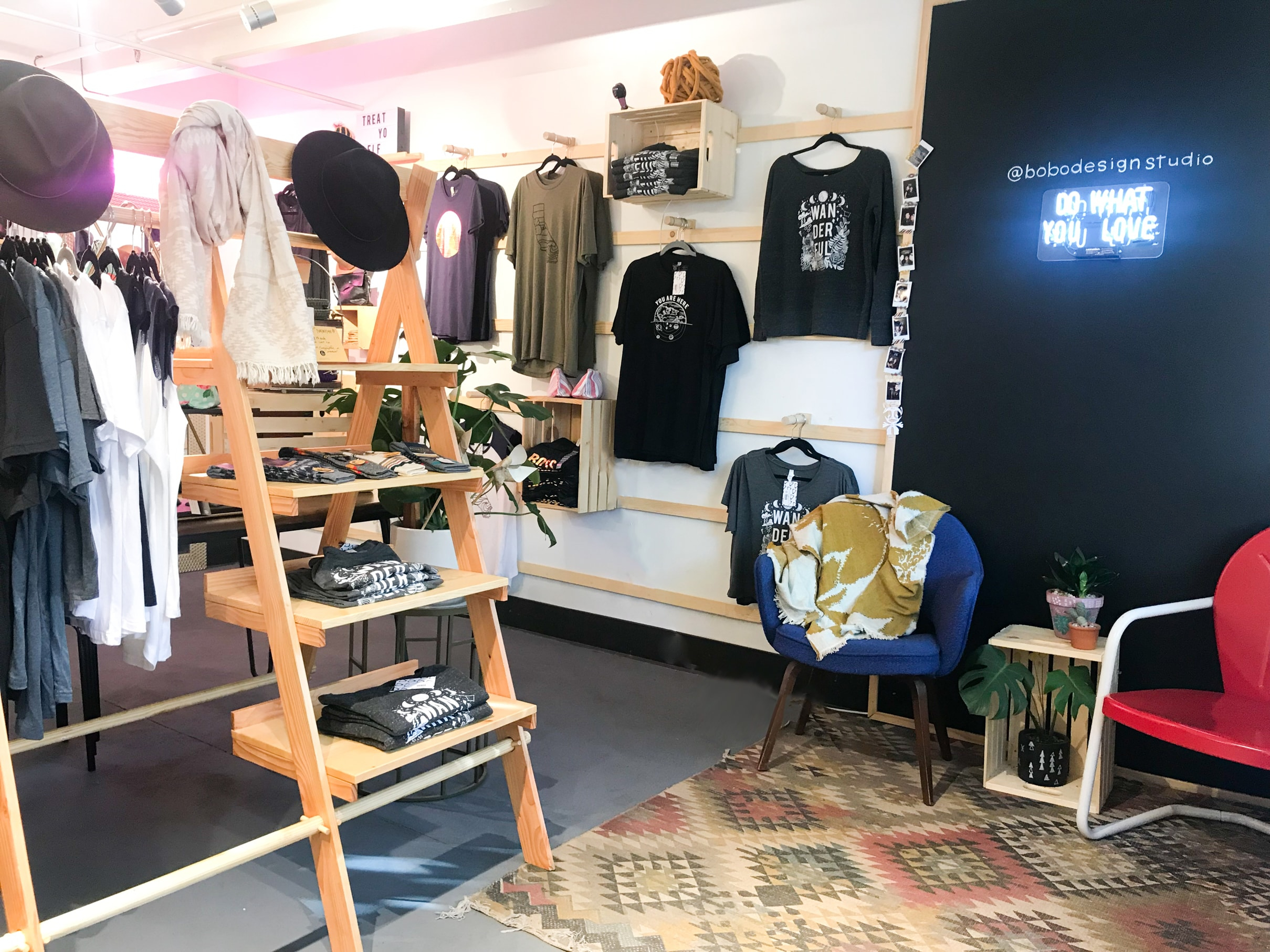
Brick and mortar retail can be a tough place to thrive in, especially when eCommerce often wins out due to convenience. In fact, 34% of consumers in a recent survey identified physical retail as the channel needing the most improvement.
In comparison to fast-growing retail channels like social media and mobile, brick and mortar is often perceived as lacking in innovation. It’s very easy to get caught up in the logistics of running a store, rather than thinking about your customer experience strategy.
As Angie demonstrates, having an engaging brand story is the first step to building a memorable in-store experience:
“I have a neon sign that you see when you walk into my store. It says “DO WHAT YOU LOVE.” Life is too short not to do what makes you happy; once I stopped letting society dictate what success and happiness were for me, it permitted me to live life on my terms. That meant leaving my high-salaried corporate job to run a creative business, and even moving out of our condo to live in a restored 1975 airstream full-time! This is something that I try to infuse into my brand’s core.”
“I care very much about my customer, and the best way I can ensure that they connect with my brand is by being authentic. This means staying true to myself and true to my customer; it means that everything I make is designed to evoke feelings of wanderlust and adventure. I want to create an experience for my customer that makes them want to get out and explore the world!”
For more about improving the customer experience, check out our eCommerce and brick and mortar guides!
Custom Packaging as a Point of Difference 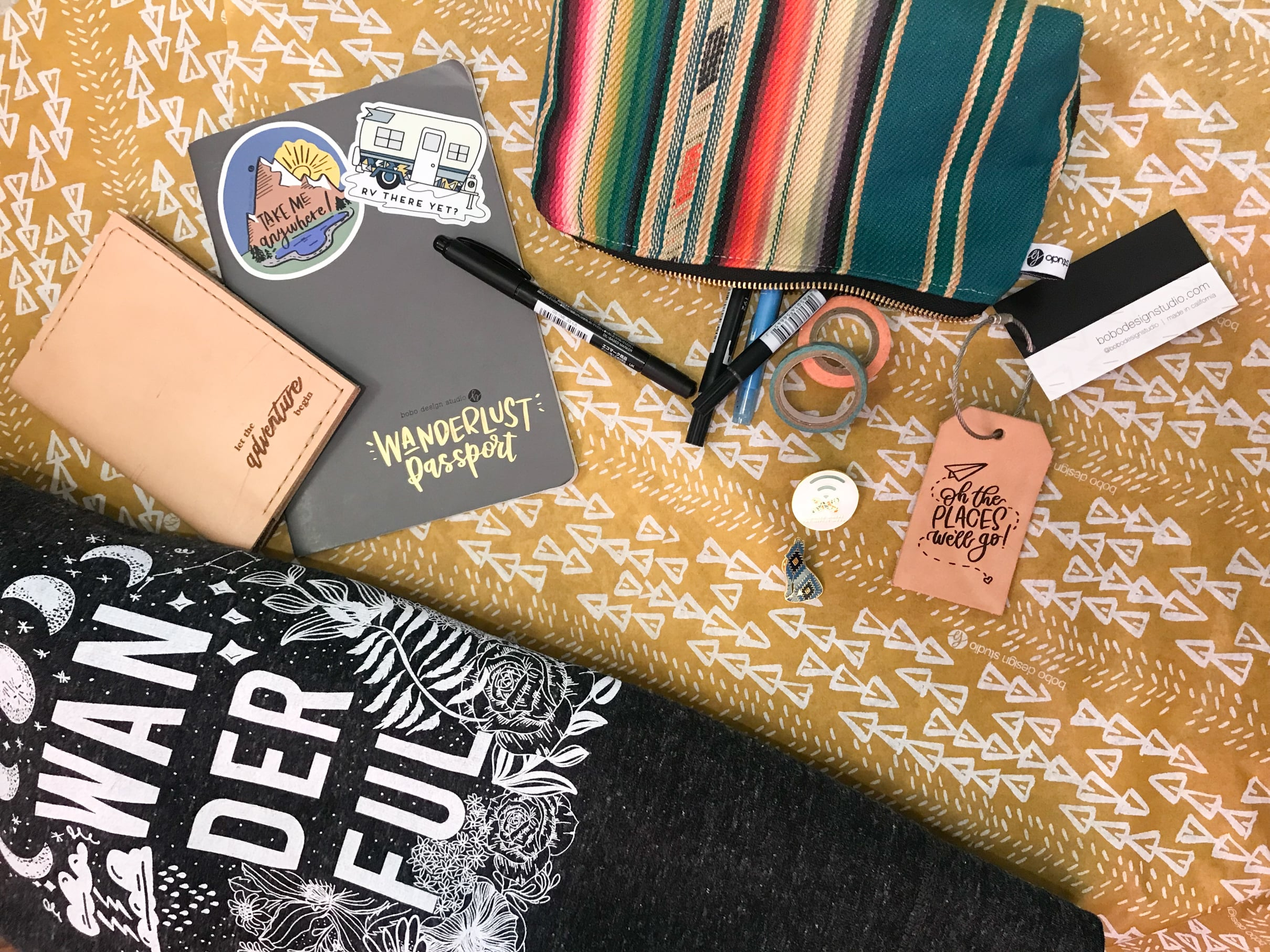
According to research by BRP consulting, 44% of consumers say that they are more likely to become repeat buyers after a ‘personalized’ shopping experience. So, now is a good time to think about how you could take things up a notch within your store!
Integrating custom packaging into your point of sale is a valuable piece of theatre. Why? Because it creates a much more personal connection to your brand. Putting care and attention into how you prepare goods for purchase shows that you go the extra mile to create a positive customer experience. This is the key to being a distinctive independent retailer when it can be challenging to source truly ‘unique’ products for your store.
As Angie explains, custom packaging creates that point of difference which makes you (and your products!) far more memorable:
“You only have one chance to make a killer first impression. To do this, I always pay extra attention to the details; it’s part of my storytelling, and the way I continue to connect with my customers beyond the products themselves.” “How I package and treat my goods is what separates me from others who sell similar products. It’s more than just tissue to protect an item, it’s about creating an entire branded experience from the beginning of the shopping experience to the end. Adding the details and finishing touches tell my customers that this item was something crafted and made with love.”
“I love creating a meaningful unboxing experience for my online shoppers, and carefully packaging products in neatly folded, branded tissue for my in-store shoppers. noissue allows me to elevate my brand in a way that’s not only beautiful and unexpected, but also cost-effective. I love that with noissue I’m able to deliver my products to my customers in a way that is fun, has my brand’s personality, and comes at an affordable price that doesn’t force me to compromise of my personal or brand values.”
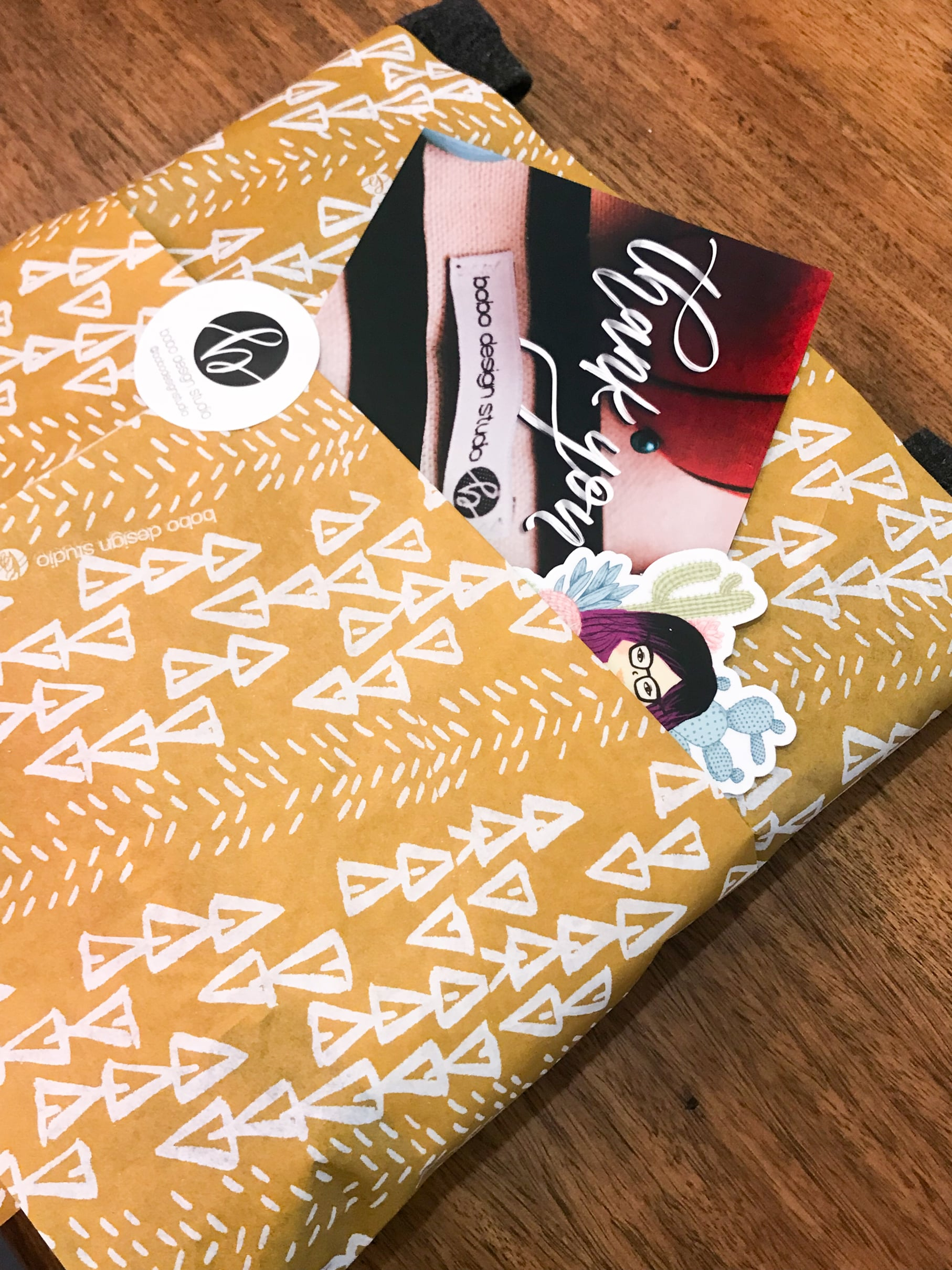
But custom packaging is about more than enhancing the appearance of products. It’s also about adding a greater perception of value. The key to creating a high-value purchase? Making it feel that it has greater worth than the sum of its parts!
Angie’s custom tissue paper imparts value because it offers her customers enjoyment long after they have unwrapped their purchase:
“In a world where brands are competing on things like price, I wanted to ensure that Bobo Design Studio stands out from the pack through my storytelling. noissue allows me to do that without compromise. I know my customers love it because they comment on how they don’t want to throw the tissue away. I even had one customer come back to my store to ask me for a fresh piece of tissue that they could use as wallpaper for their cubicle!”
“The best noissue story is when someone messaged me that she bought one of my items as a gift and wrapped the gift in my tissue paper. After she gifted it, she took the tissue paper back because she loved it so much!”
Already have custom packaging? Why not consider a refresh? Changing your custom packaging design periodically shows that your brand is dynamic, and also gives your customers something extra to get excited about!
noissue’s low MOQs make it easy for businesses to change up their packaging design, whether it’s to help celebrate the season, or just because you fancy a change!
“One of the biggest reasons I refreshed my packaging was because I could! The low minimums give me the ability to try new designs without having to overcommit. I also think it adds to the excitement for my repeat customers. At Bobo Design Studio, I create wanderlust-inspired goods, so naturally, as an artist and a designer, my travels and adventures inspire a lot of my products. I love to create and play with bold prints that reflect the places I’ve been and the colors found in nature.”
]]>
Sun, 02 Dec 2018 23:00:06 +0000 https://www.noissue.co/blog/how-to-dispose-of-your-compostable-mailer/
So, you’ve just received your online order in a noissue compostable shipping mailer! The next step is to close the cycle by disposing of it properly.
These tear resistant shipping bags are made out of 100% corn-based polymers. This means that they will easily compost on a home or industrial compost heap. This creates a circular economy where sustainable packaging materials can be disposed of responsibly by the recipient, without any harm being done to the environment.
So, how exactly does this process work? We’re here to break it down for you (pun intended!)
[embedded content]
1. Remove any adhesives from your compostable mailer
For best results, you will first need to remove any plastics from your compostable mailer. This includes any packaging tape, shipping labels and stickers. (Note: you will not need to remove noissue’s compostable stickers!)
2. Compost it!
If you have a home compost in your garden, you can stick your compostable mailer straight on the heap and leave it to do its thing. It’s as easy as that!
3. No compost heap?
If you do not have a compost heap, it could be a good idea to start one. Sites like Eartheasy and Gardening Know How offer great guides on how to compost and how to set up a compost heap – and it’s a lot easier than you might think!
Other options include seeing whether there is a composting pick-up service or community compost heap in your area. If not, why not set up a petition to start one!?
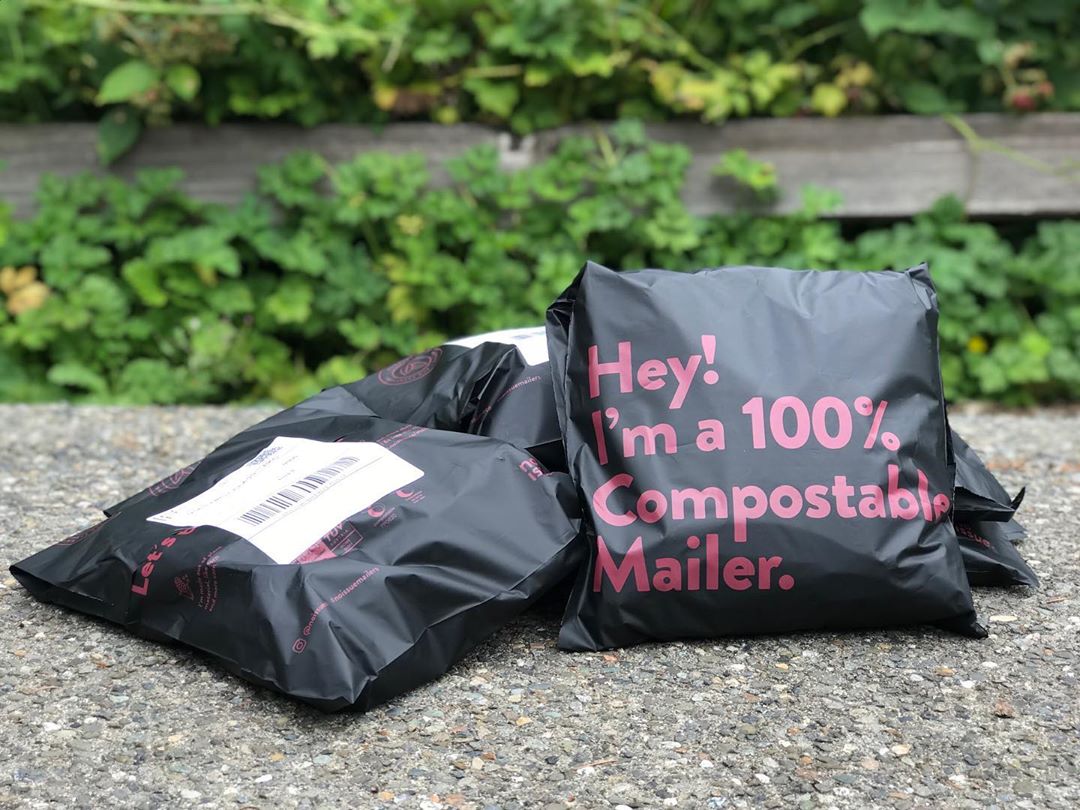
What is the difference between biodegradable packaging and compostable packaging?
These phrases get used interchangeably, which makes things pretty confusing for those wanting to dispose of packaging responsibly! Here is a quick run-down:
While just about every packaging material is technically biodegradable, not everything is compostable. The term ‘biodegradable’ sets no limits on how long the process takes, or the environmental impact it has. Even a regular plastic poly mailer is biodegradable – but the process can take hundreds of years! Needless to say, this doesn’t constitute sustainable packaging.
Moreover, while everything will break down eventually, harmful residues can be released during the process. This is why plastic pollution is a two-fold issue. It already has an adverse impact on ecosystems as a form of litter. But as a petroleum-based material, chemicals will leach out of plastic as it biodegrades – which is bad news.
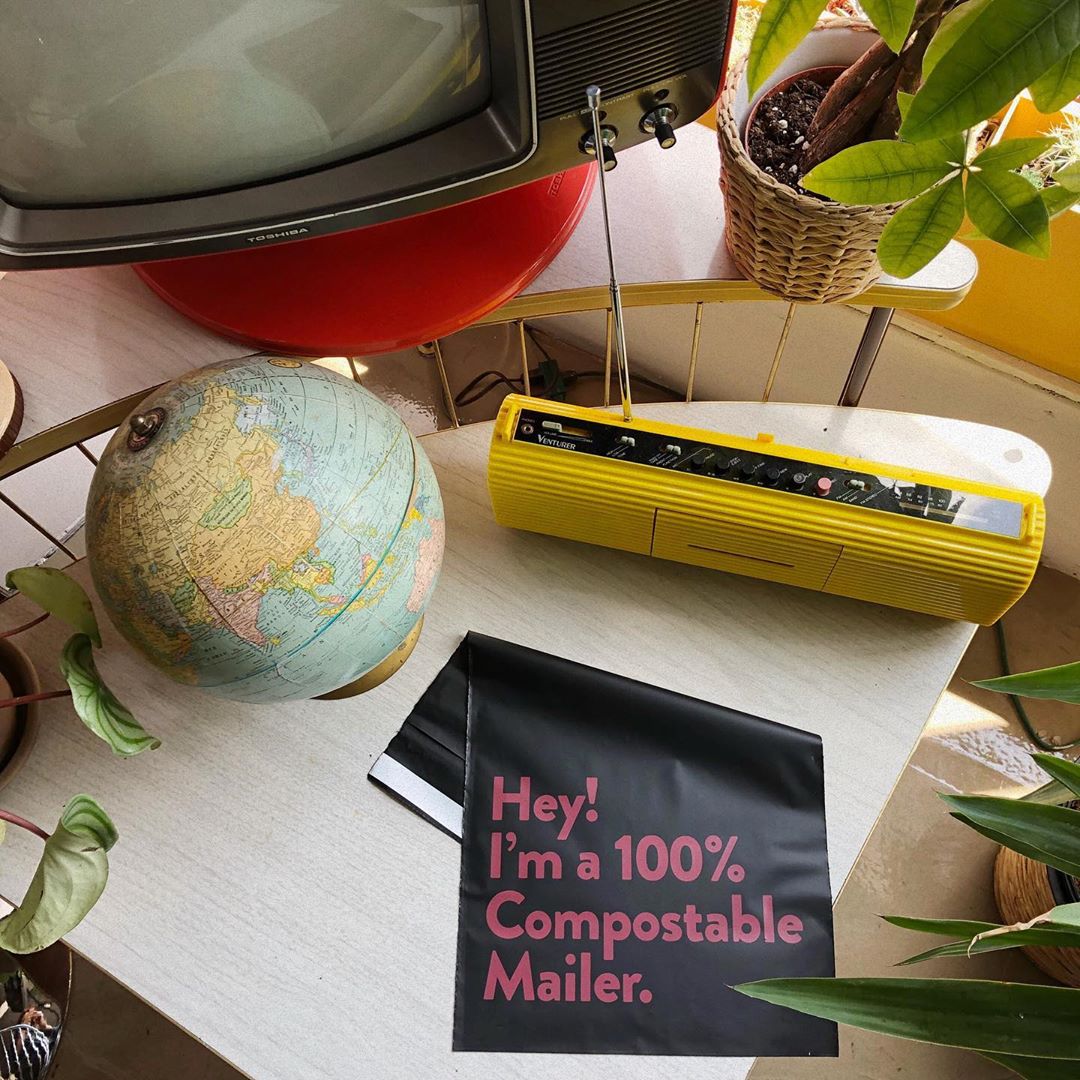
Compostable packaging differs in that it will break down into natural elements in a compost setting, usually at a much faster rate than ‘biodegradable’ products. To facilitate the composting process, certain steps need to be taken. i.e. Putting your compostable mailer on a home or industrial compost heap. Compostable packaging can only be certified if the process is completed within a reasonable timeframe. For example, to meet the standards for the leading industry certifiers (TUV Austria, BPI and Dincerto) packaging must break down within 90 days in an industrial composting facility, and in 180 days on a home compost – which our compostable mailers do!
Compostable packaging also counts as sustainable packaging because it releases no harmful residues as the materials break down. Our compostable mailers are made from organic composites, so they are ‘returned to the earth’ in the most eco friendly way possible!
With three sizes available and the same durability as plastic mailing bags, compostable mailers are one of the most environmentally friendly packaging solutions available. Add in a straightforward disposal process for customers, and it’s a stress-free way for your business to keep things green!
]]>
Wed, 28 Aug 2019 21:54:27 +0000 https://www.noissue.co/blog/piera-cirefice-on-being-sustainable-as-an-illustrator/

